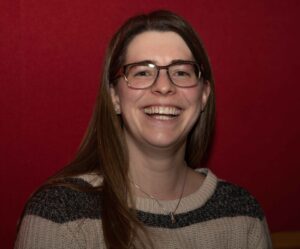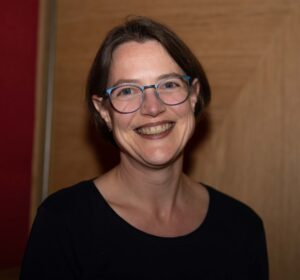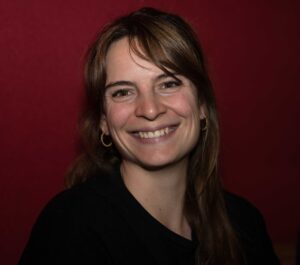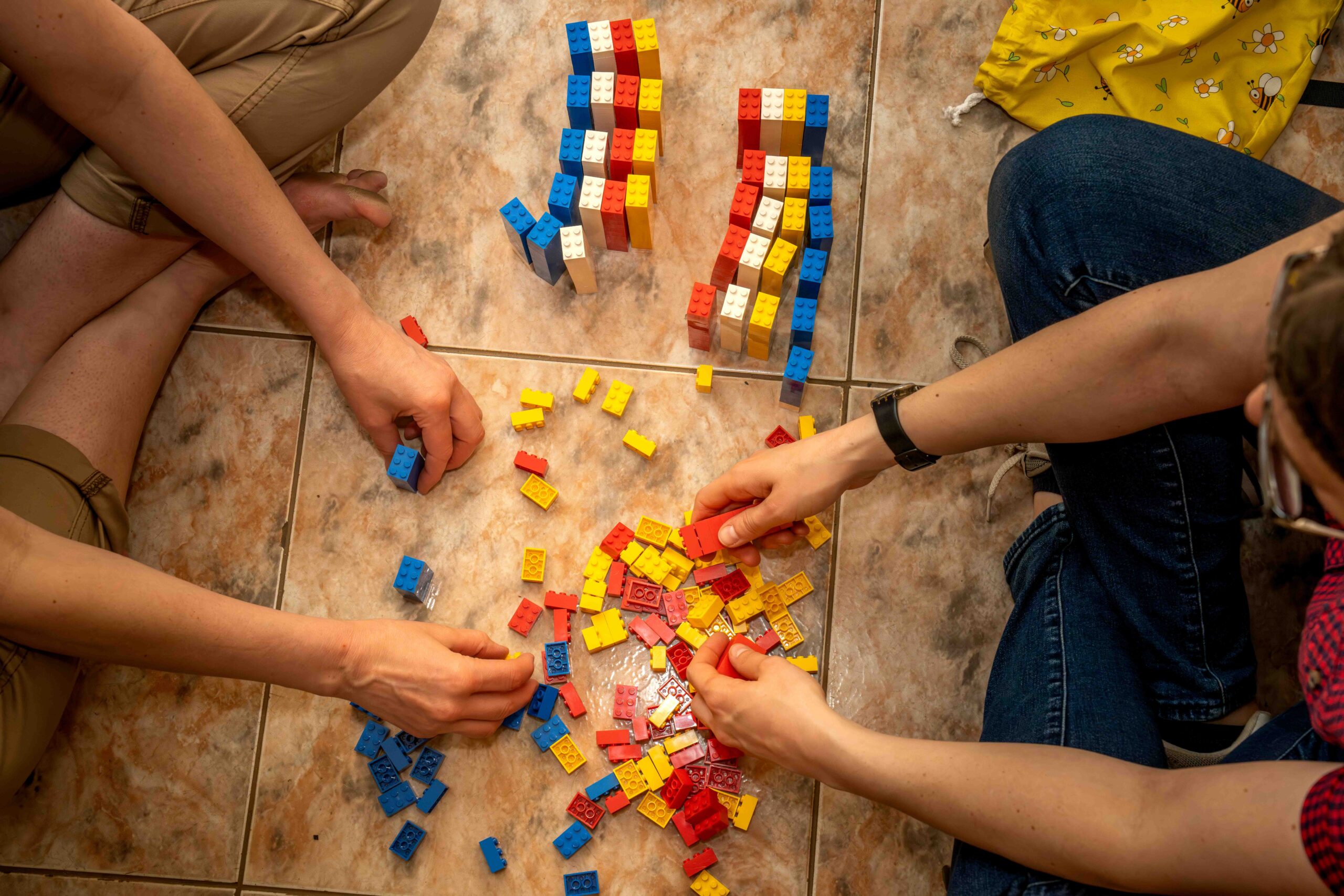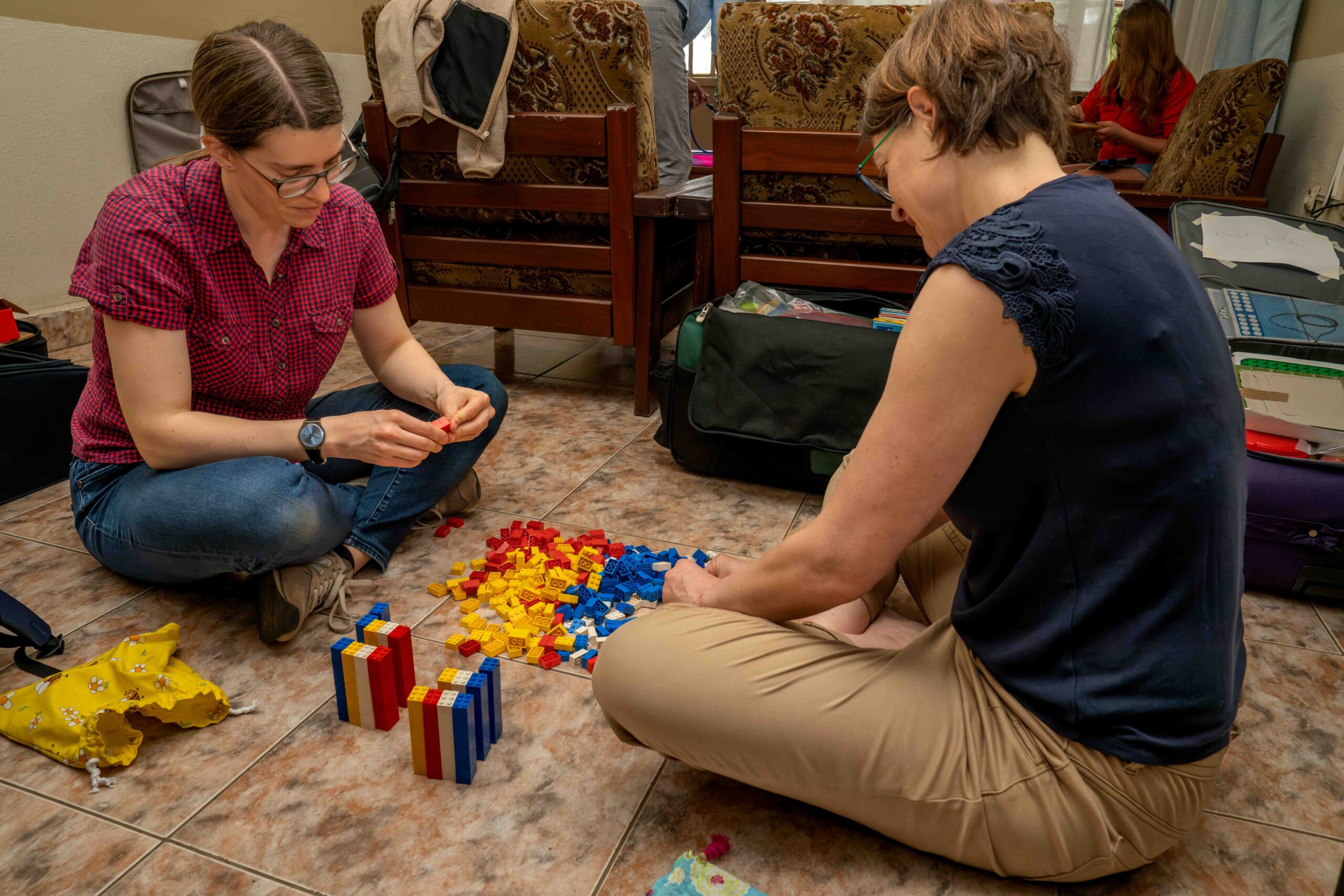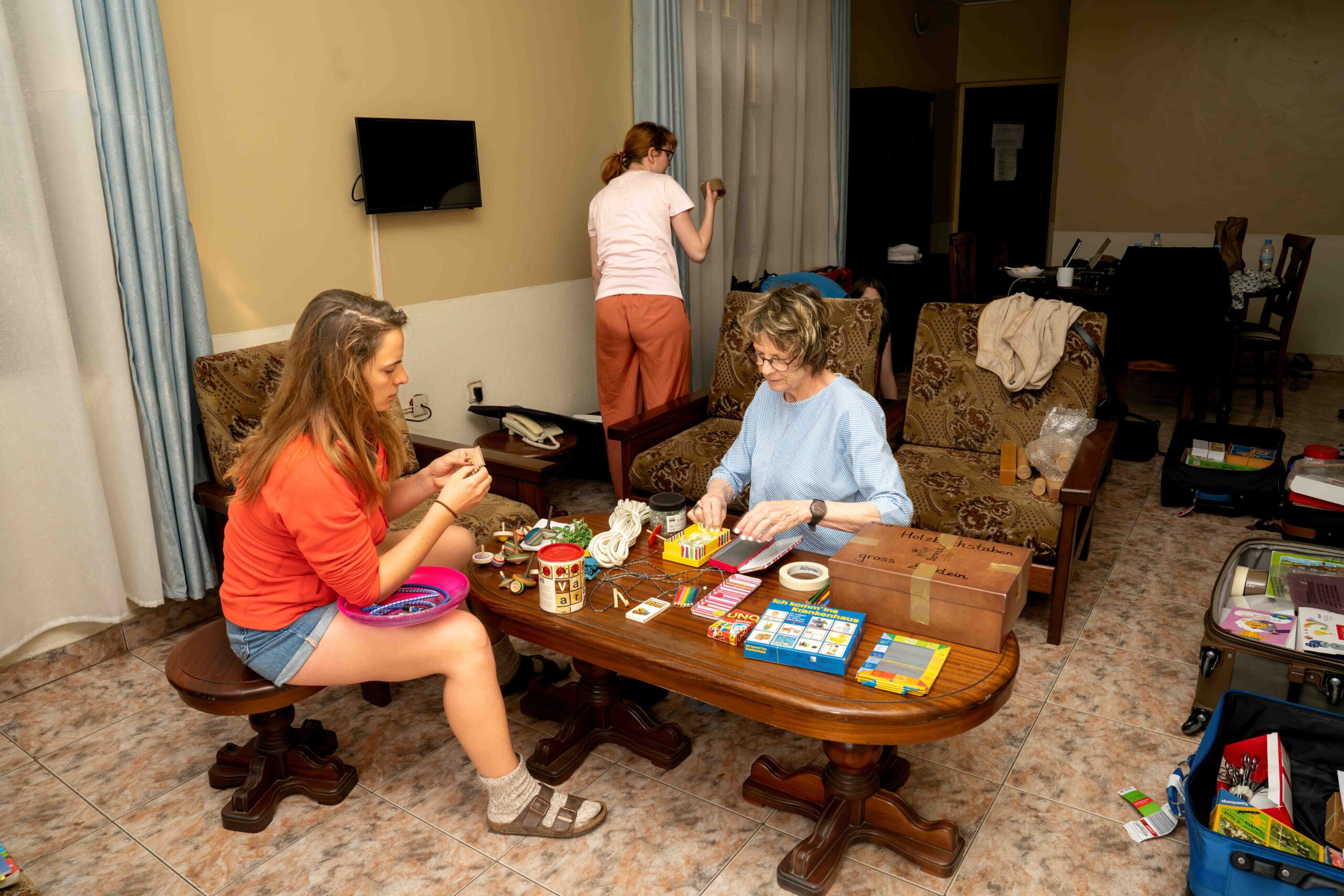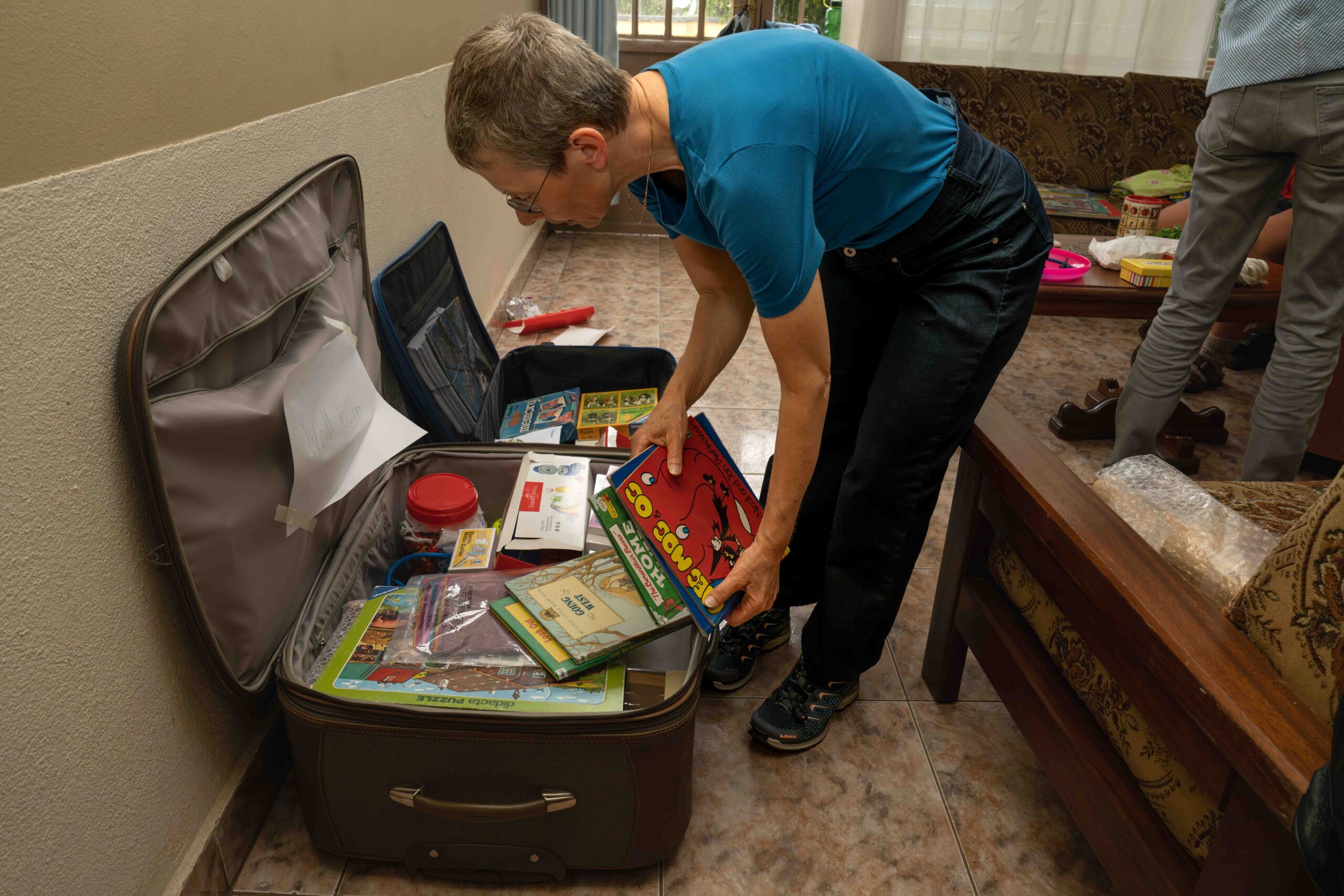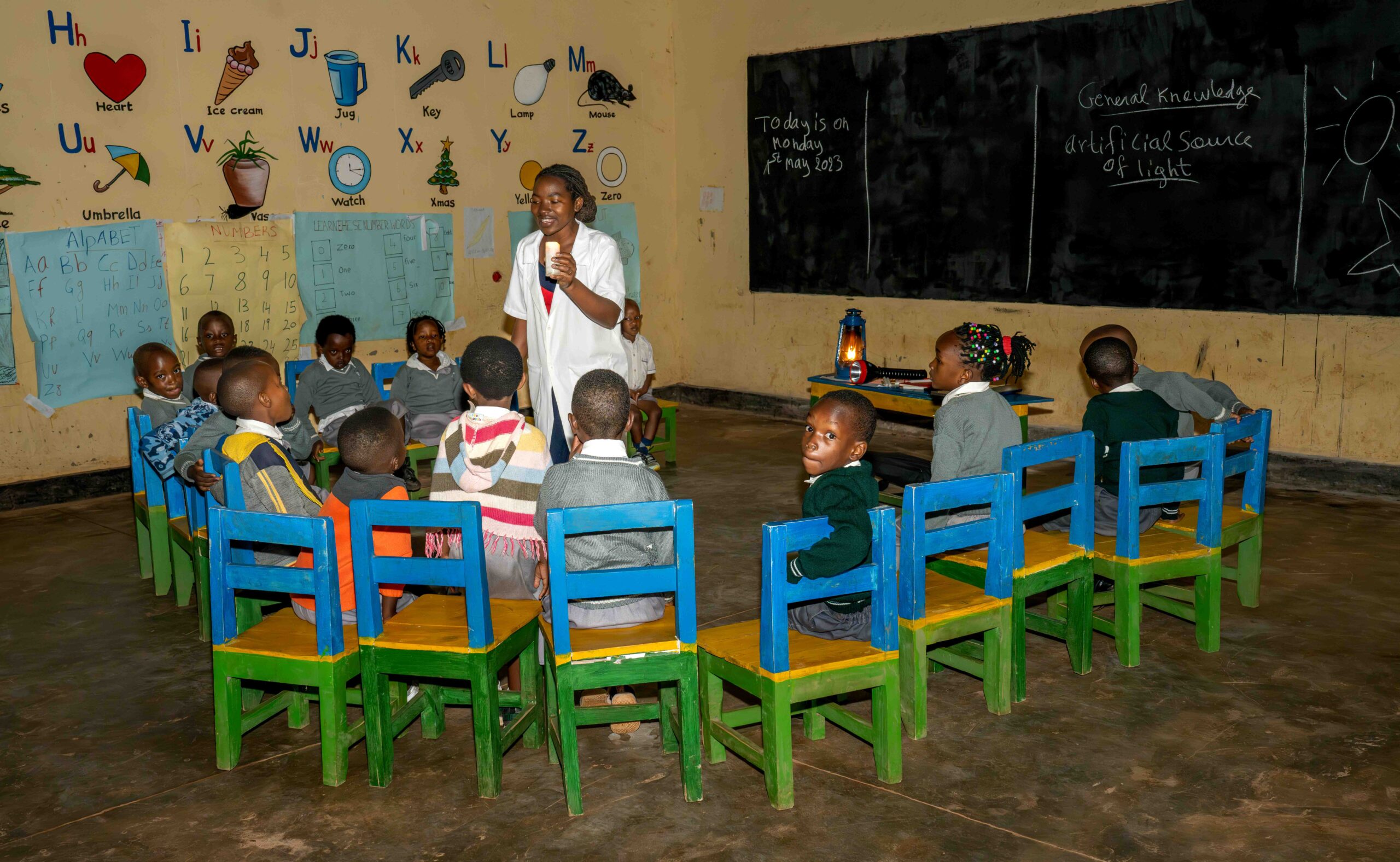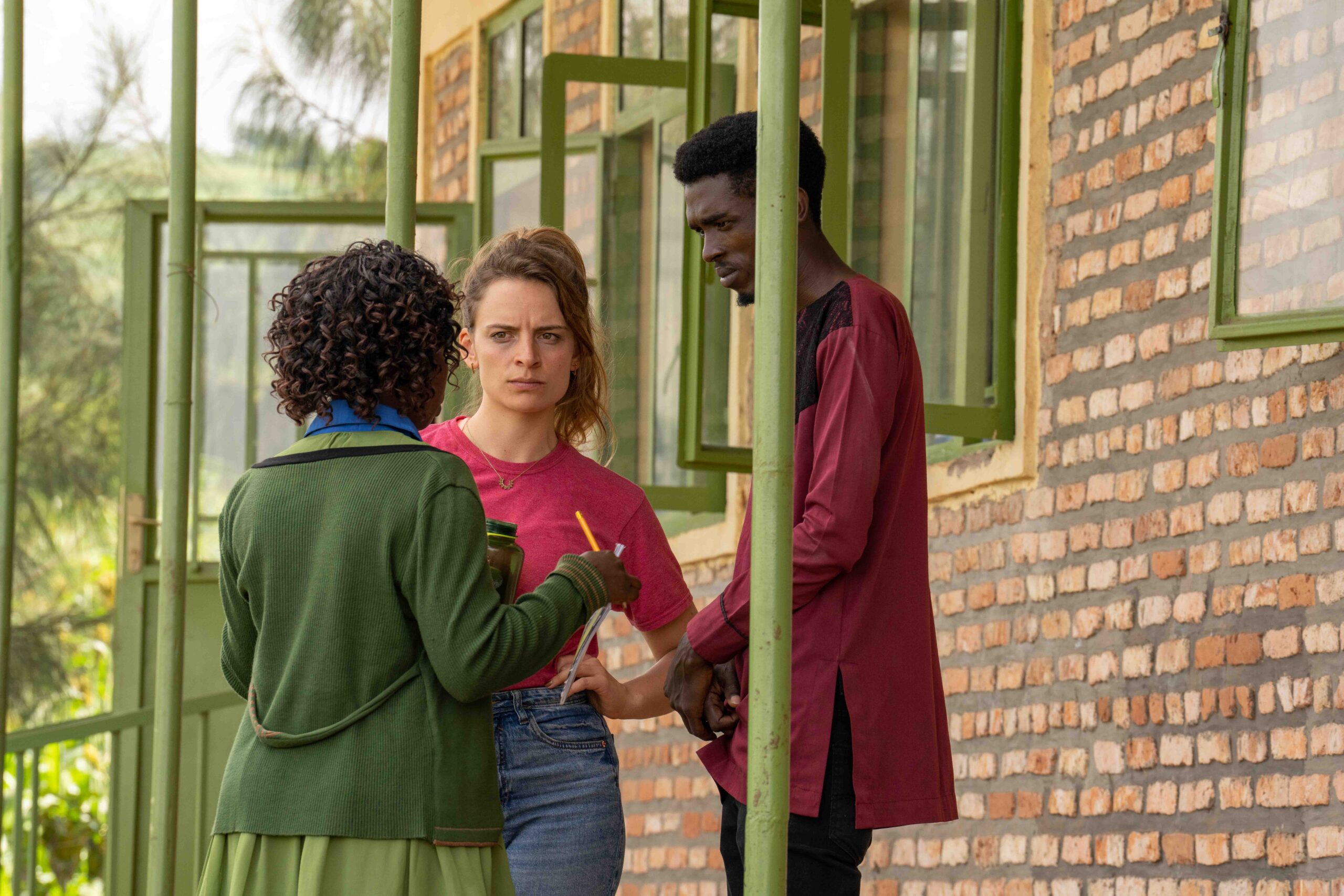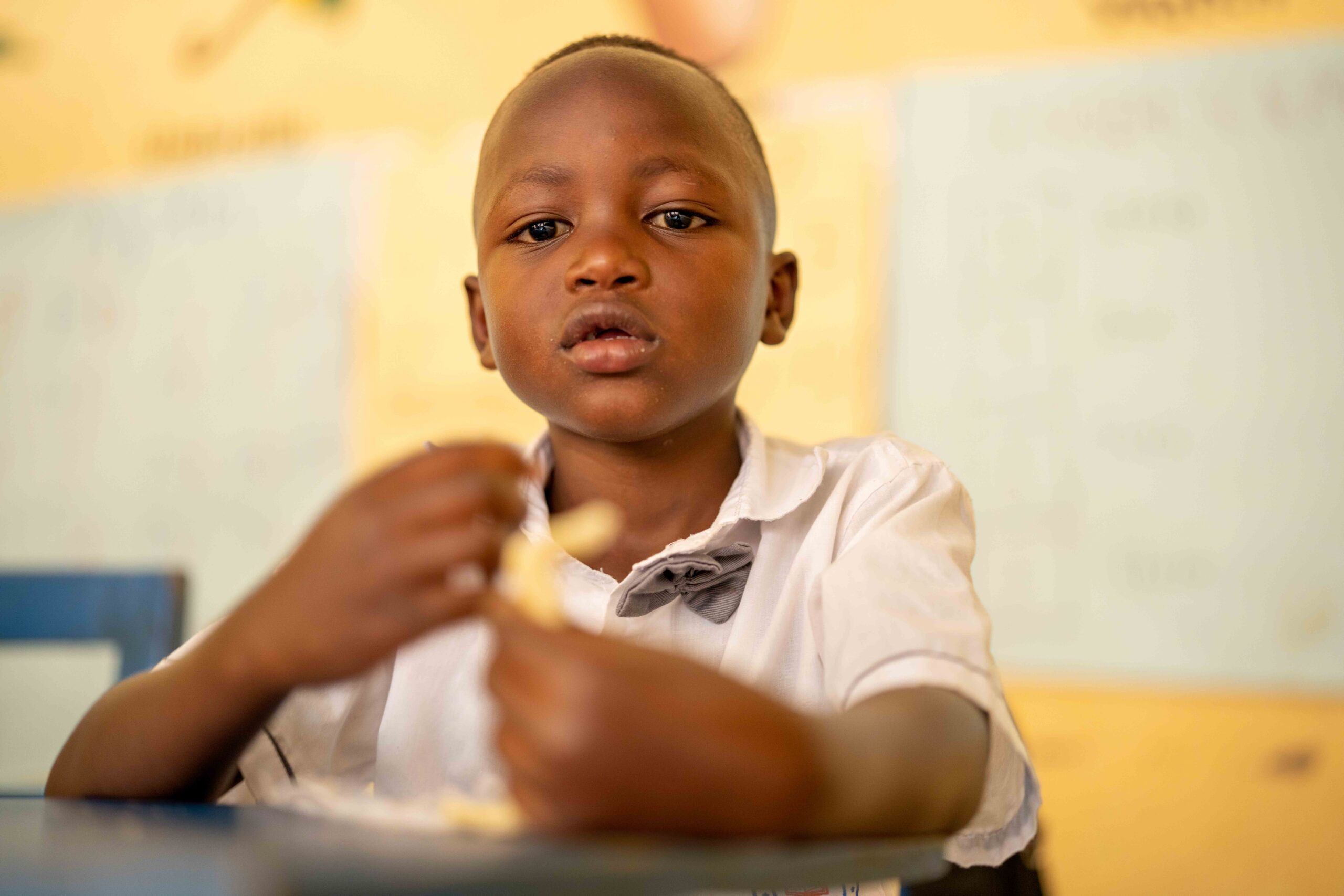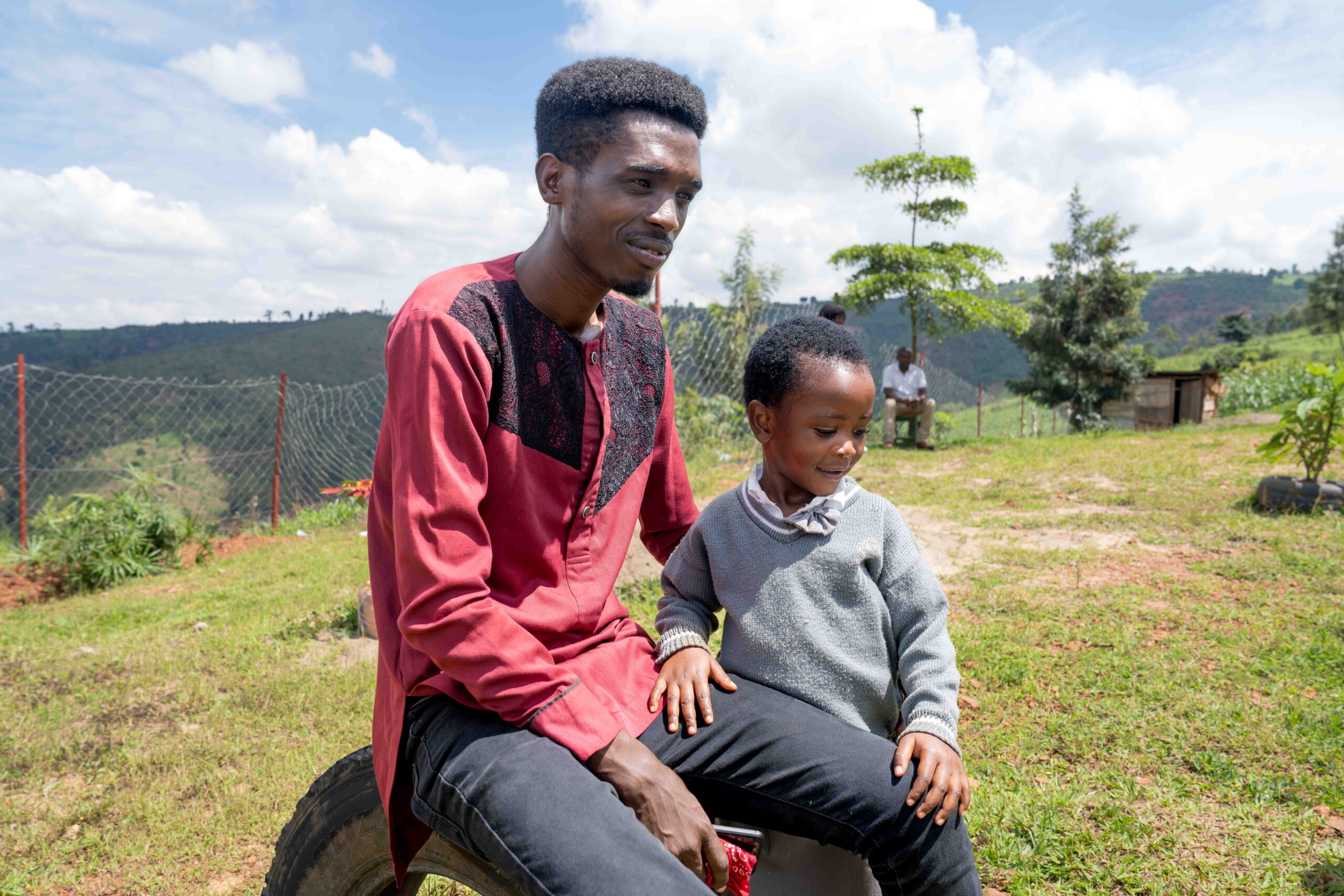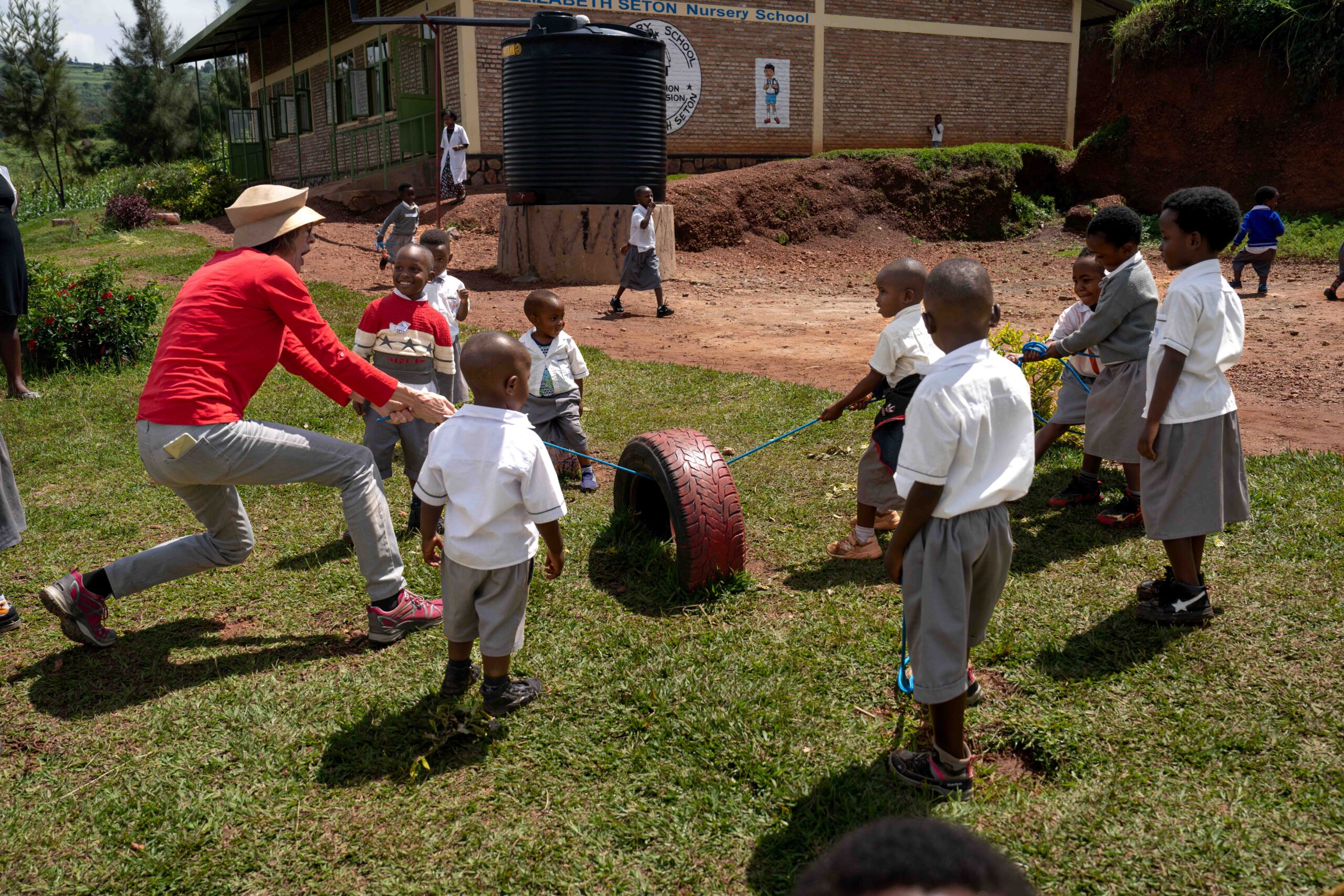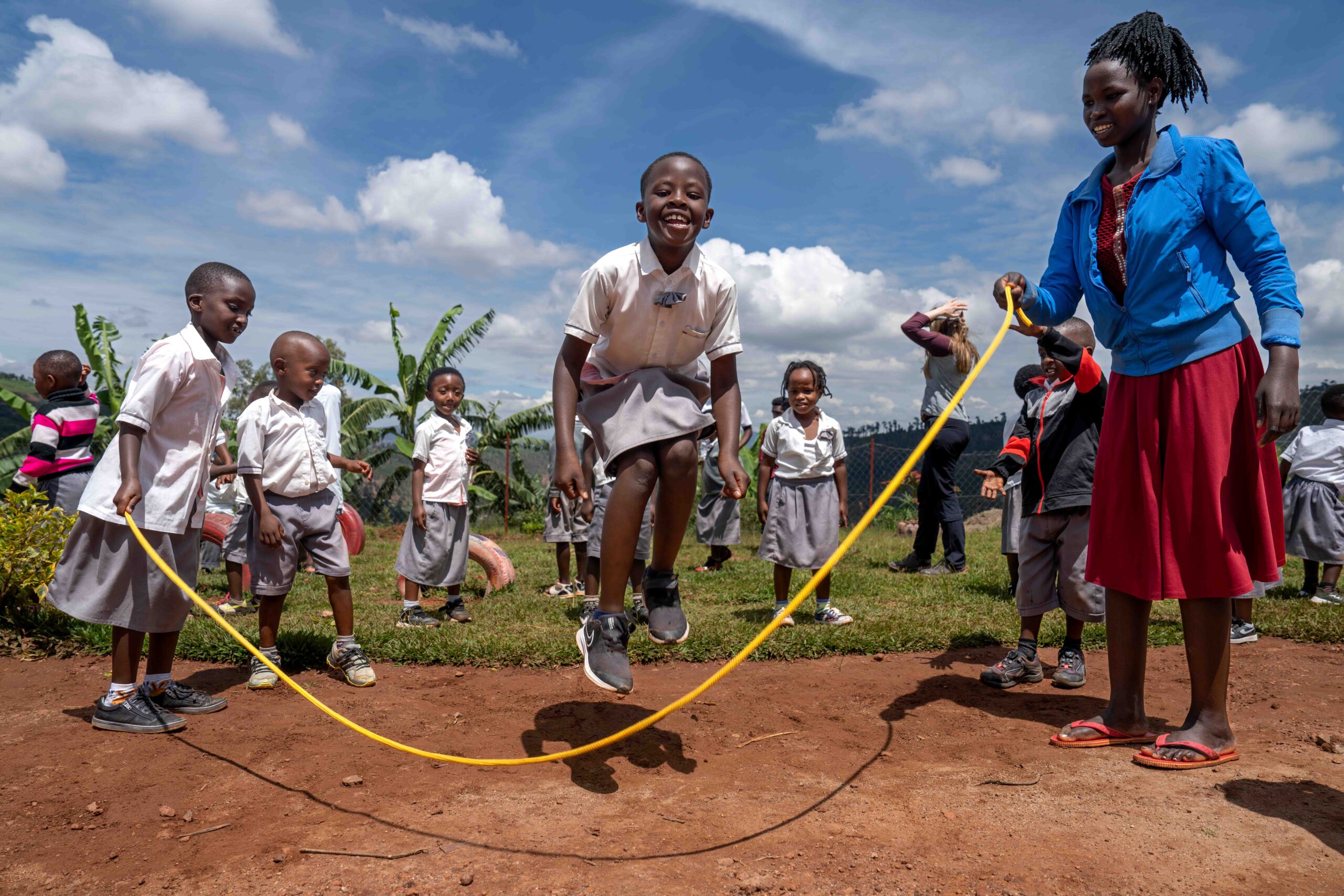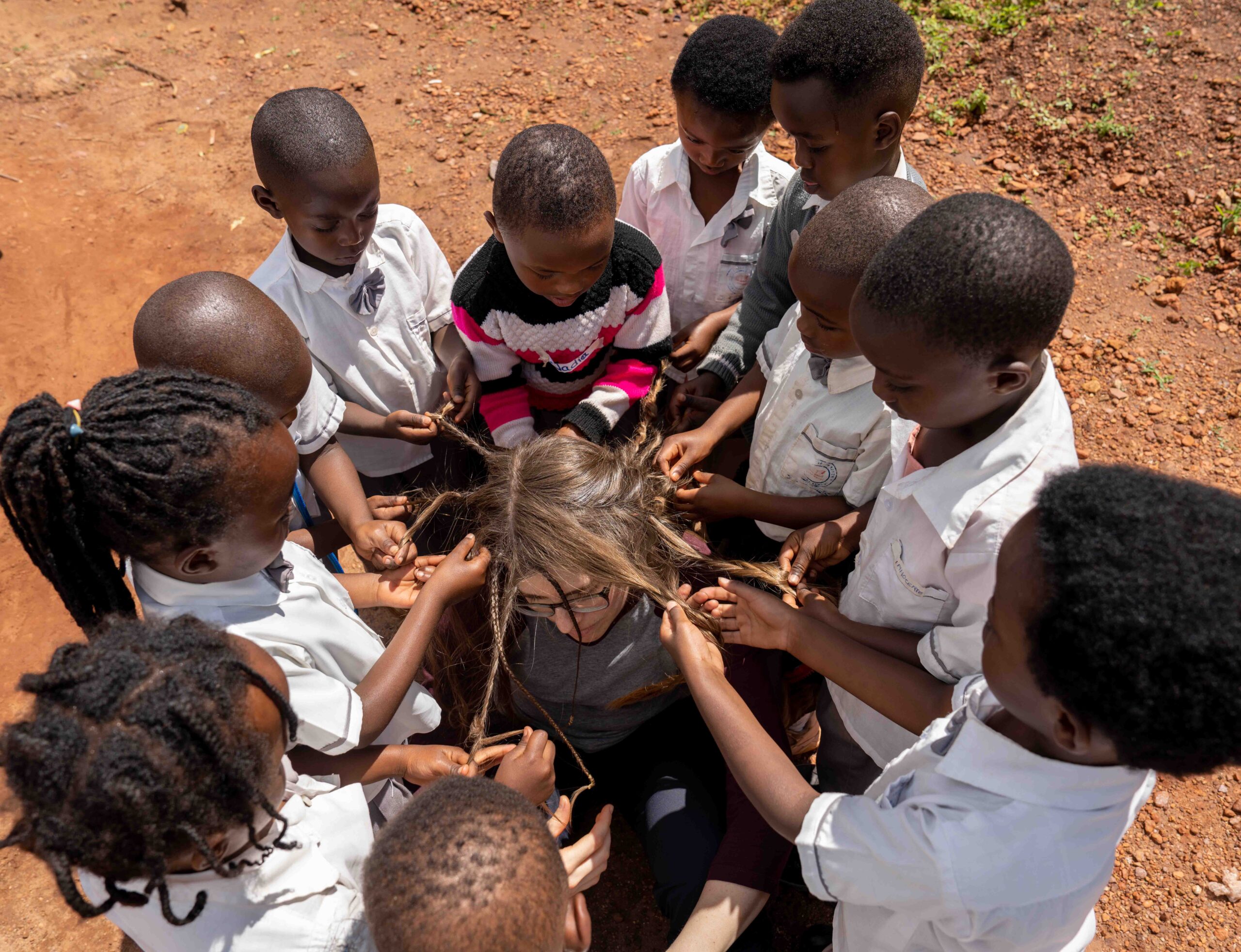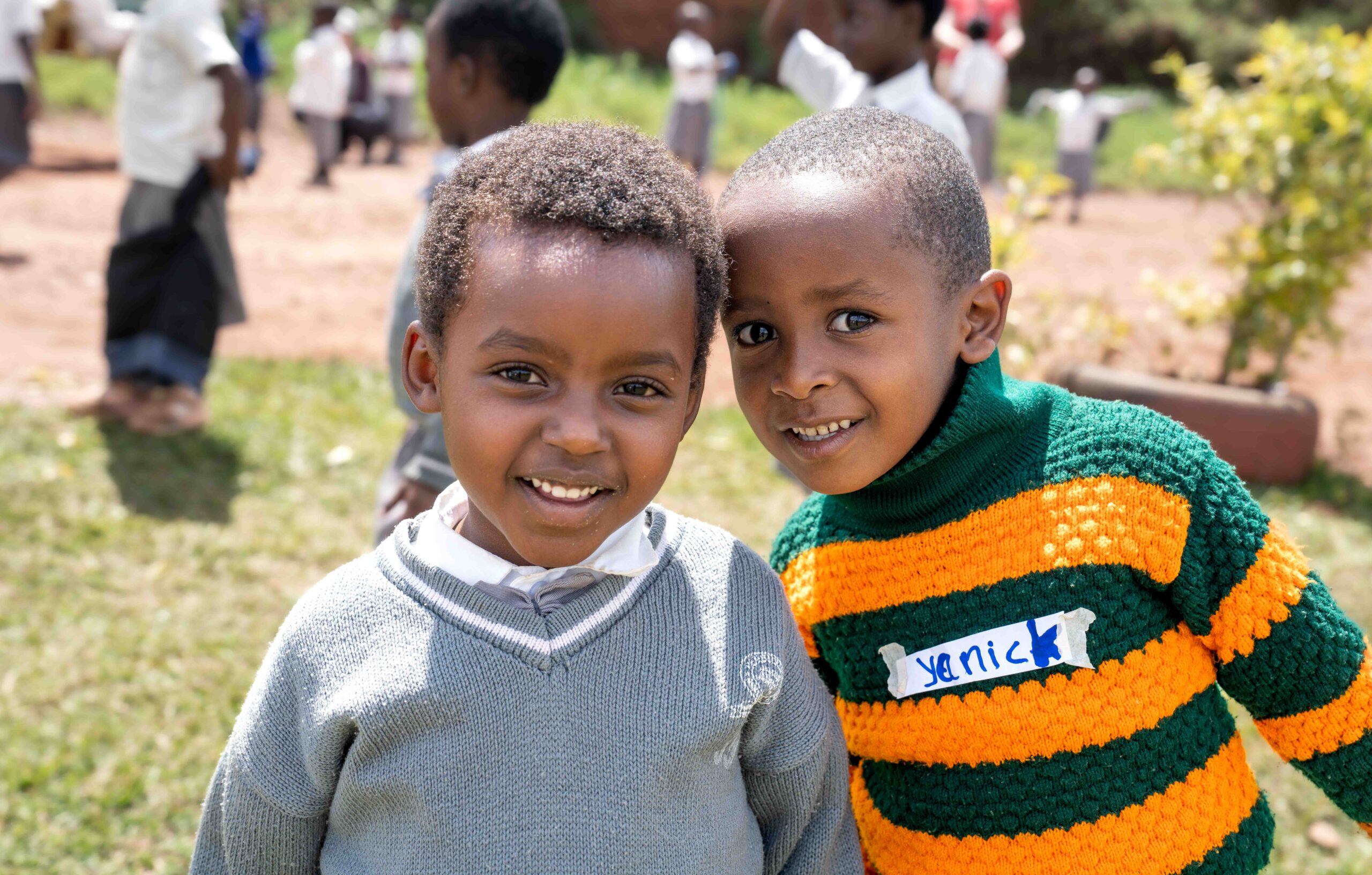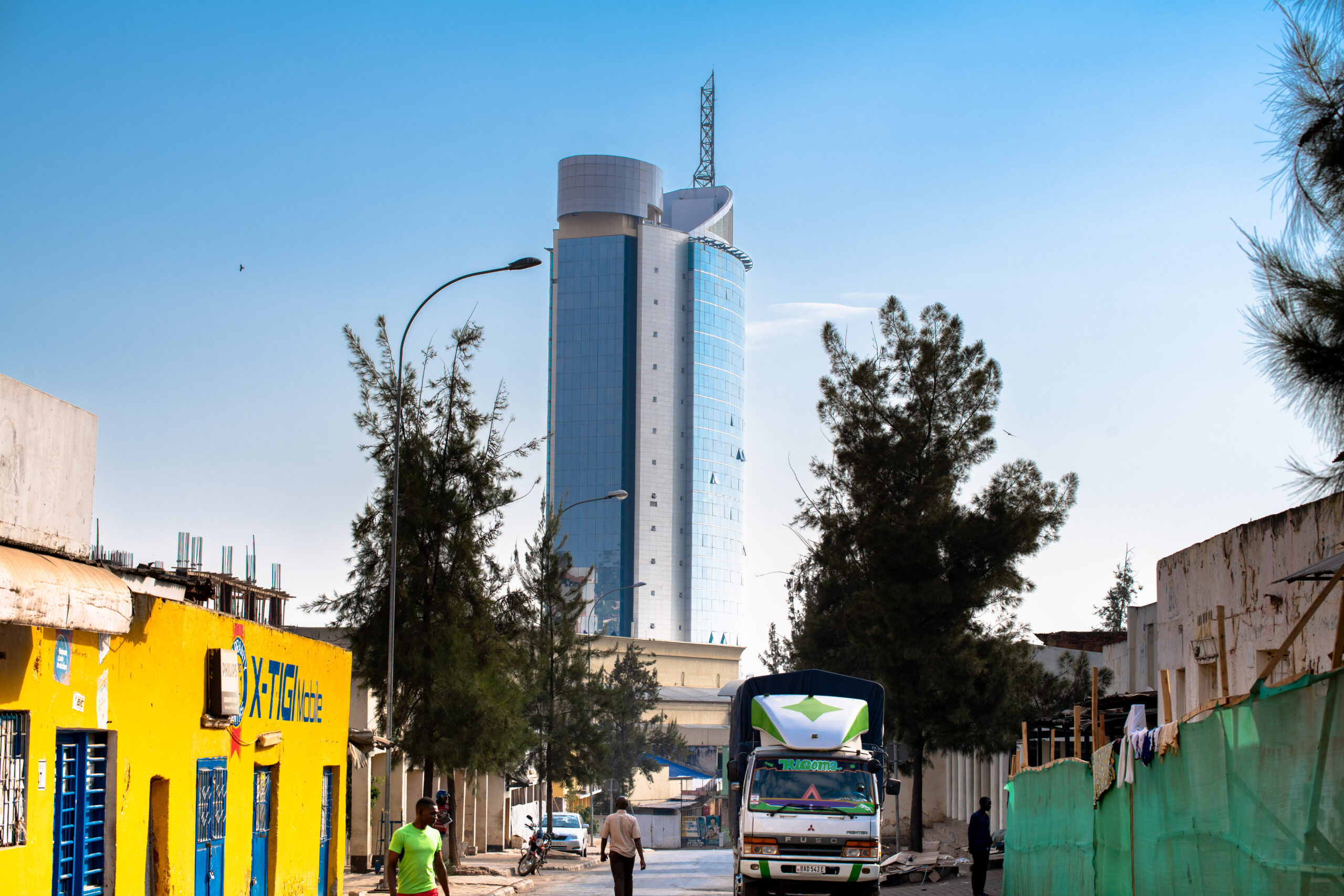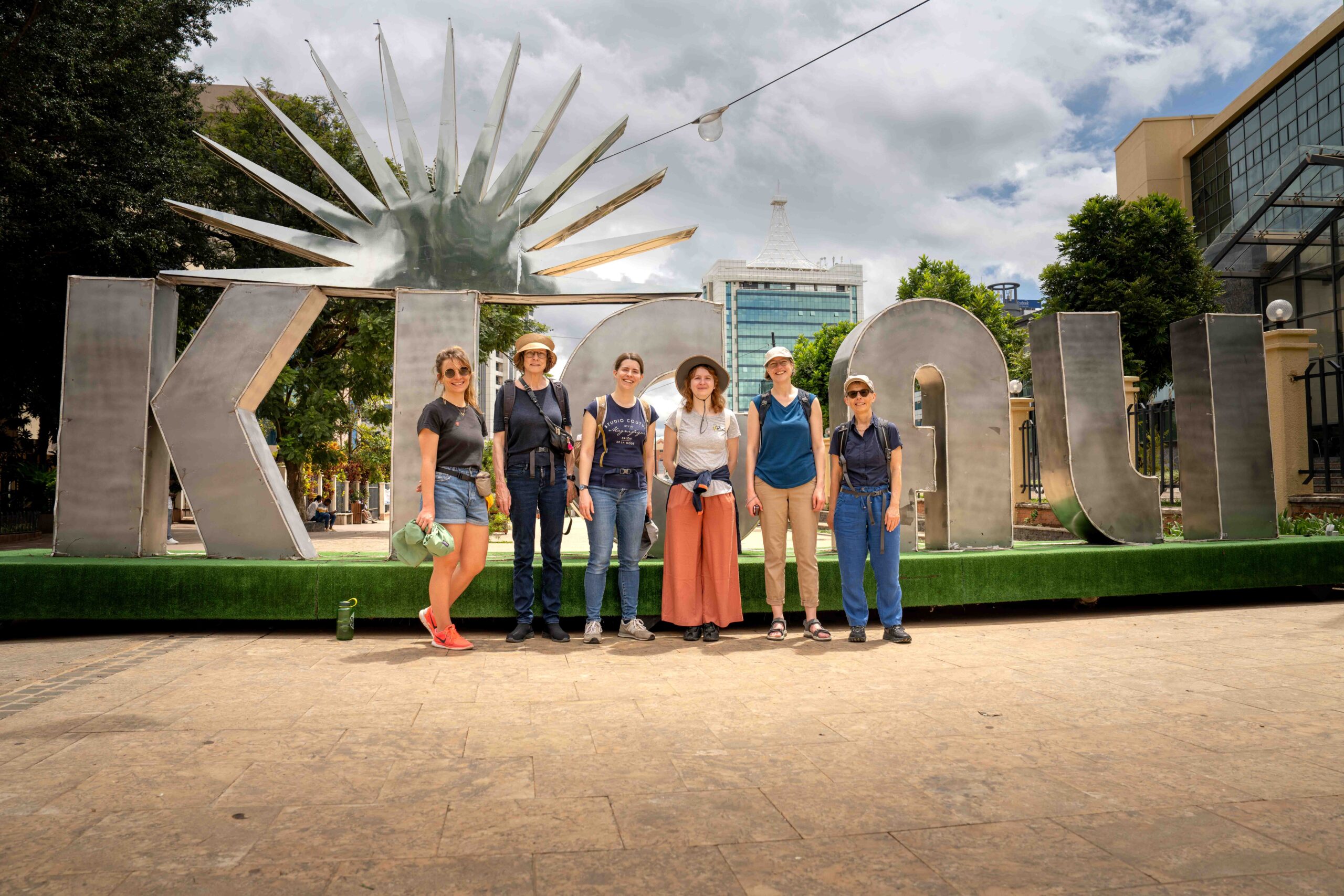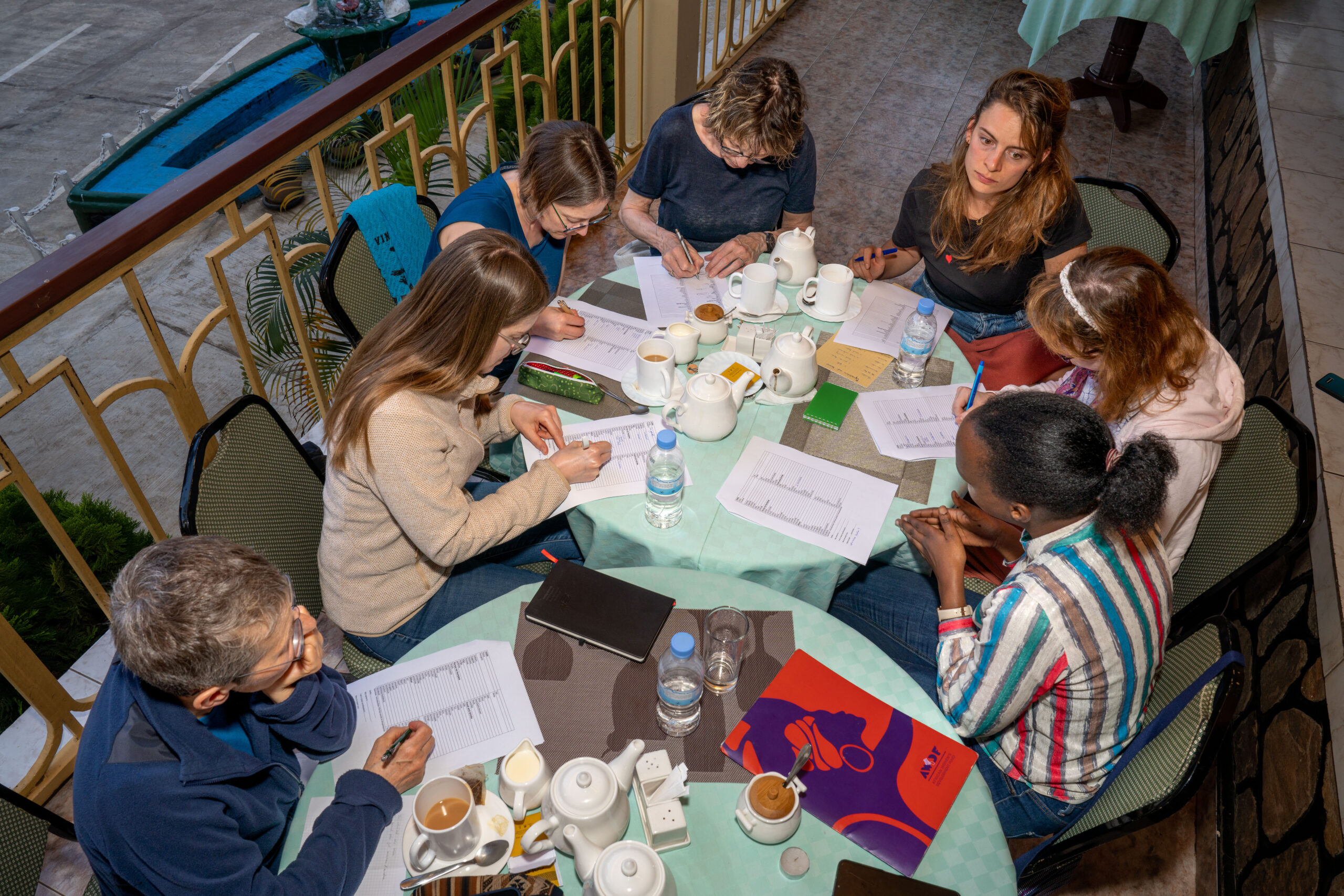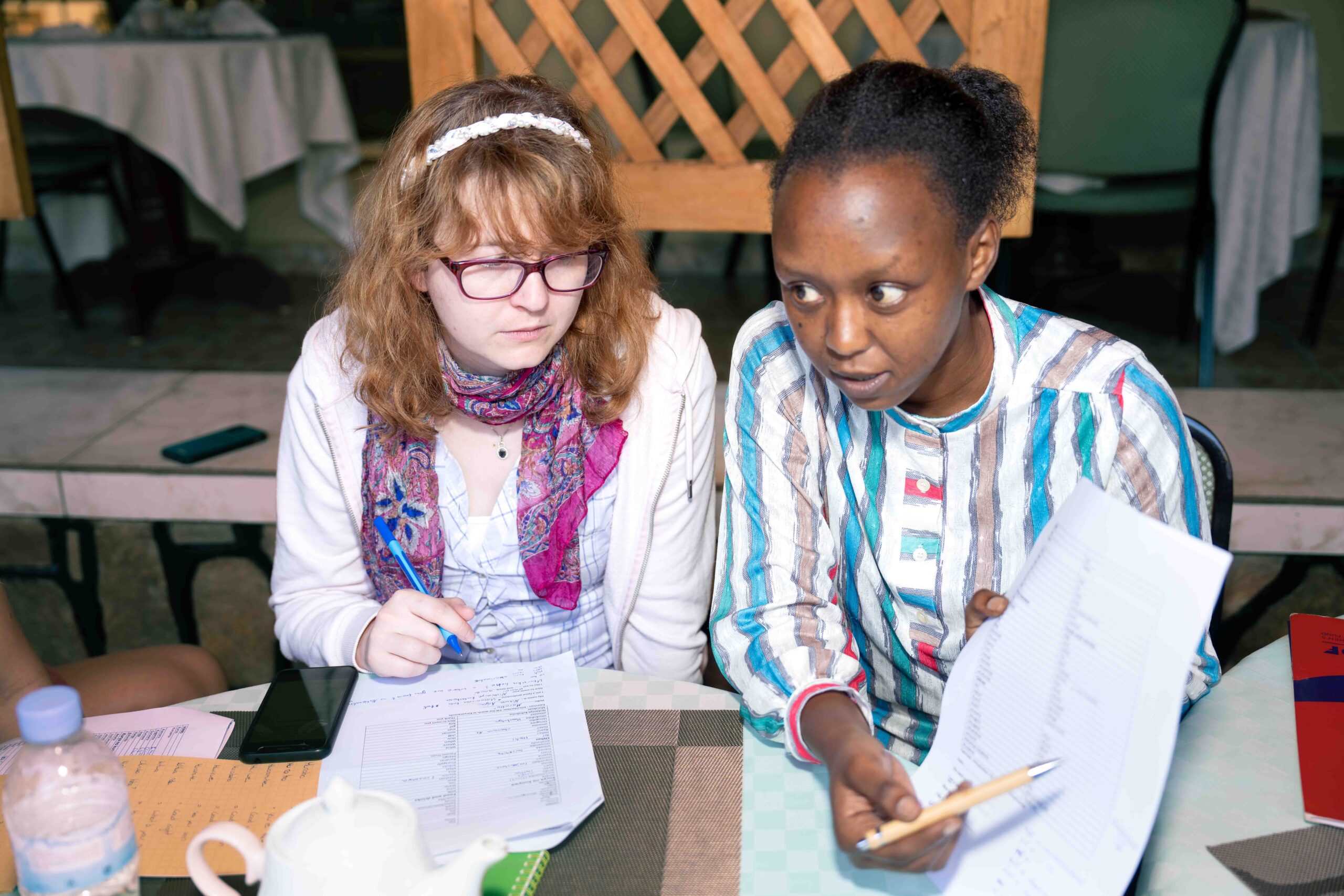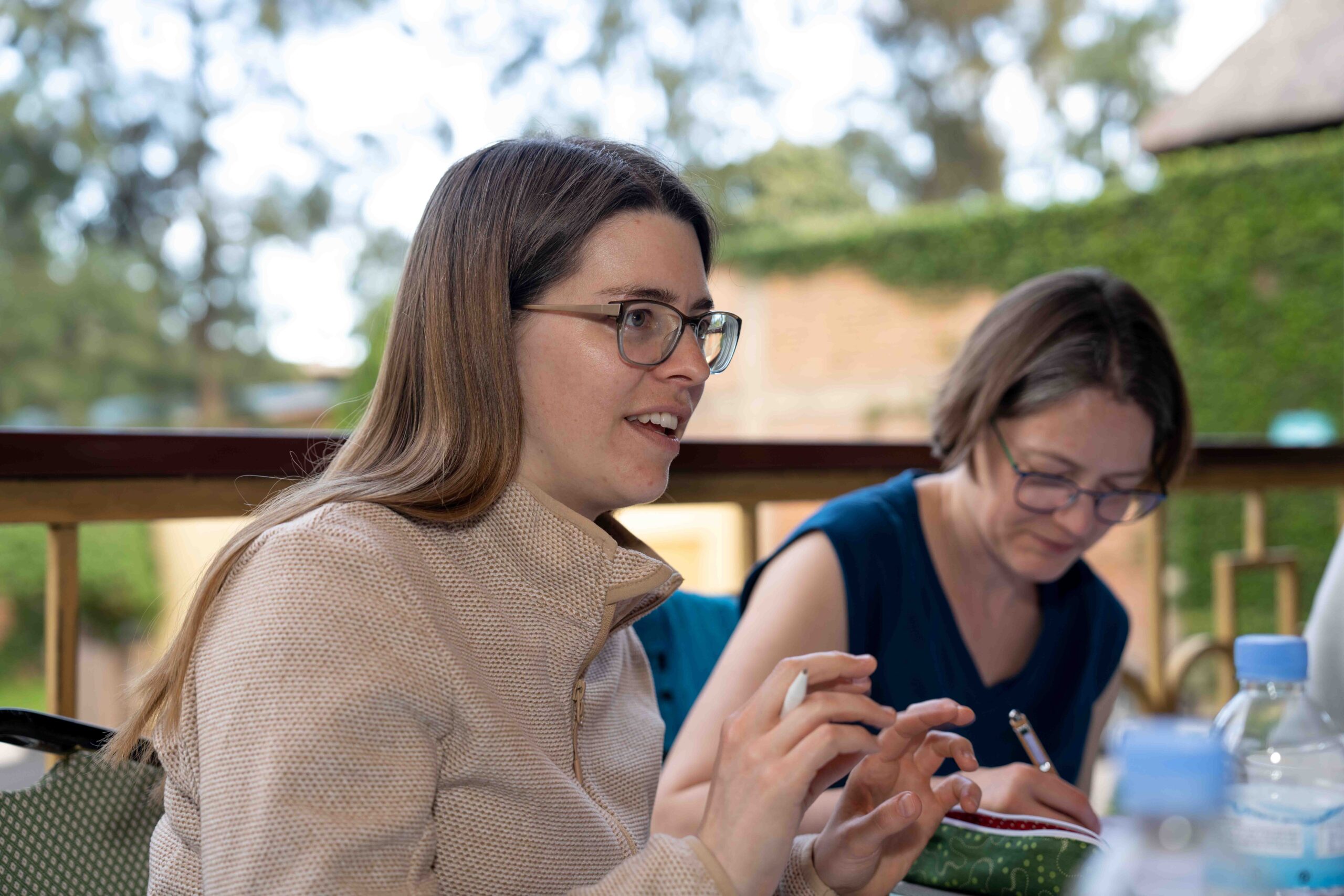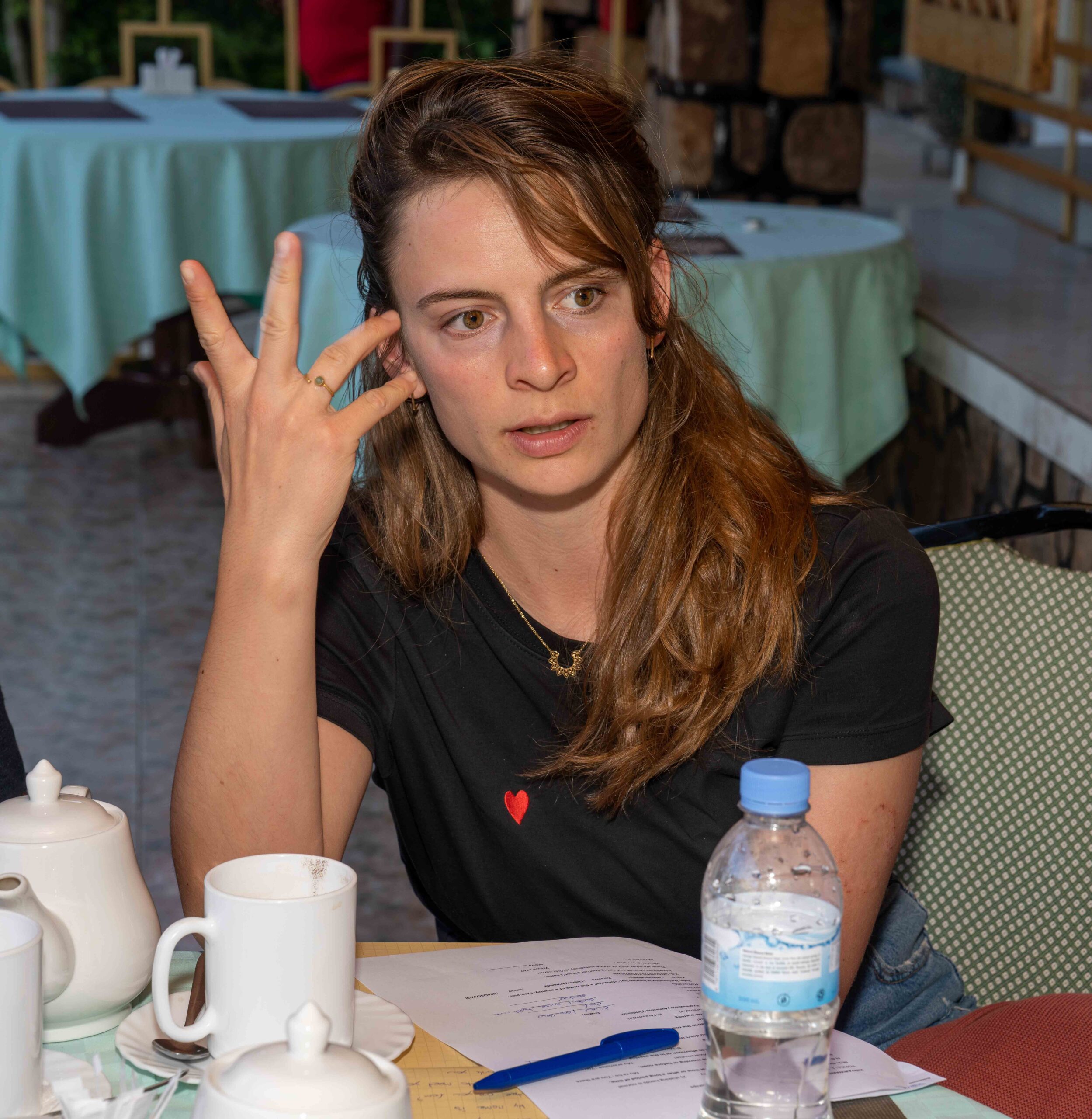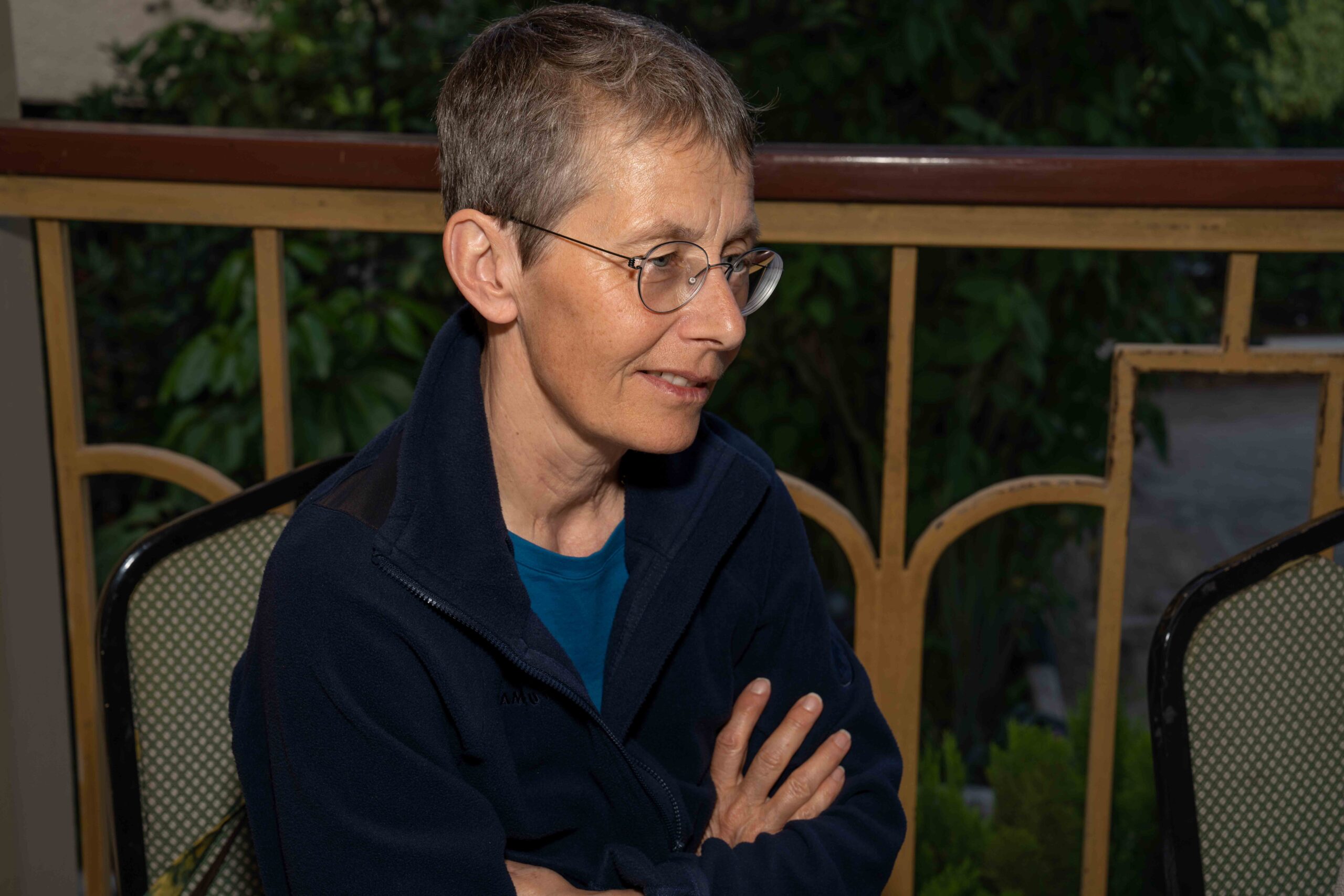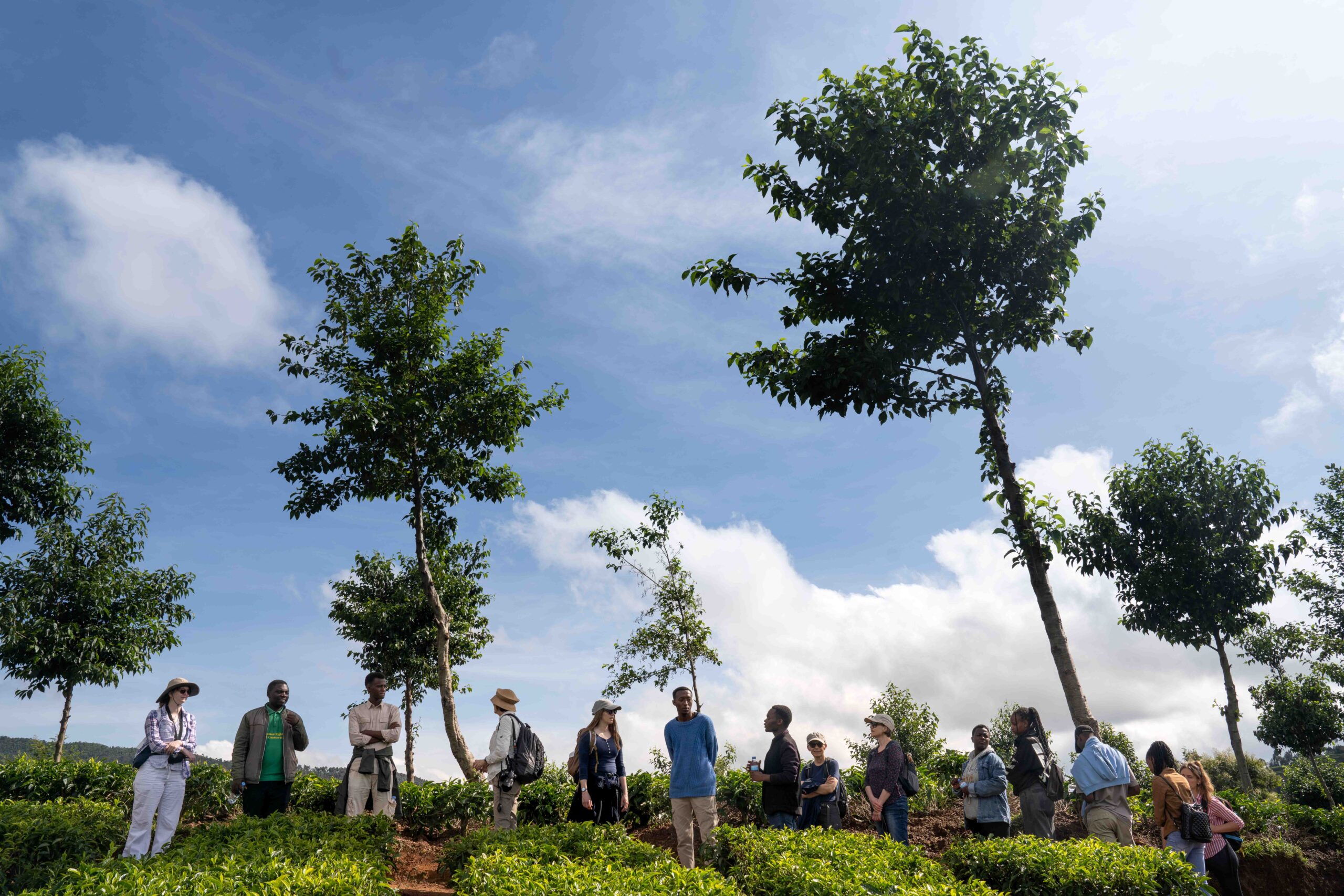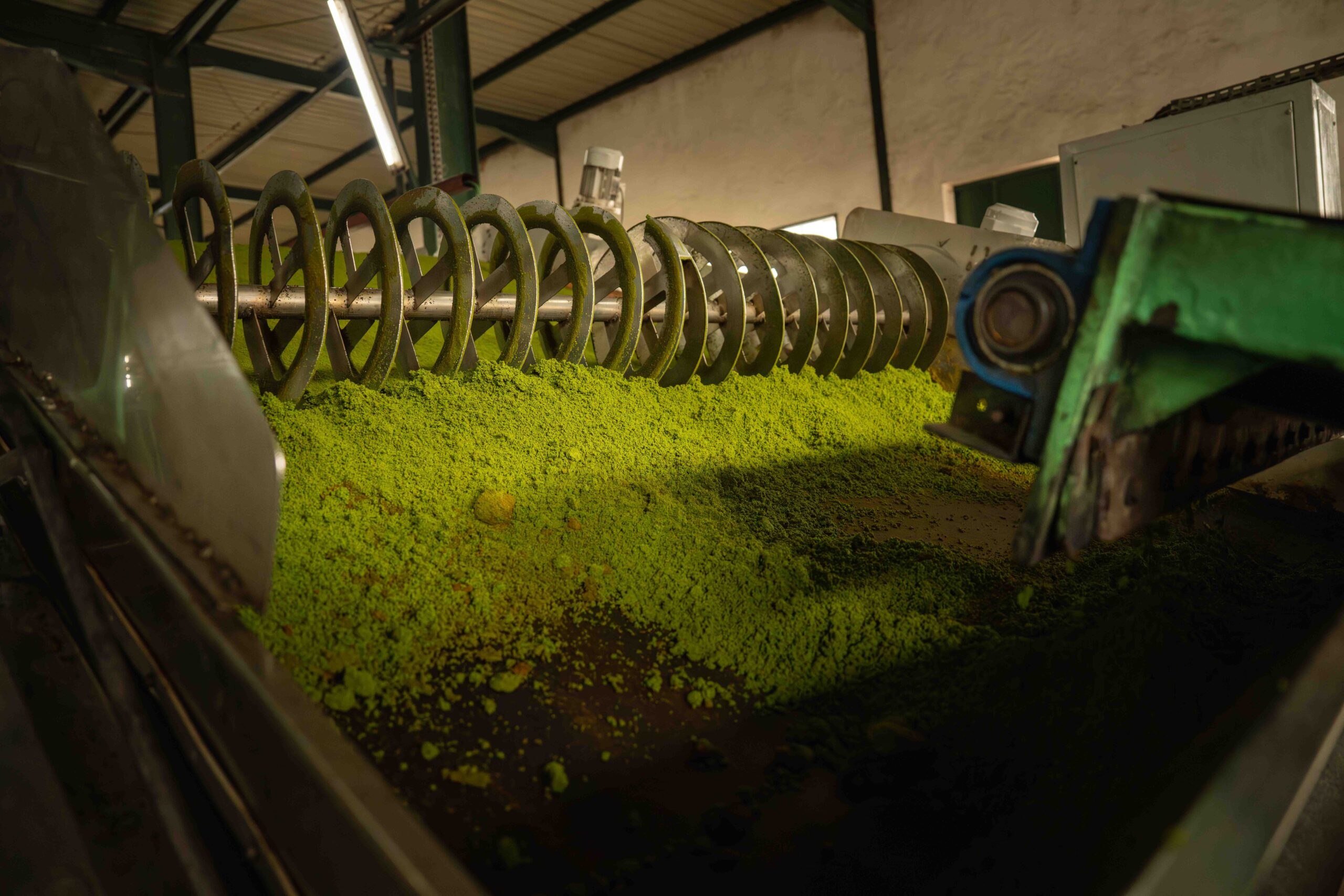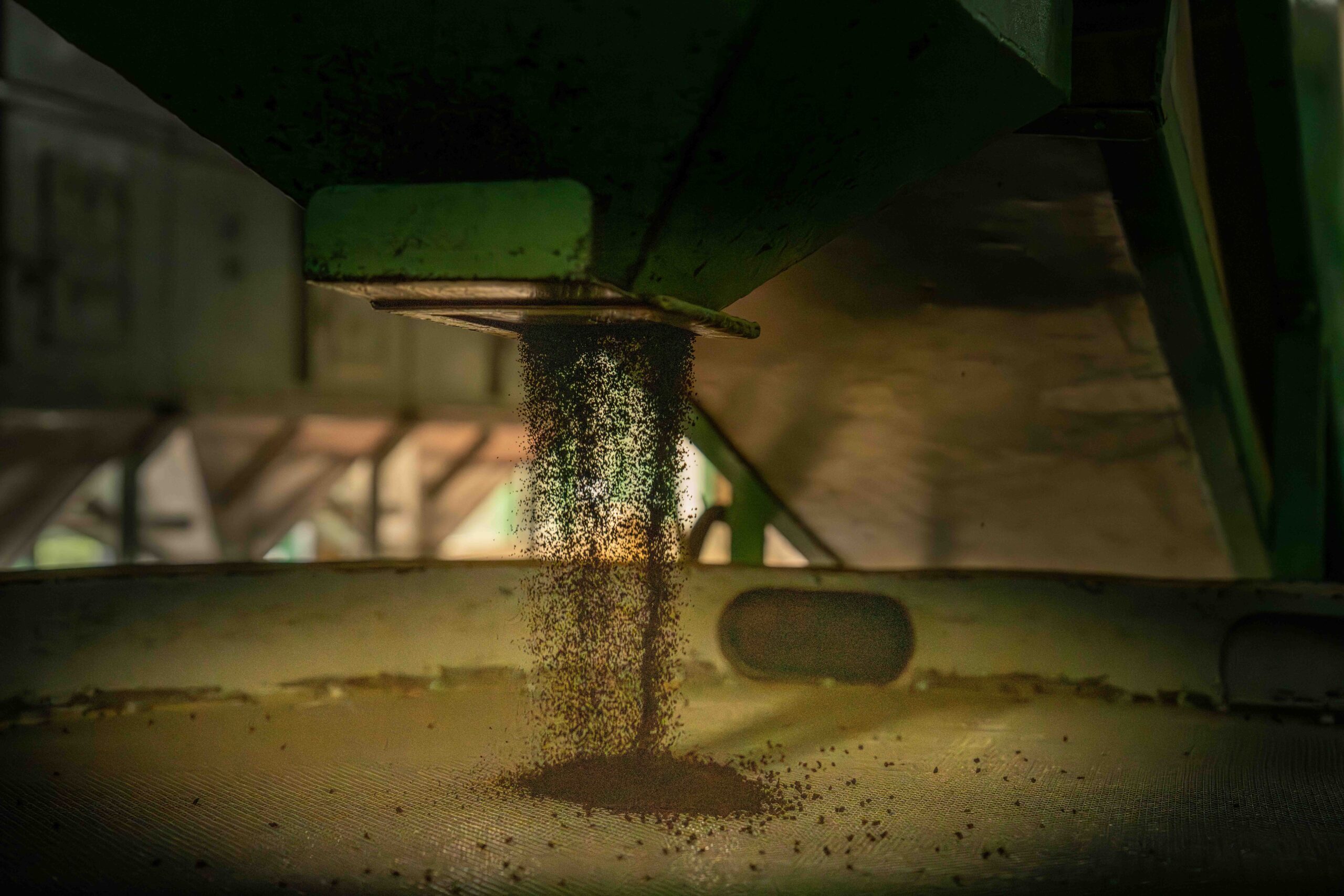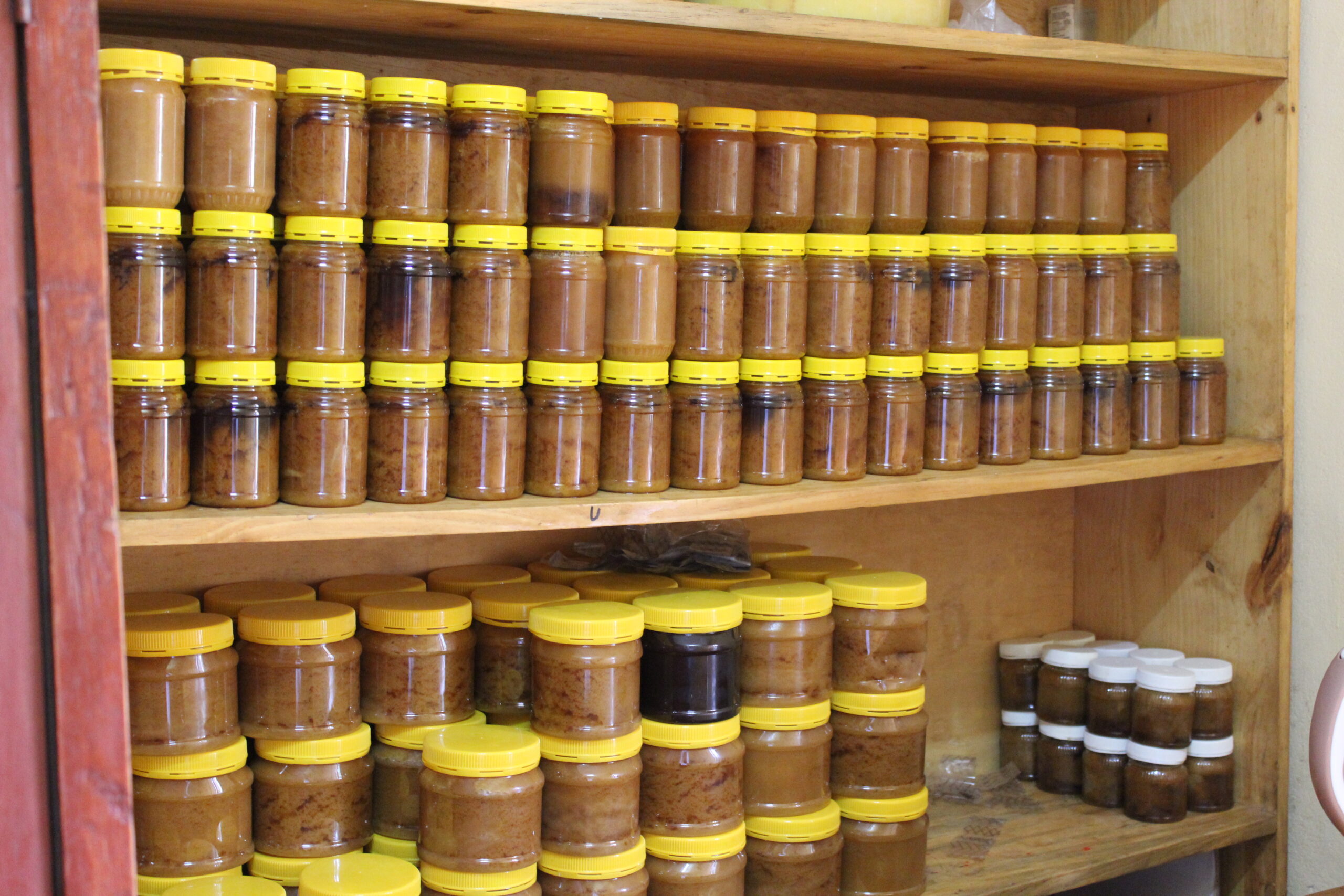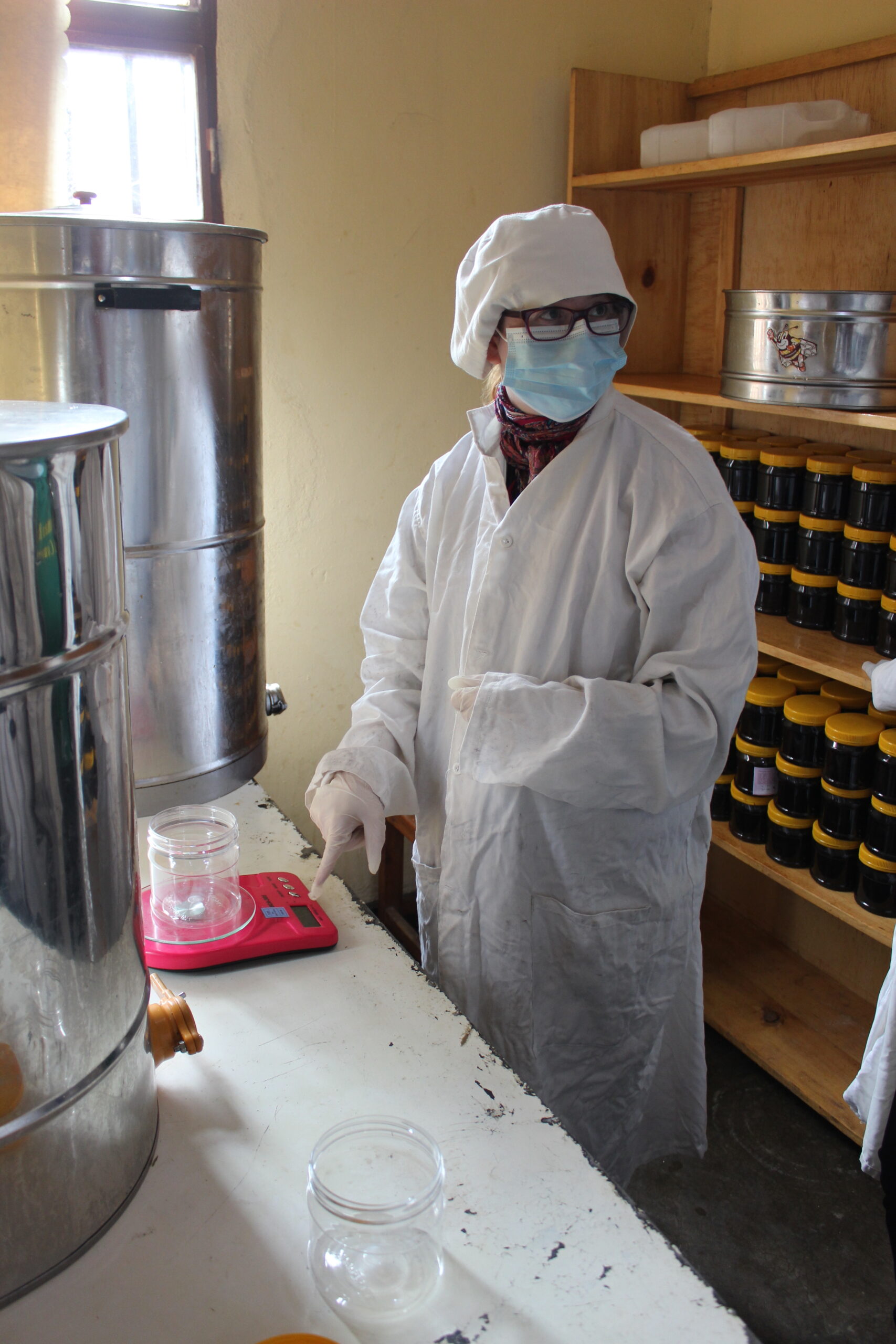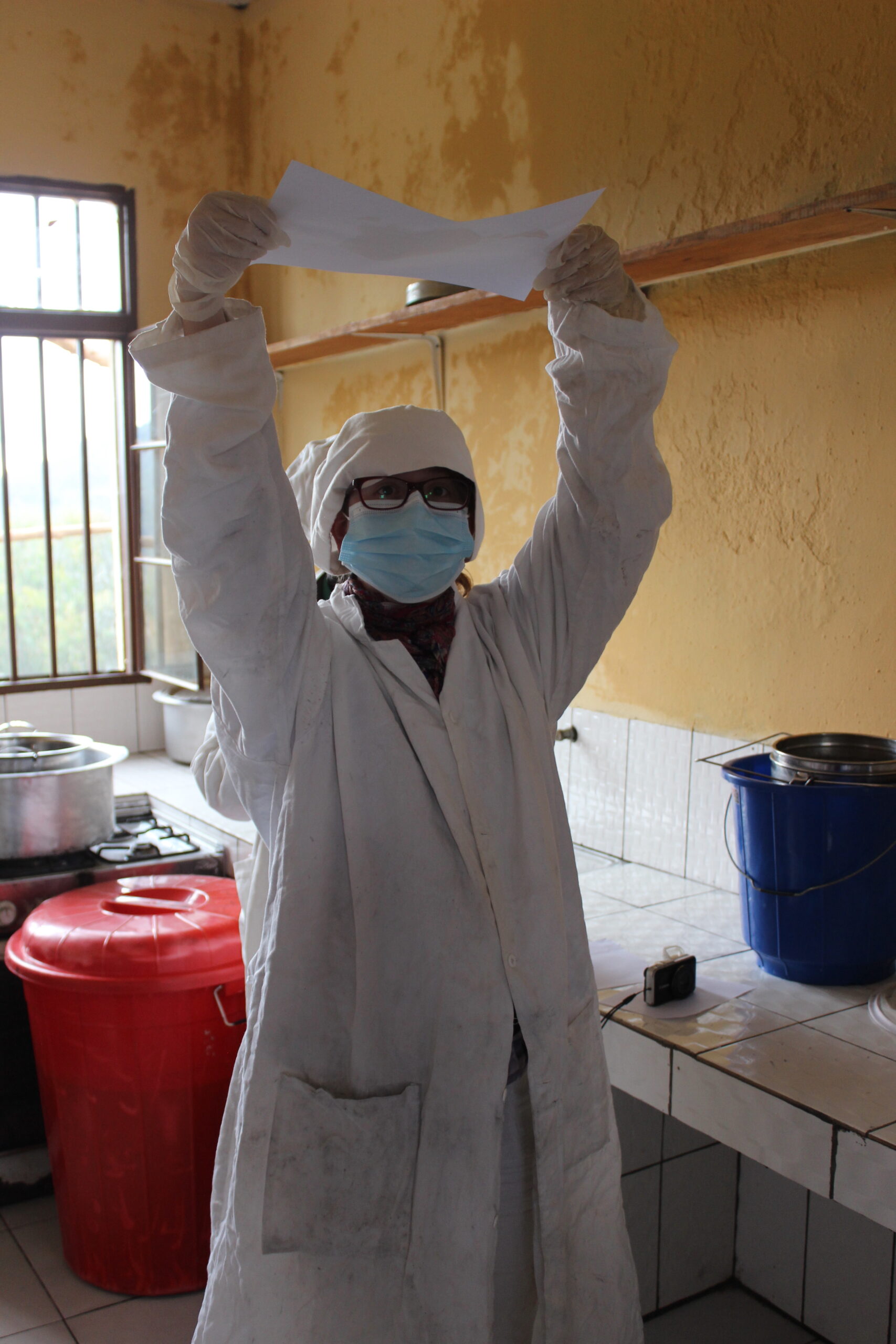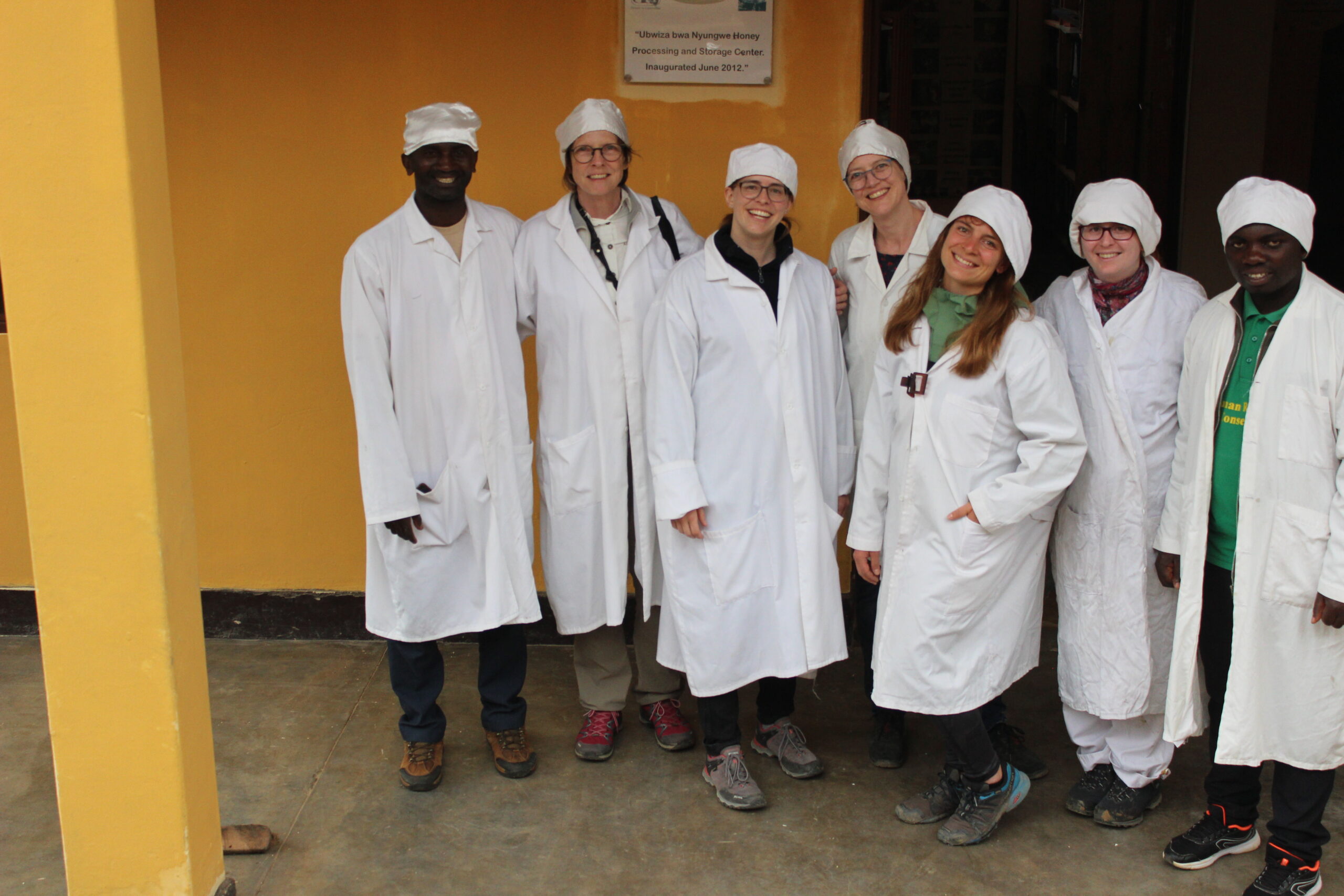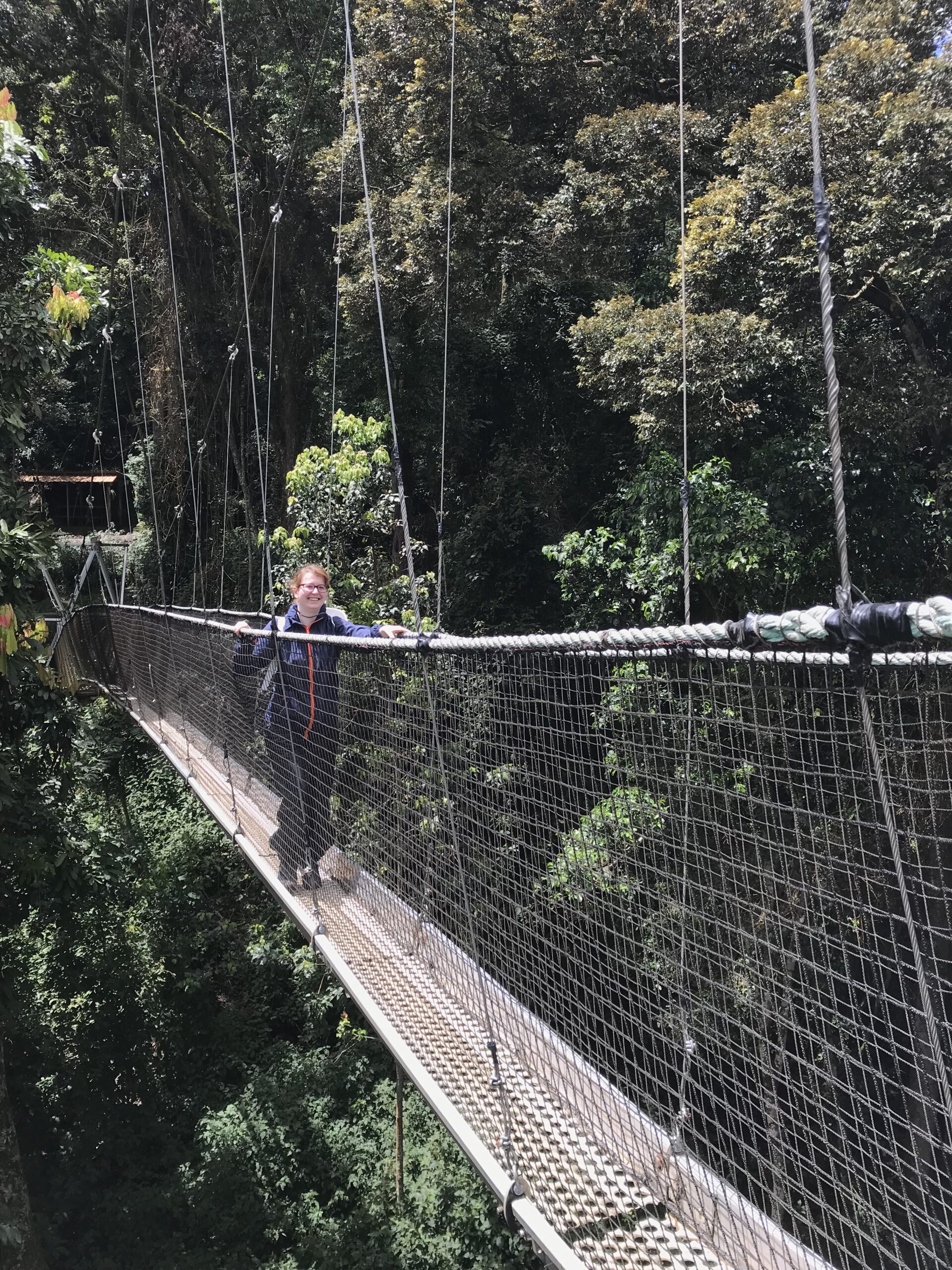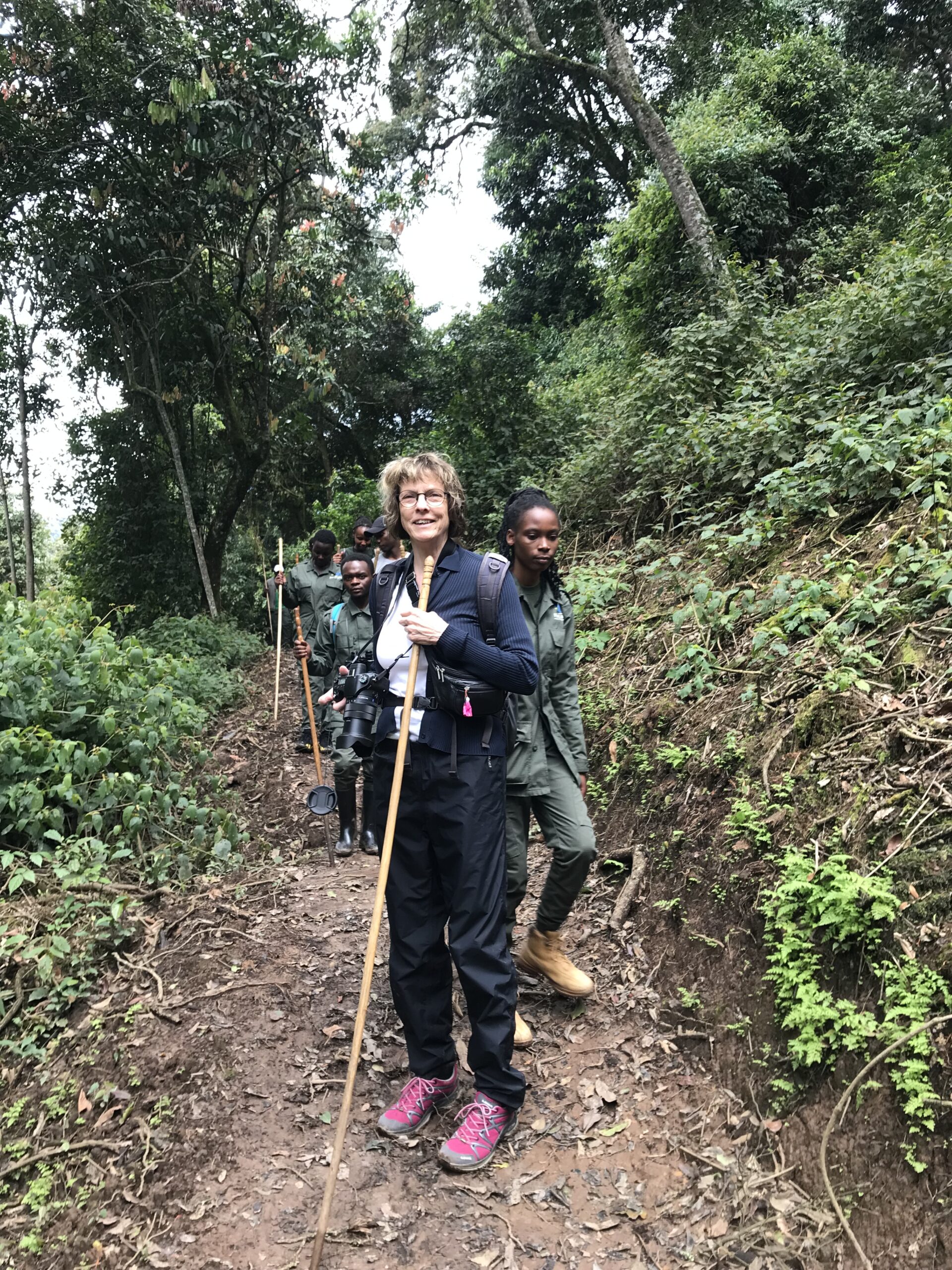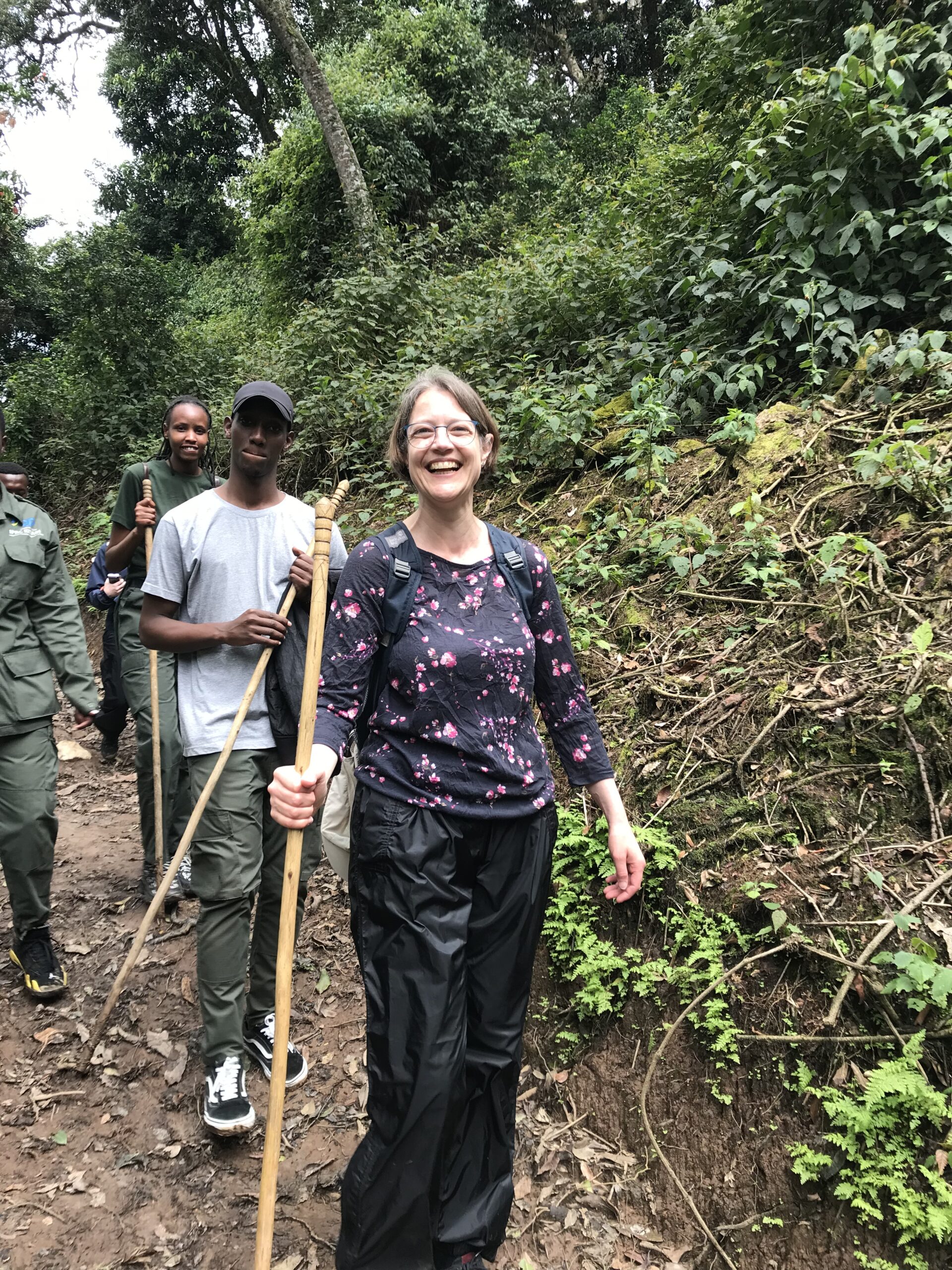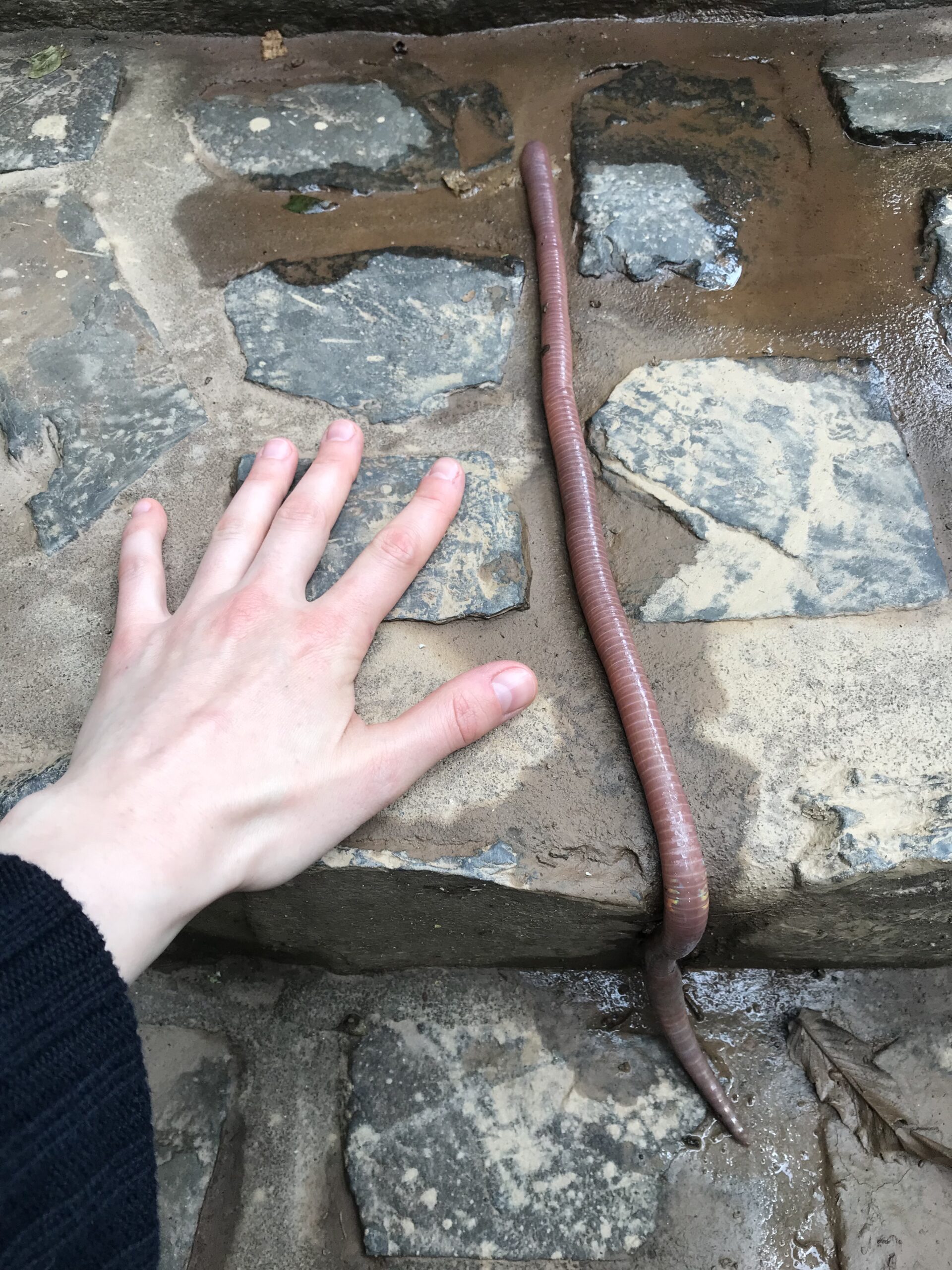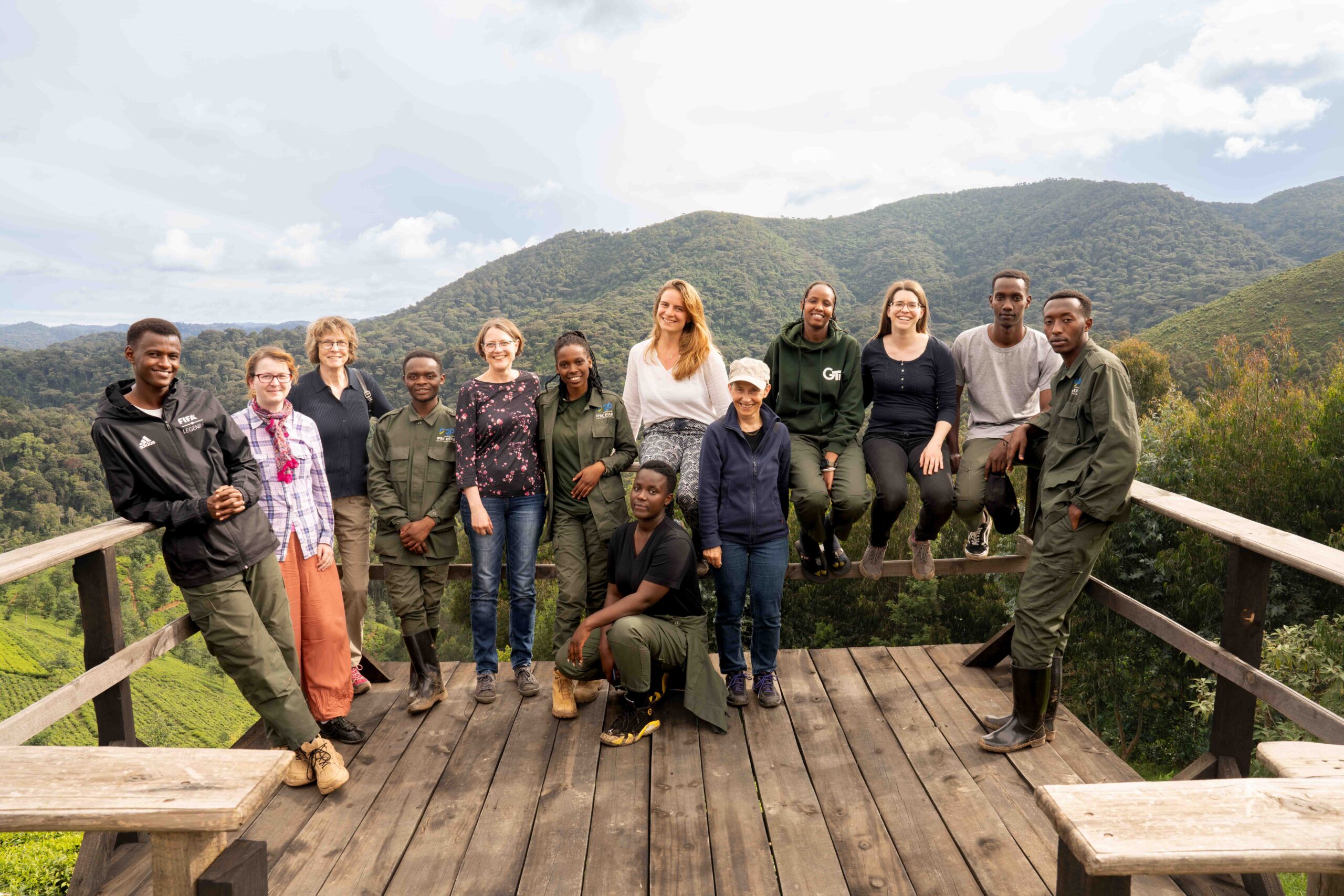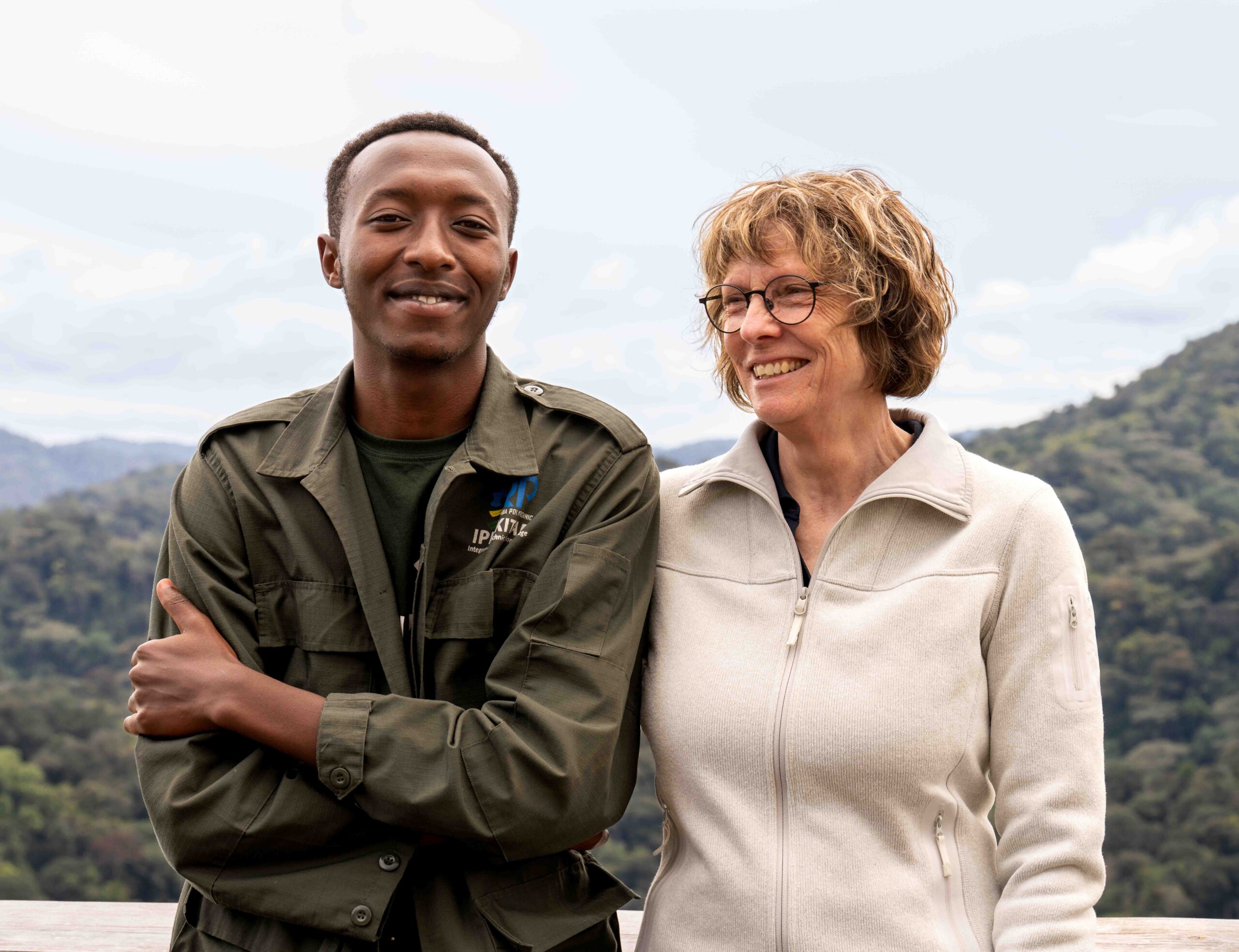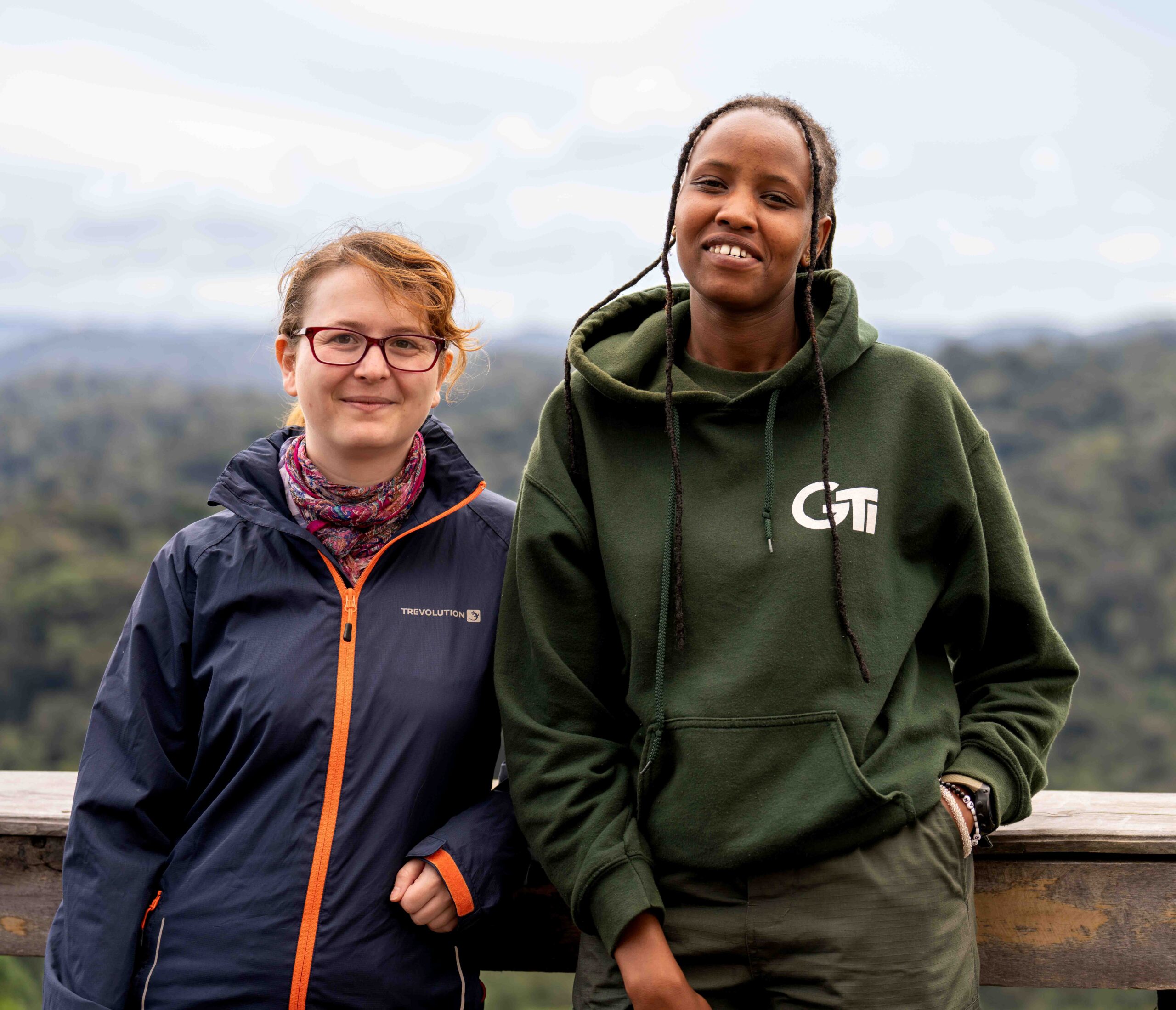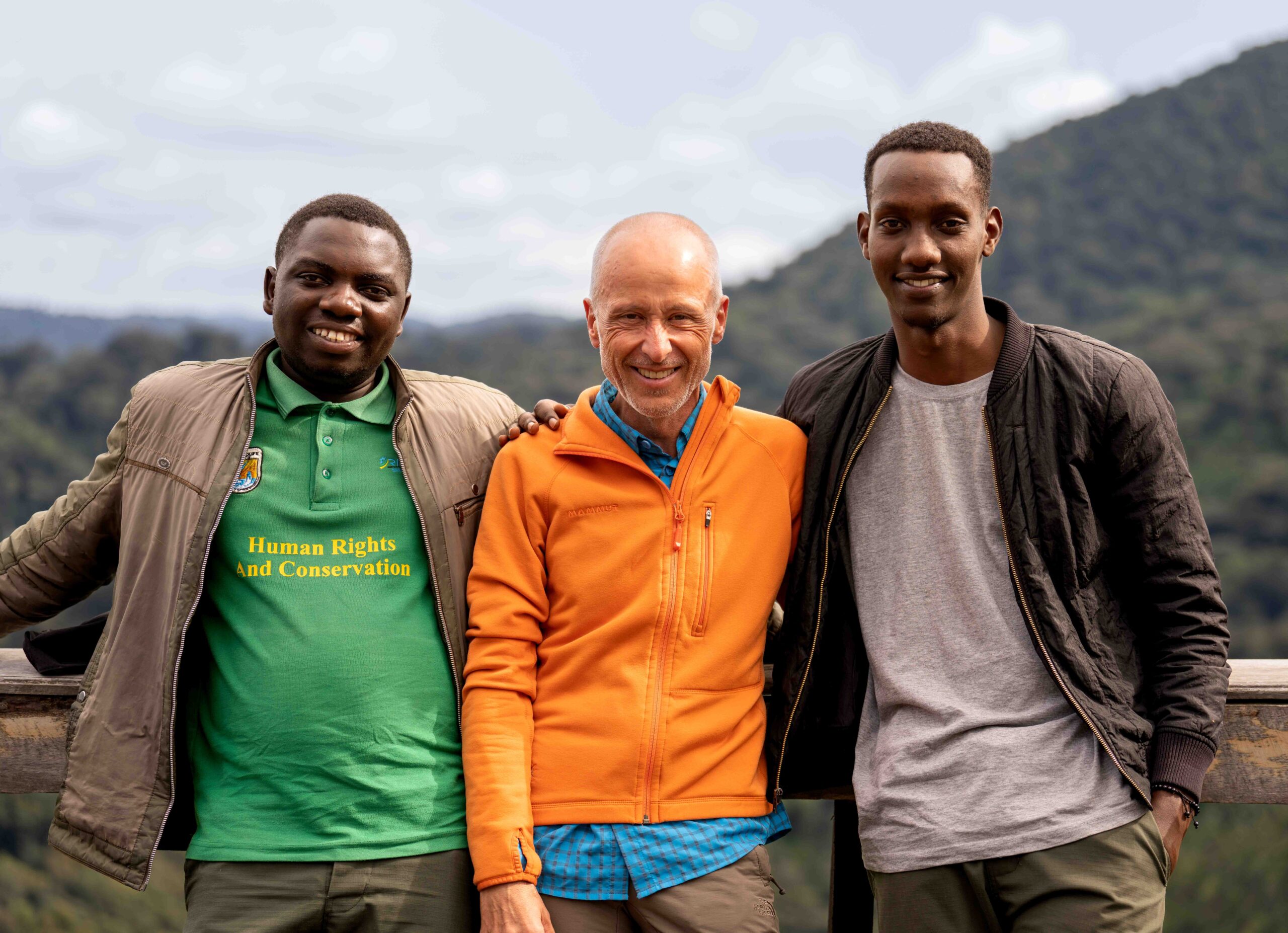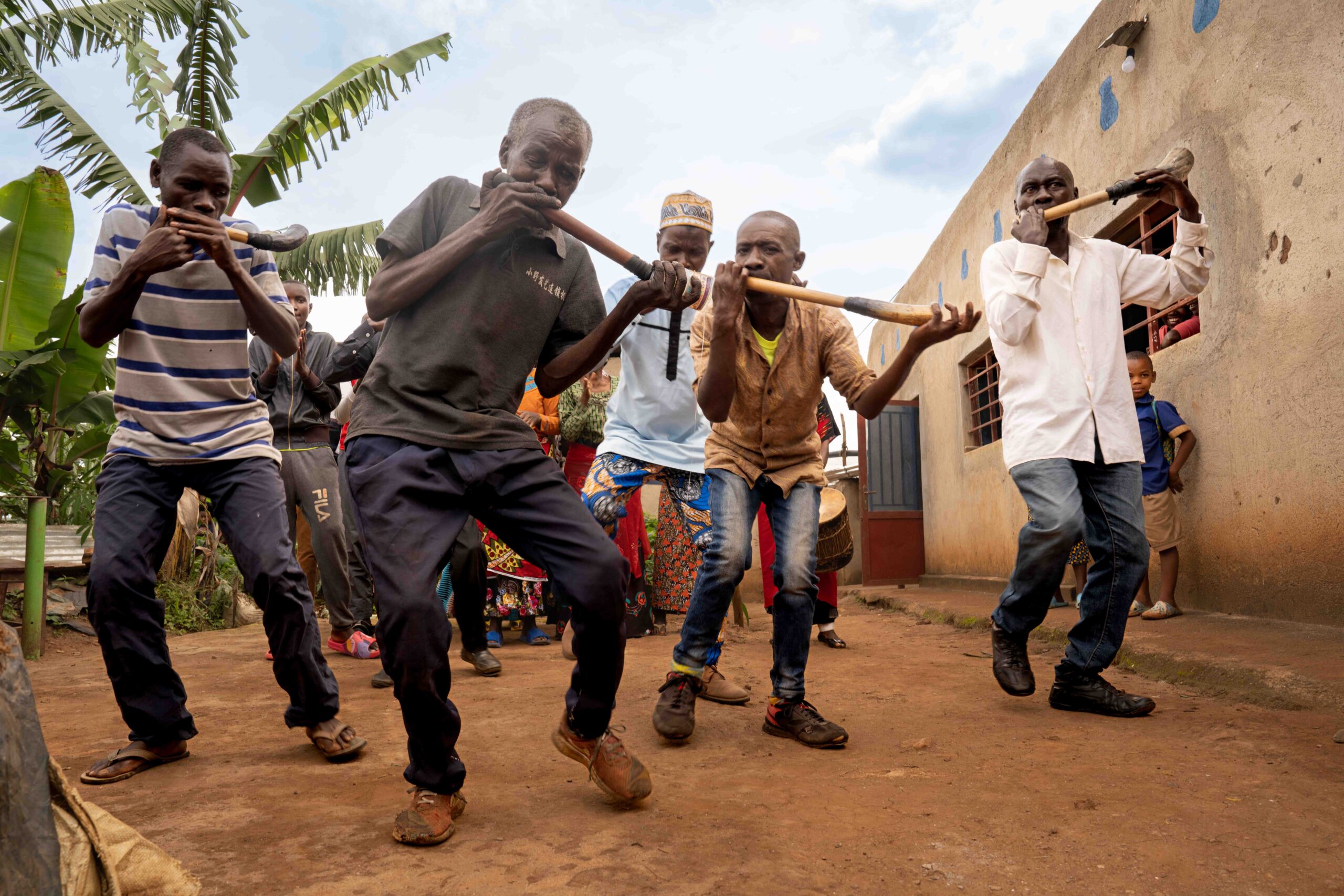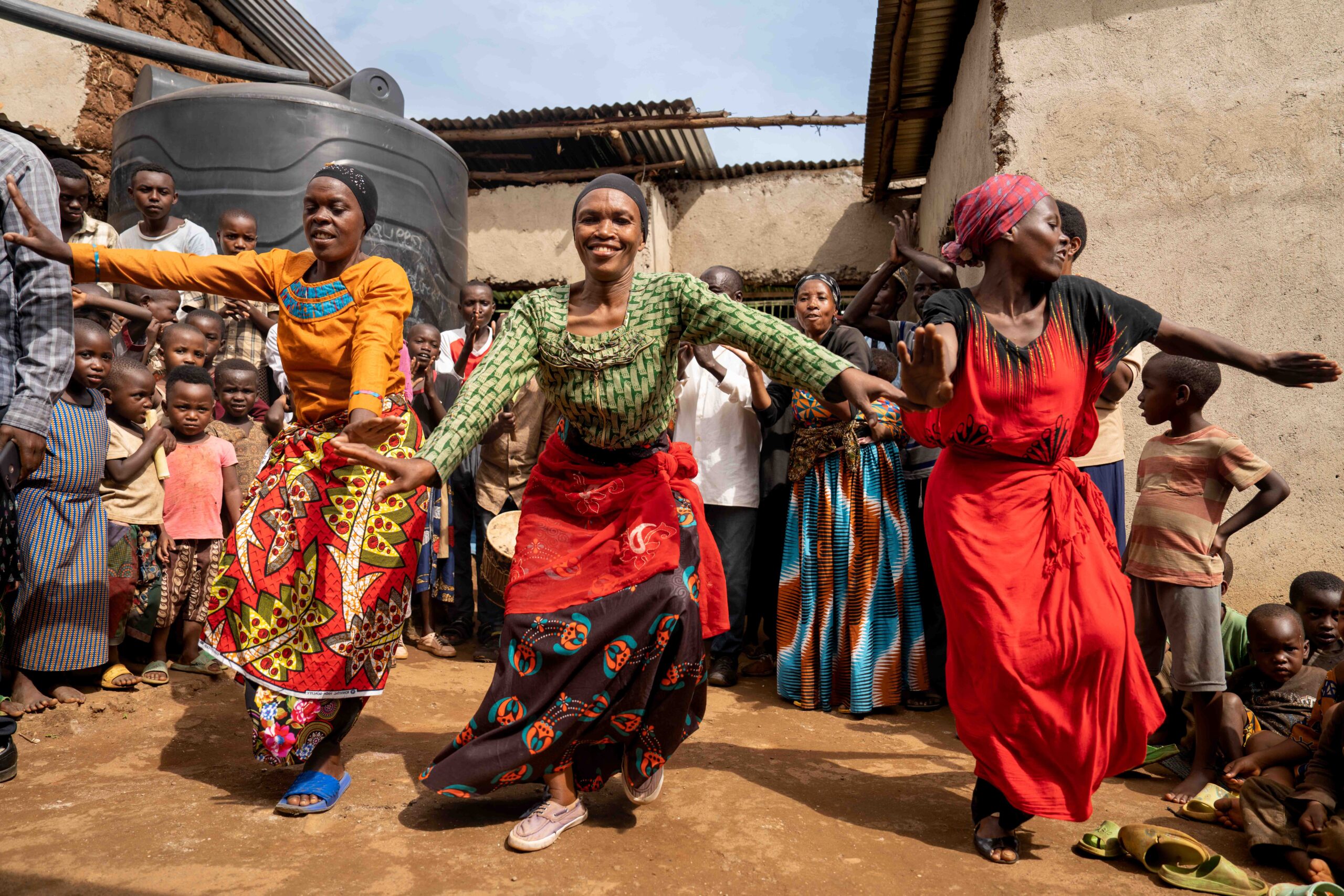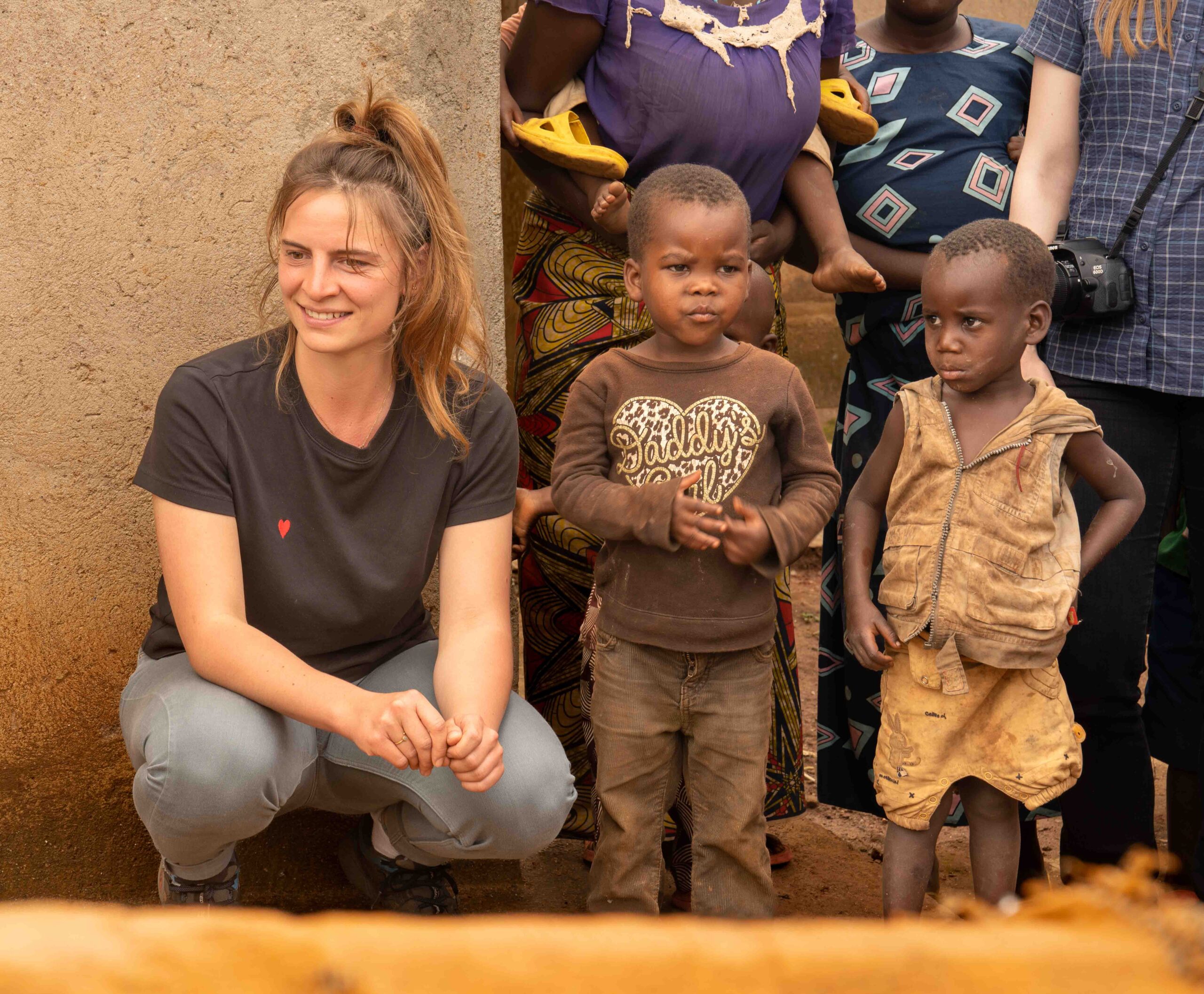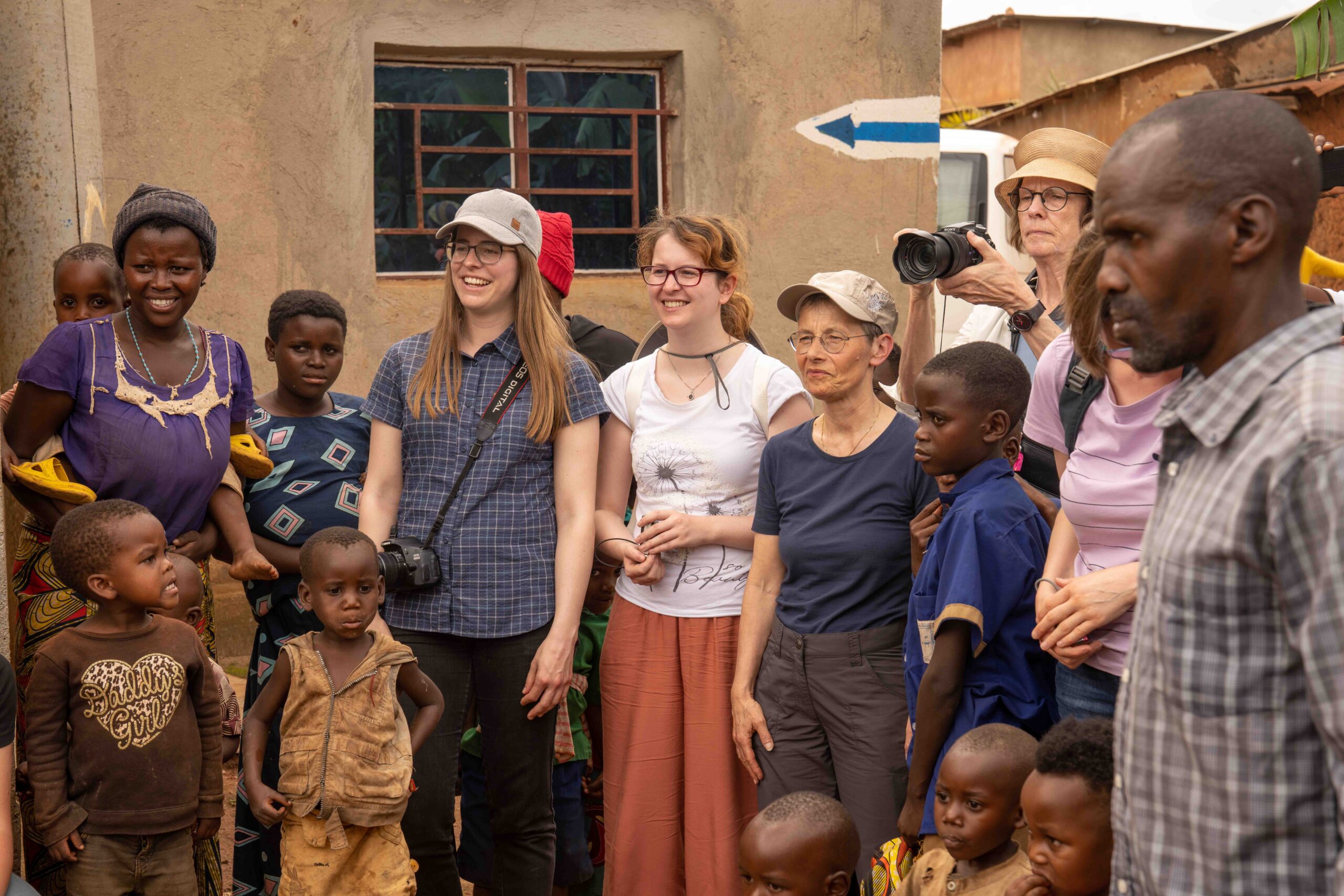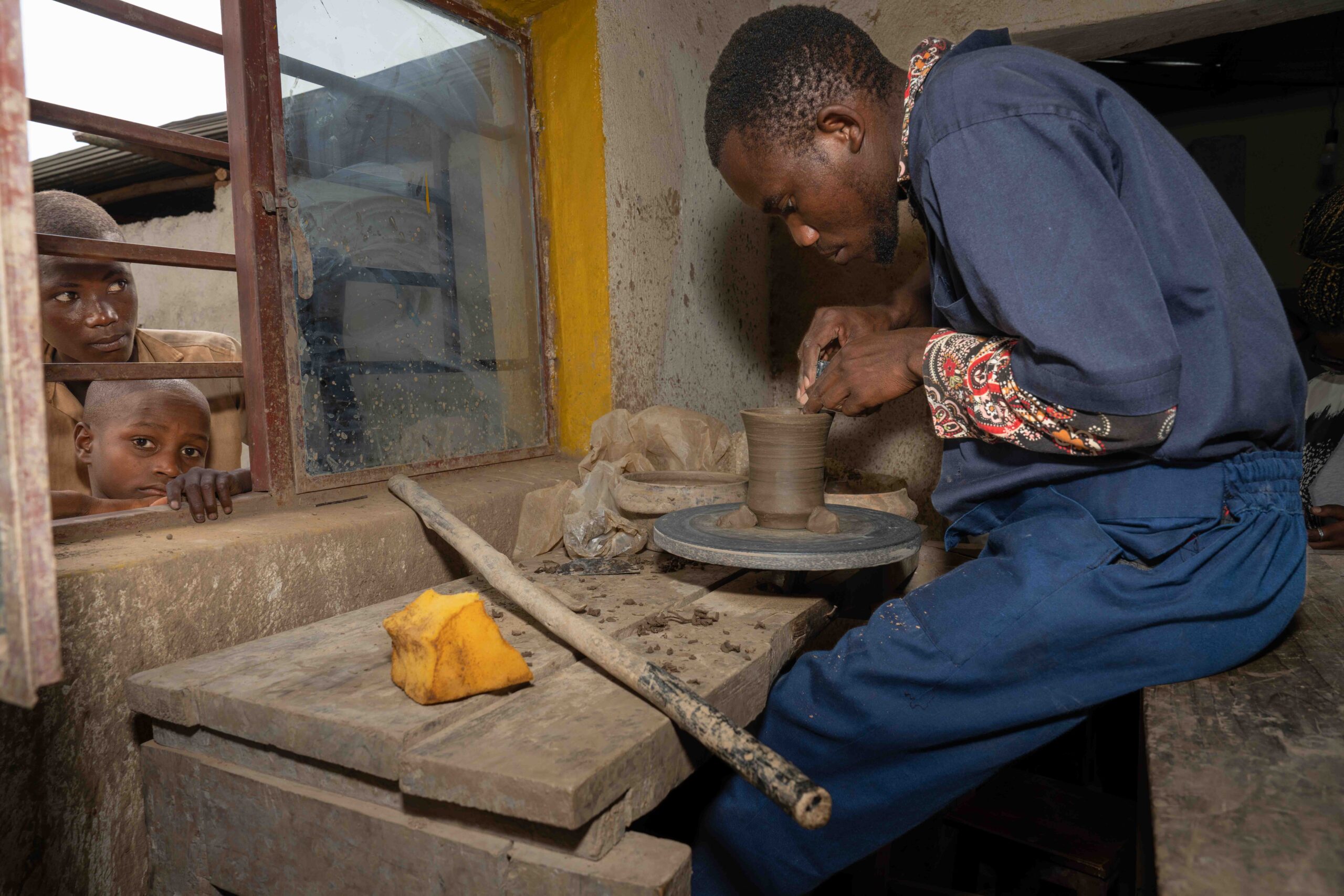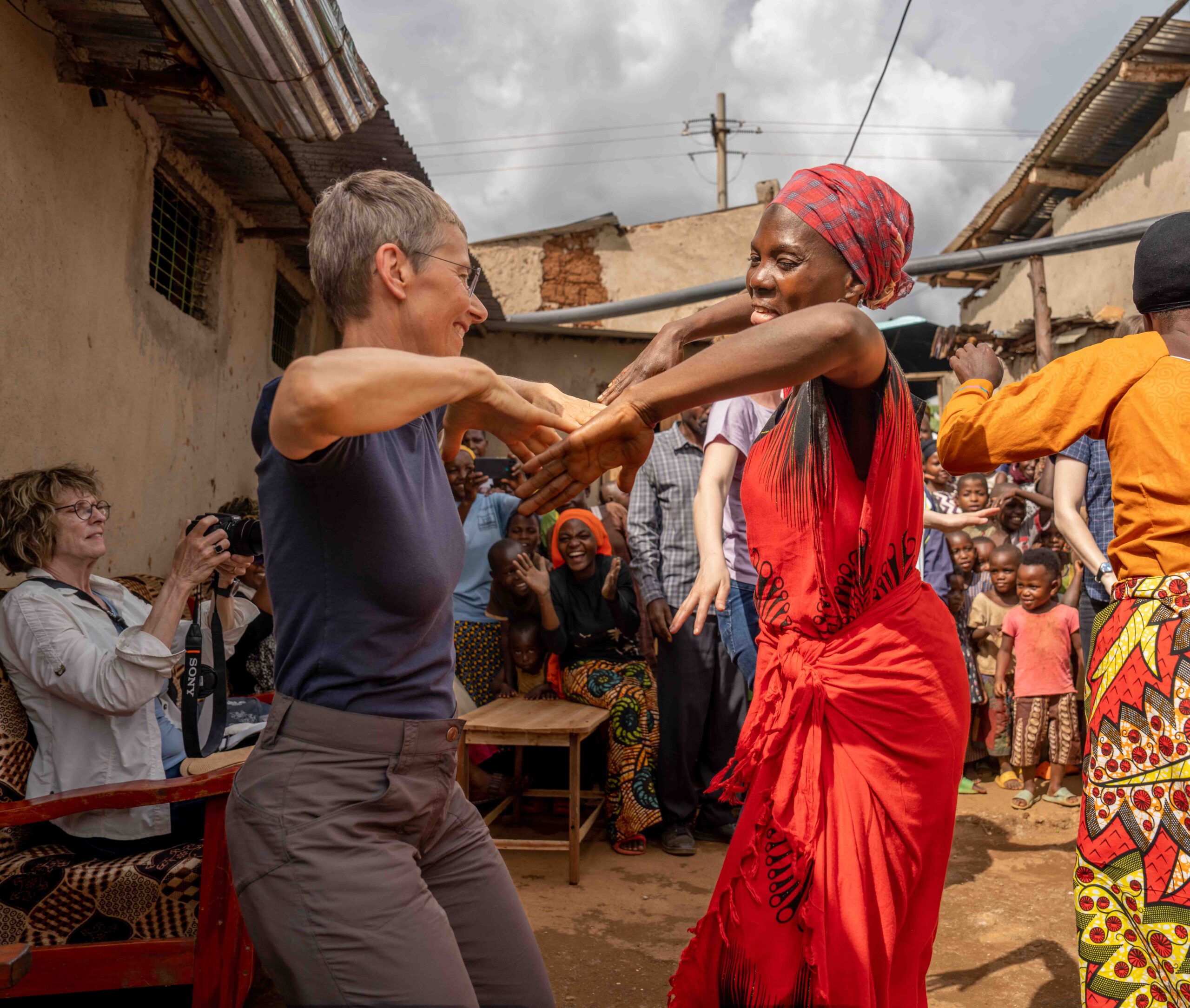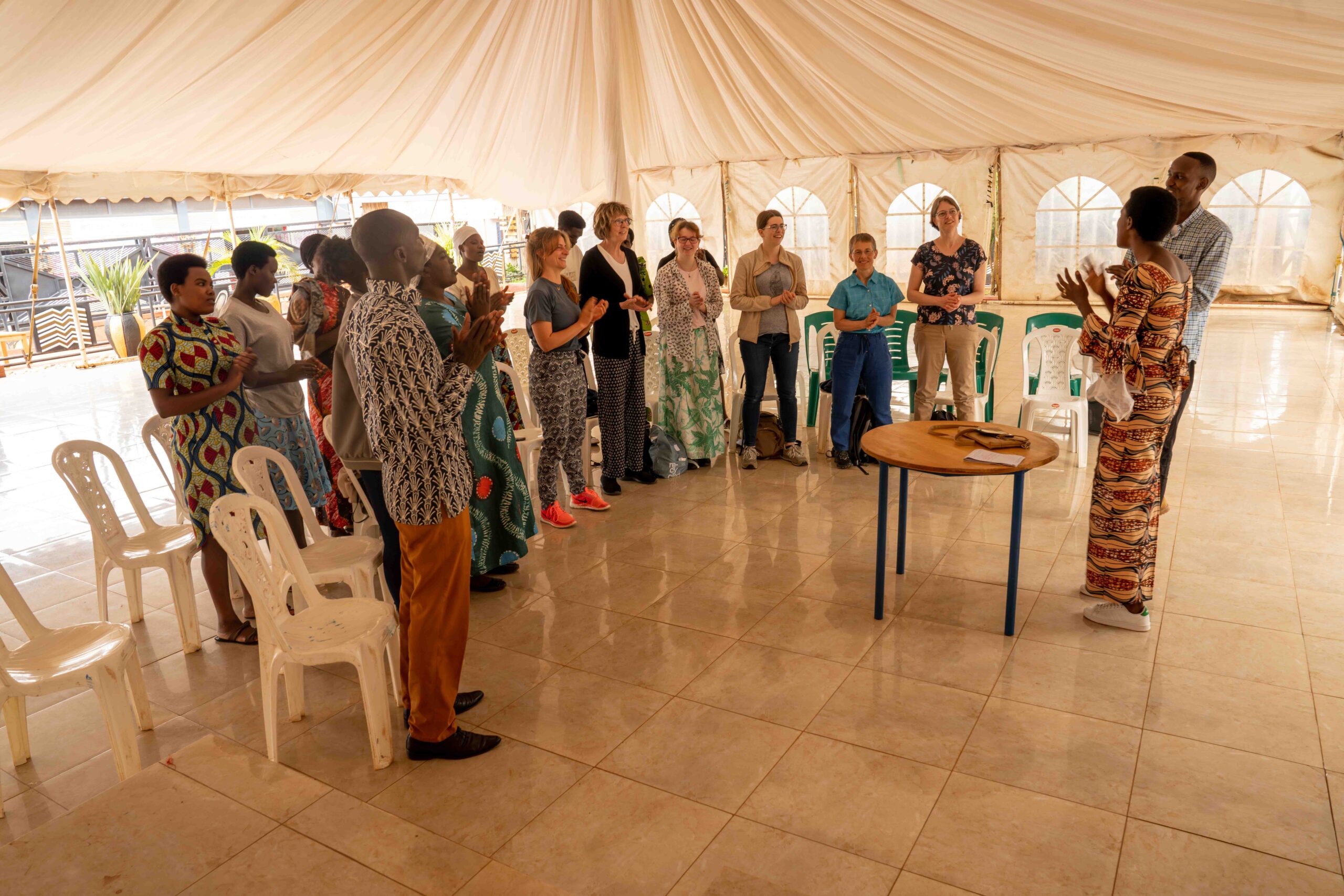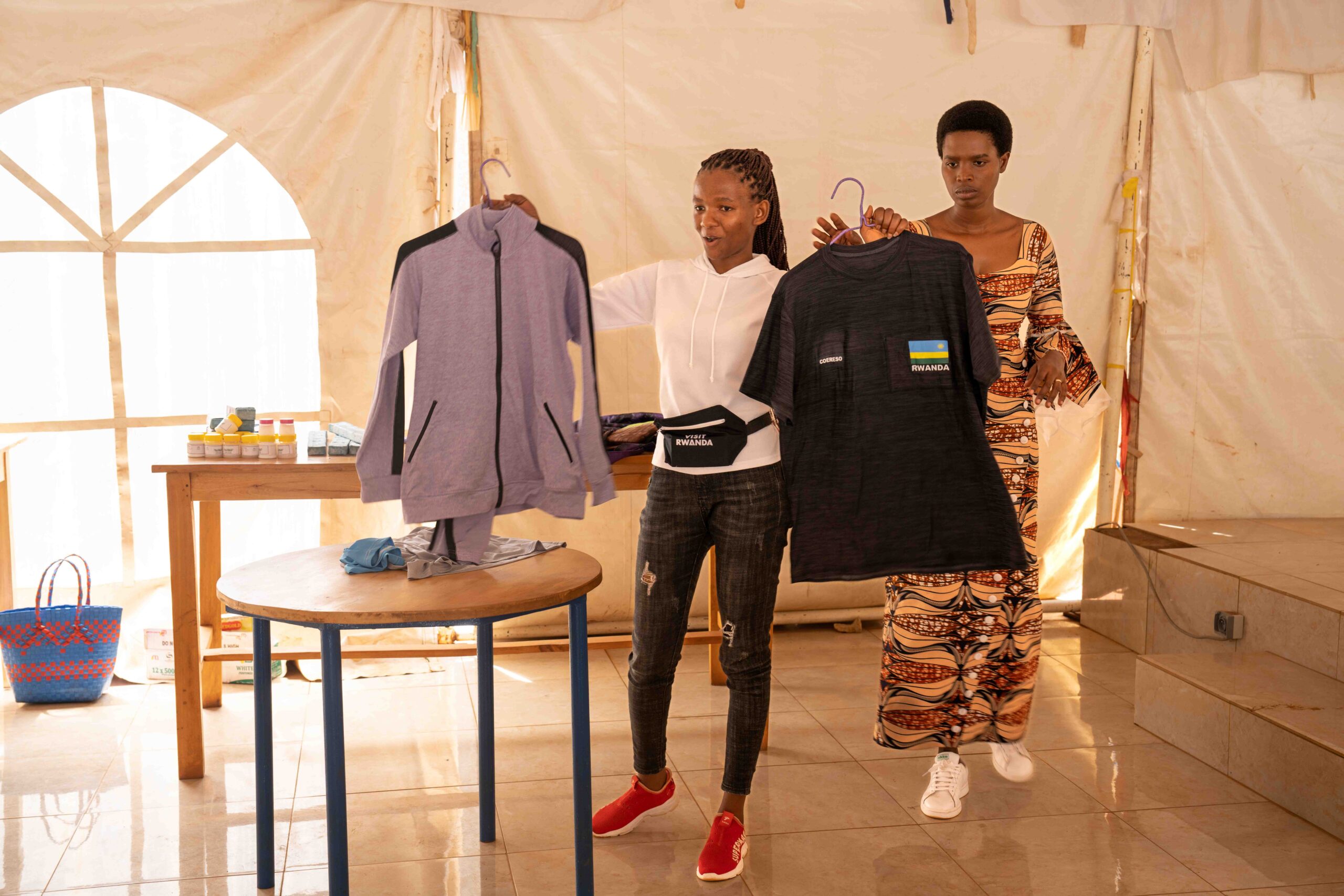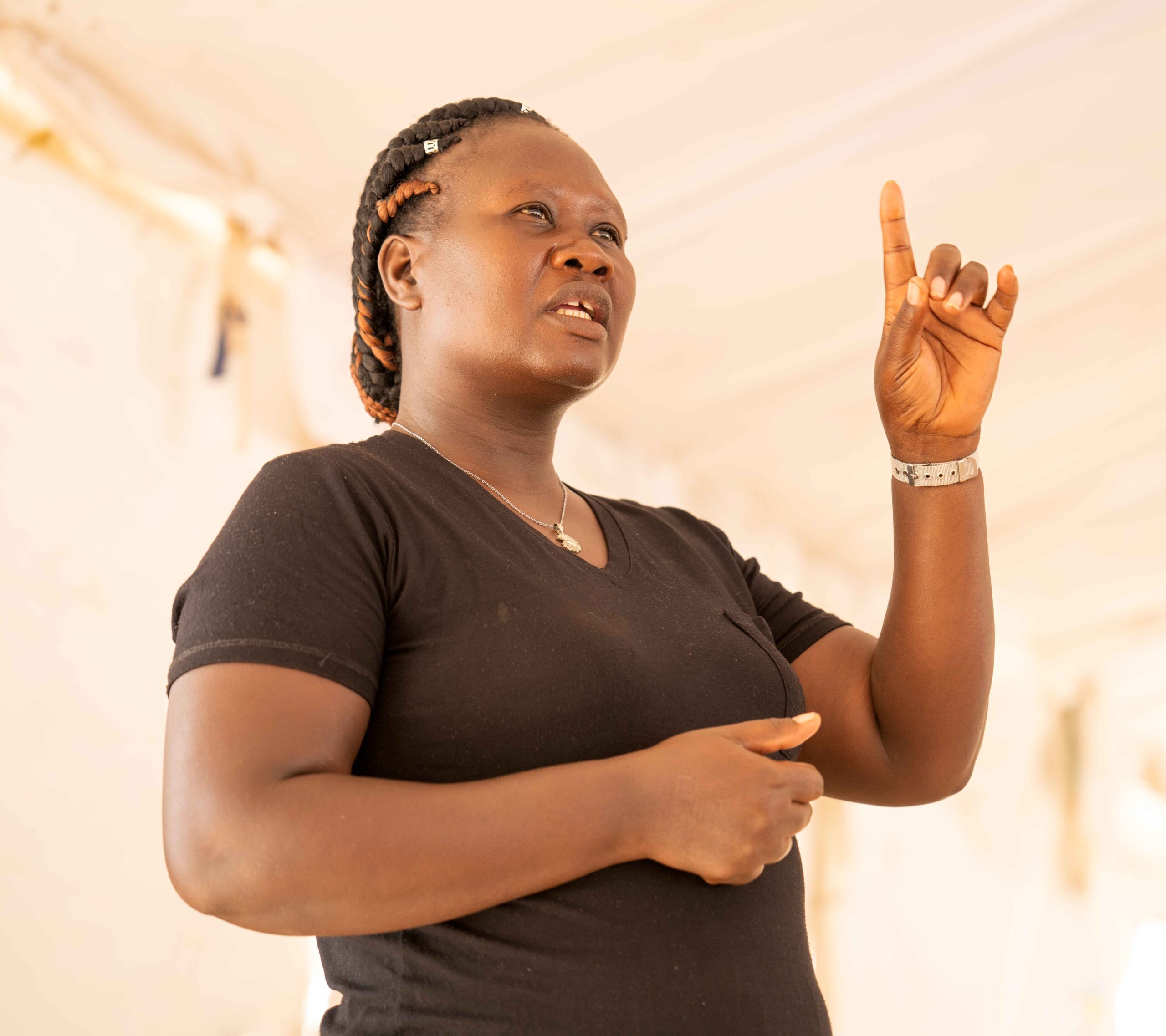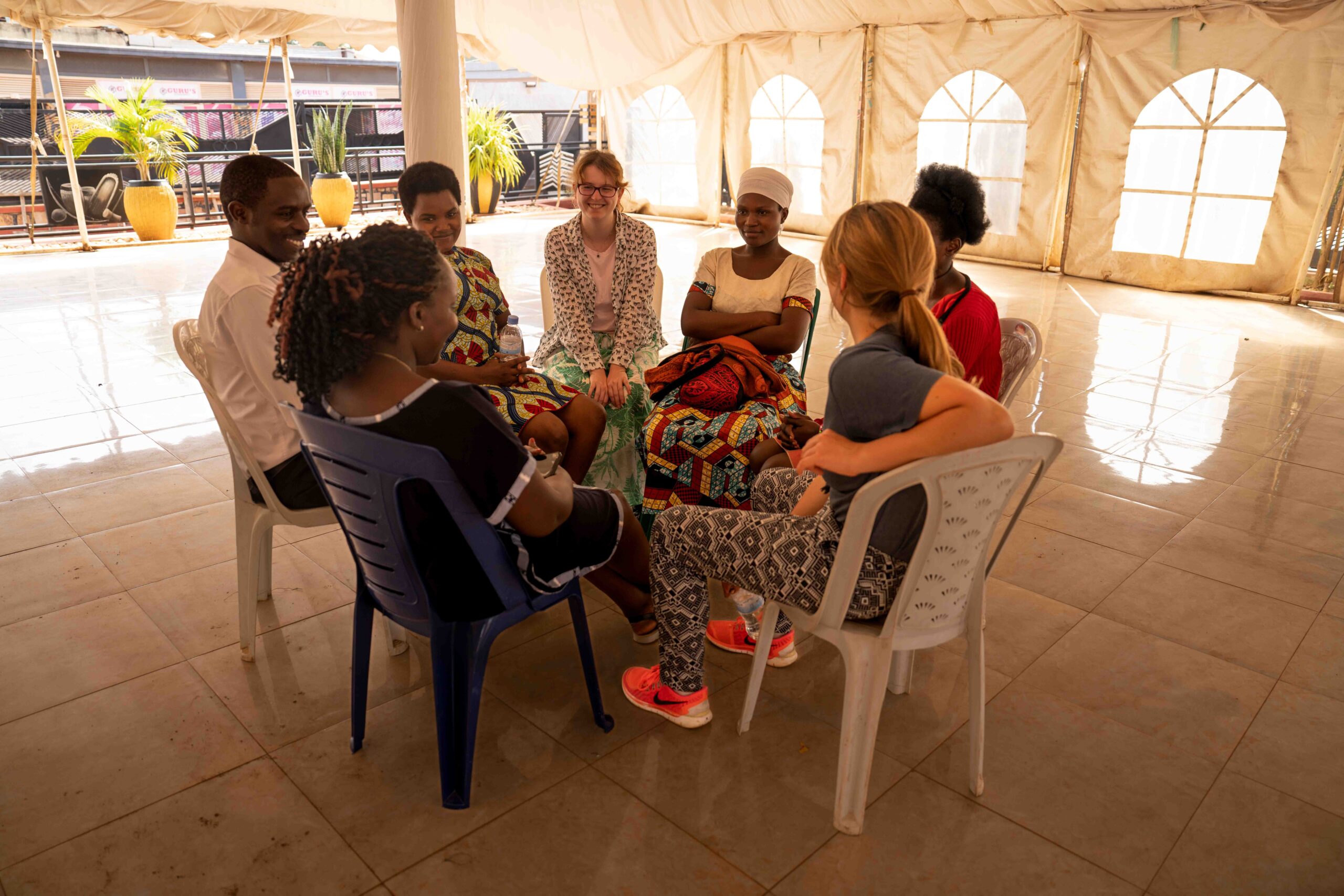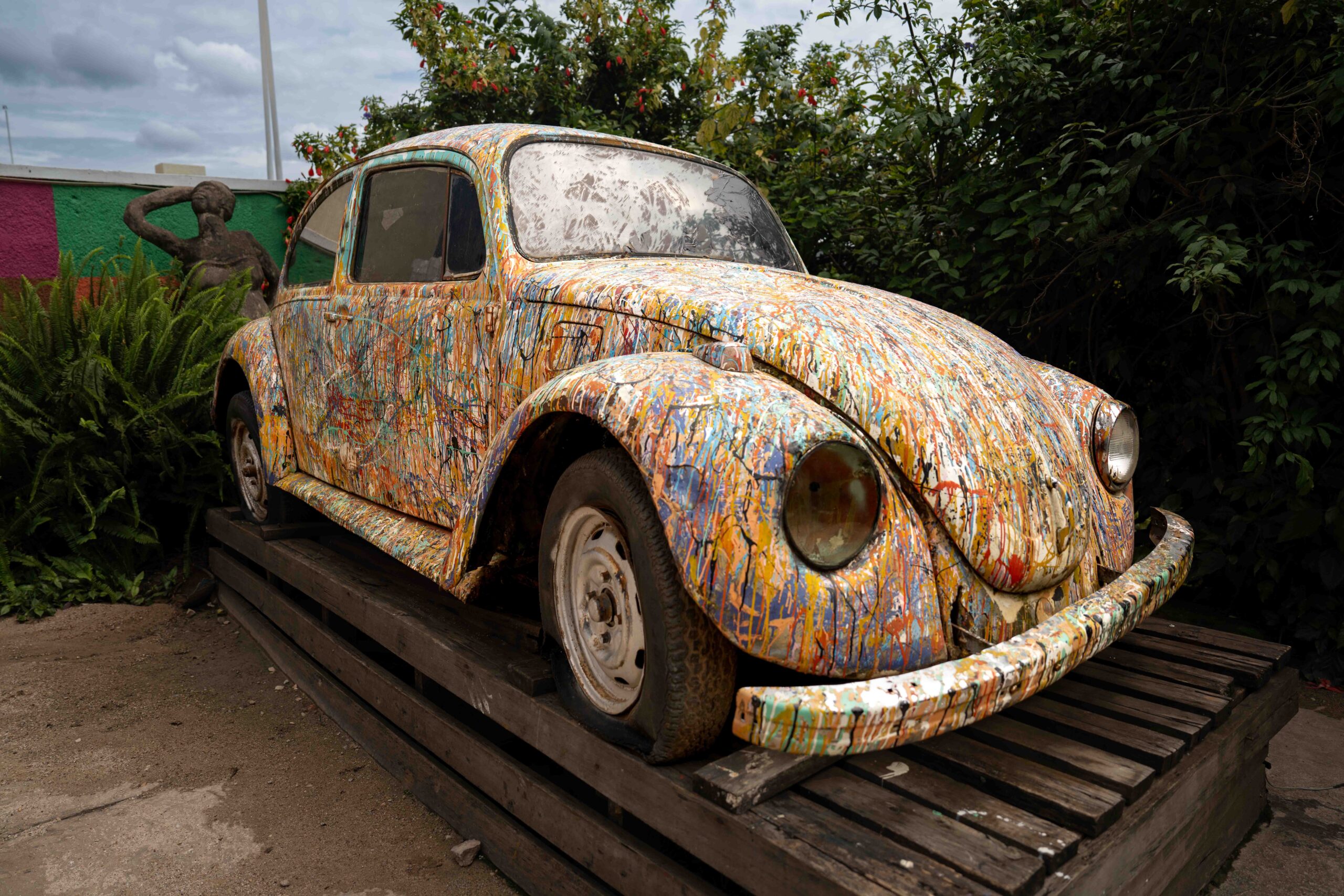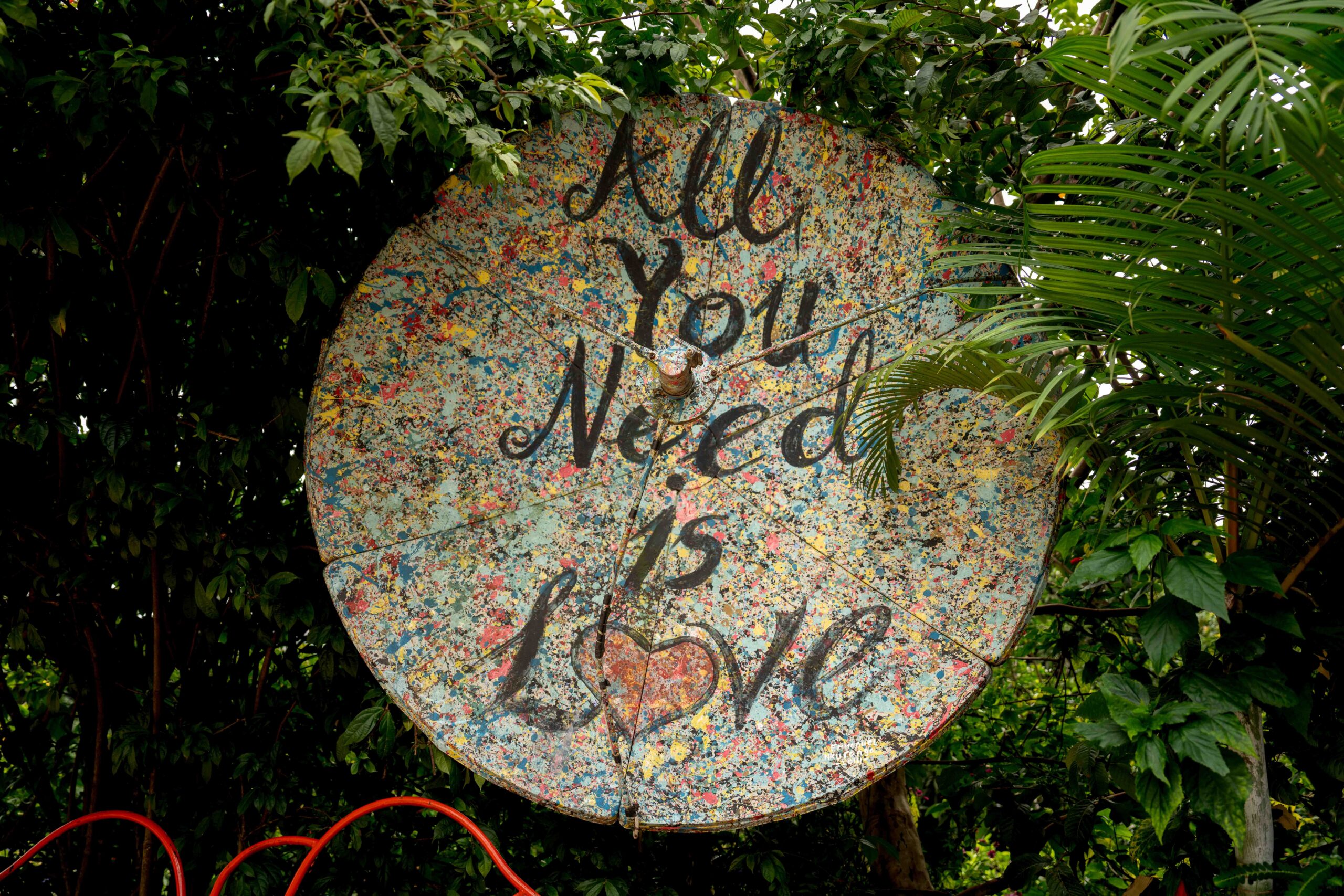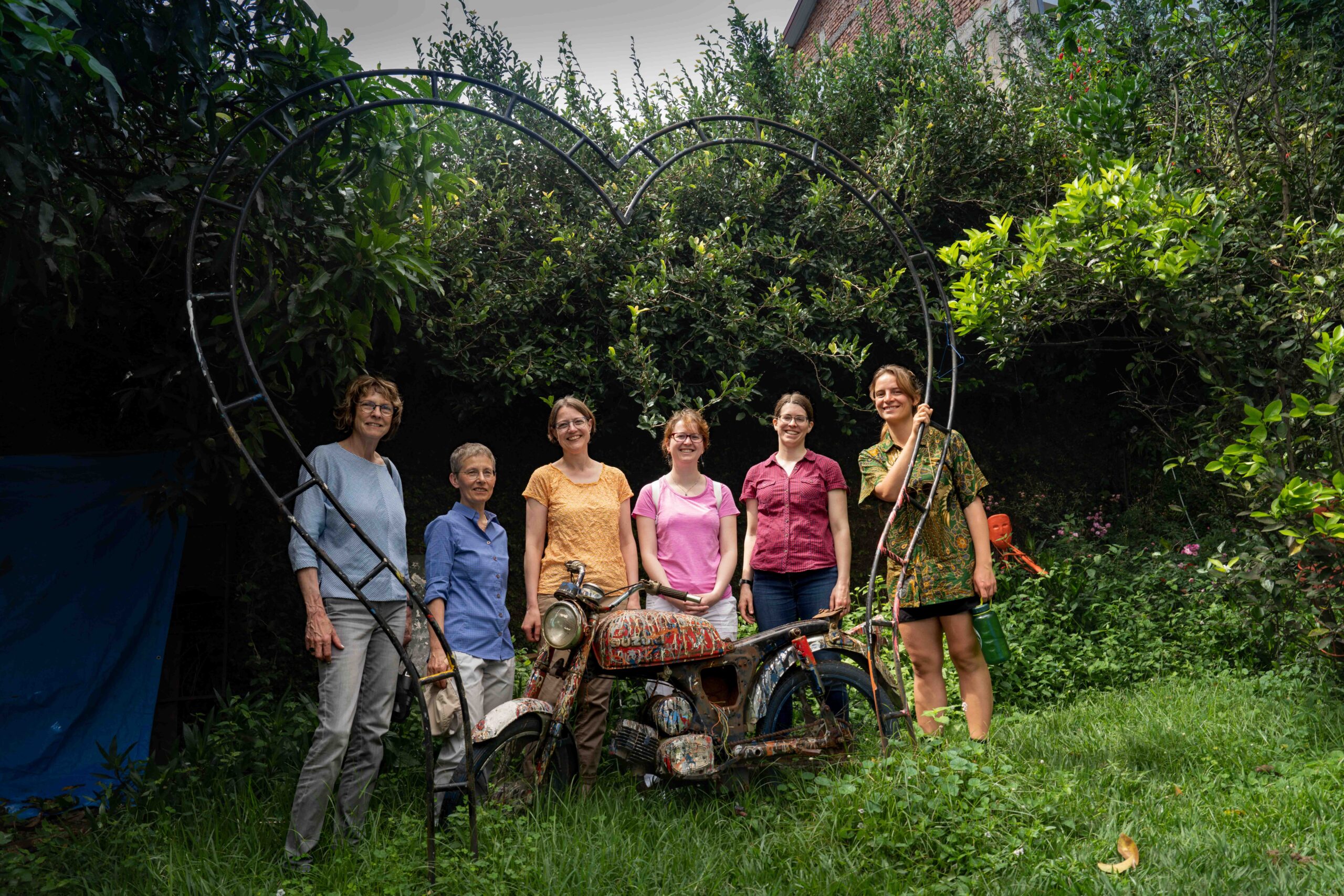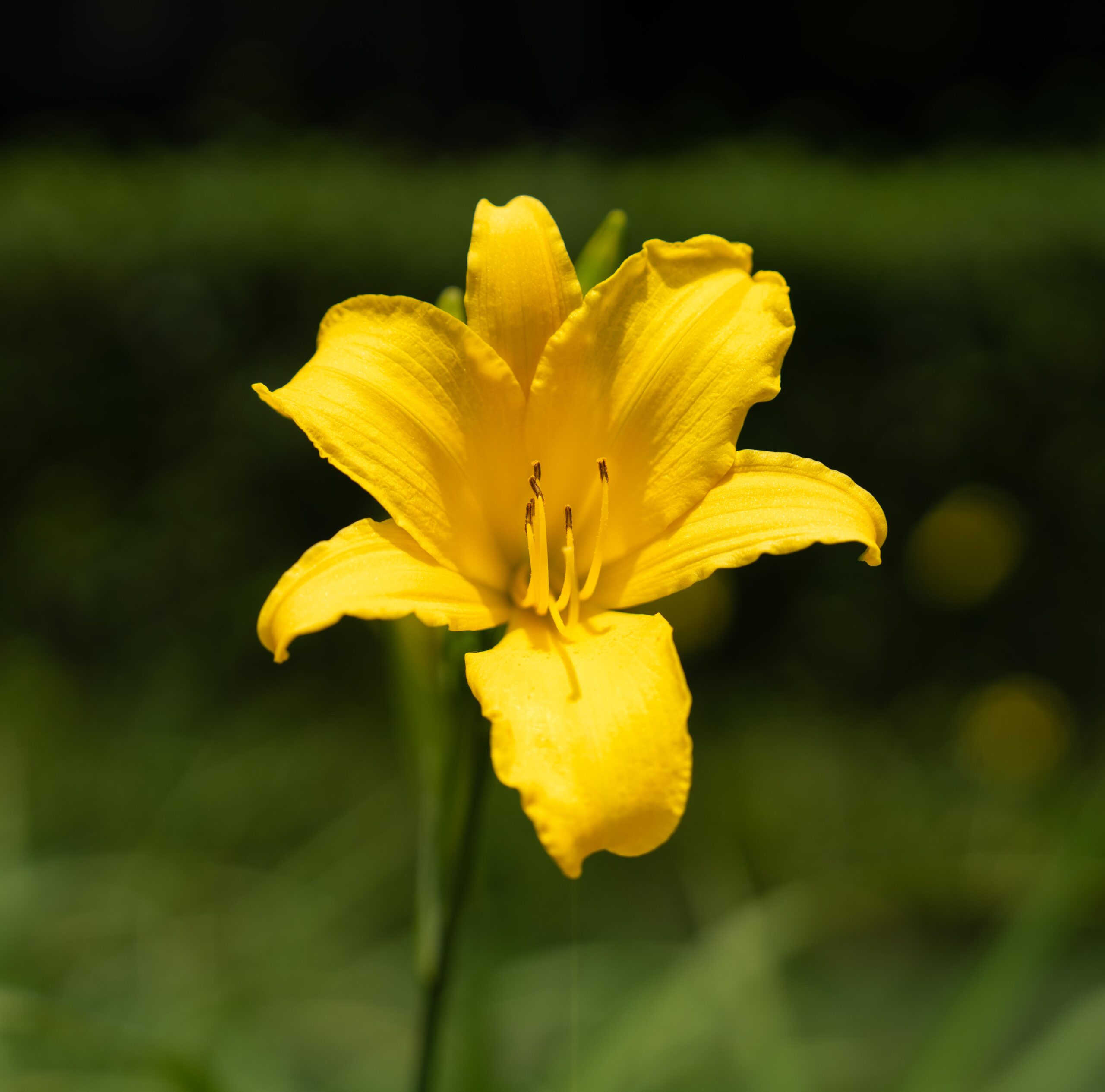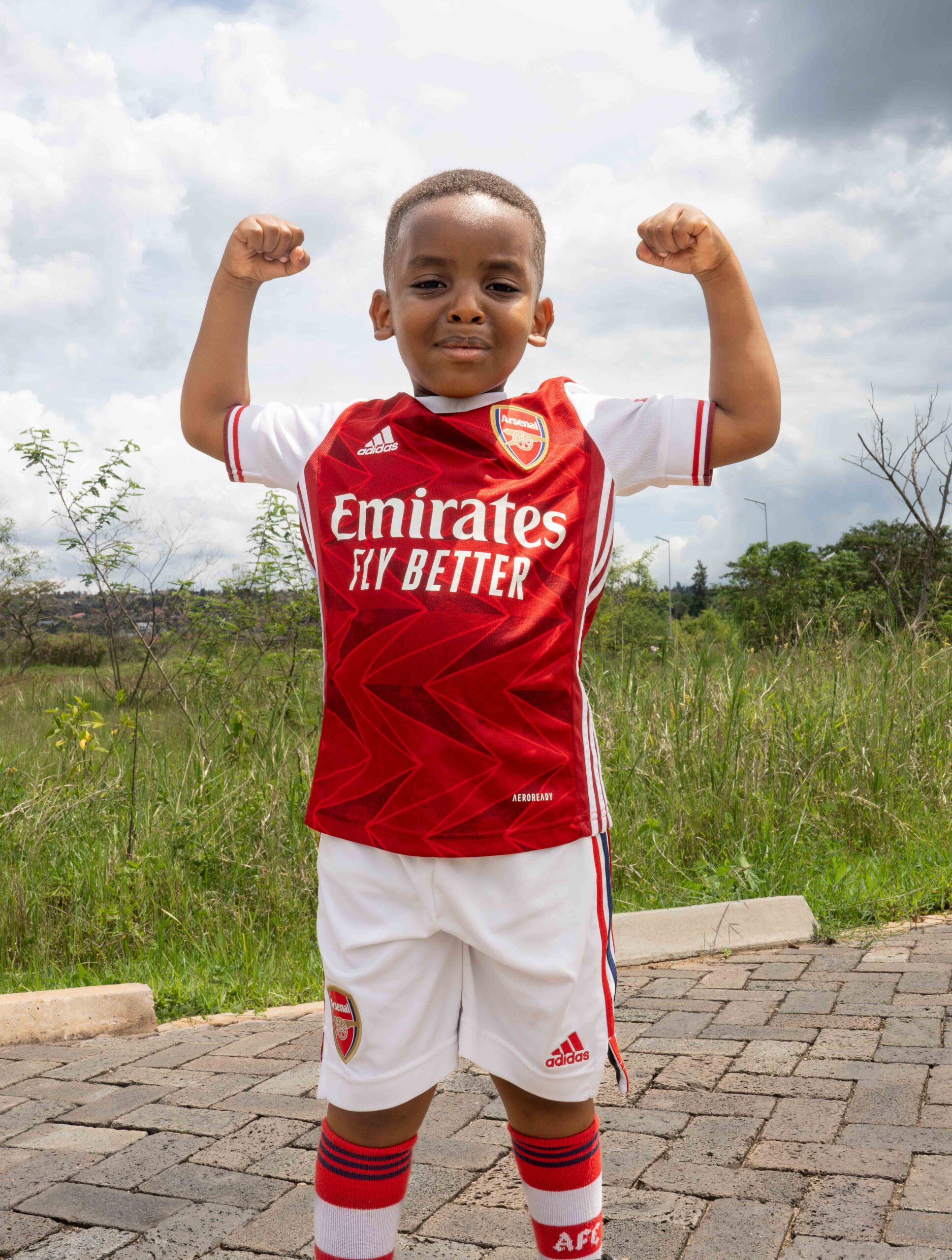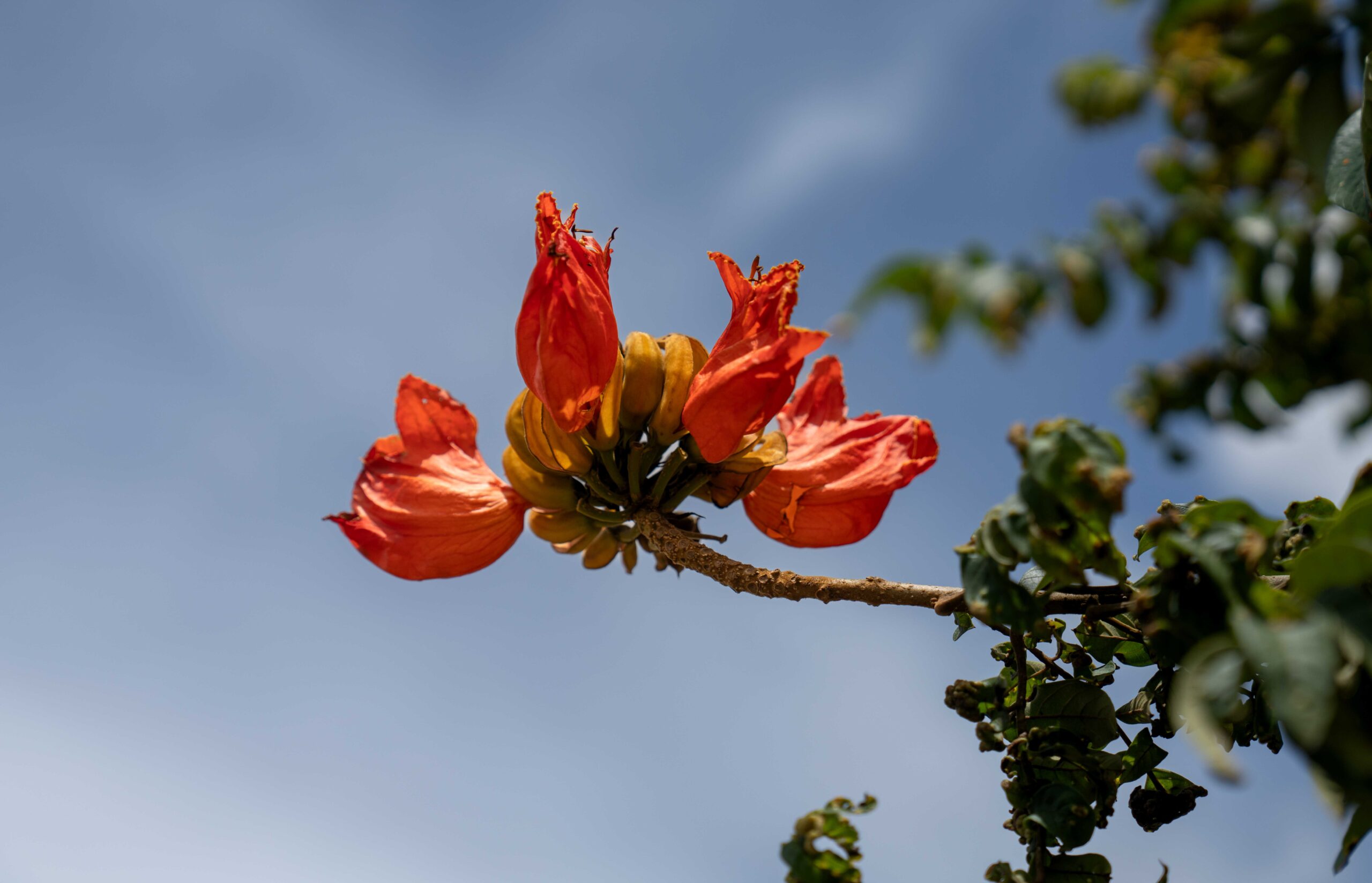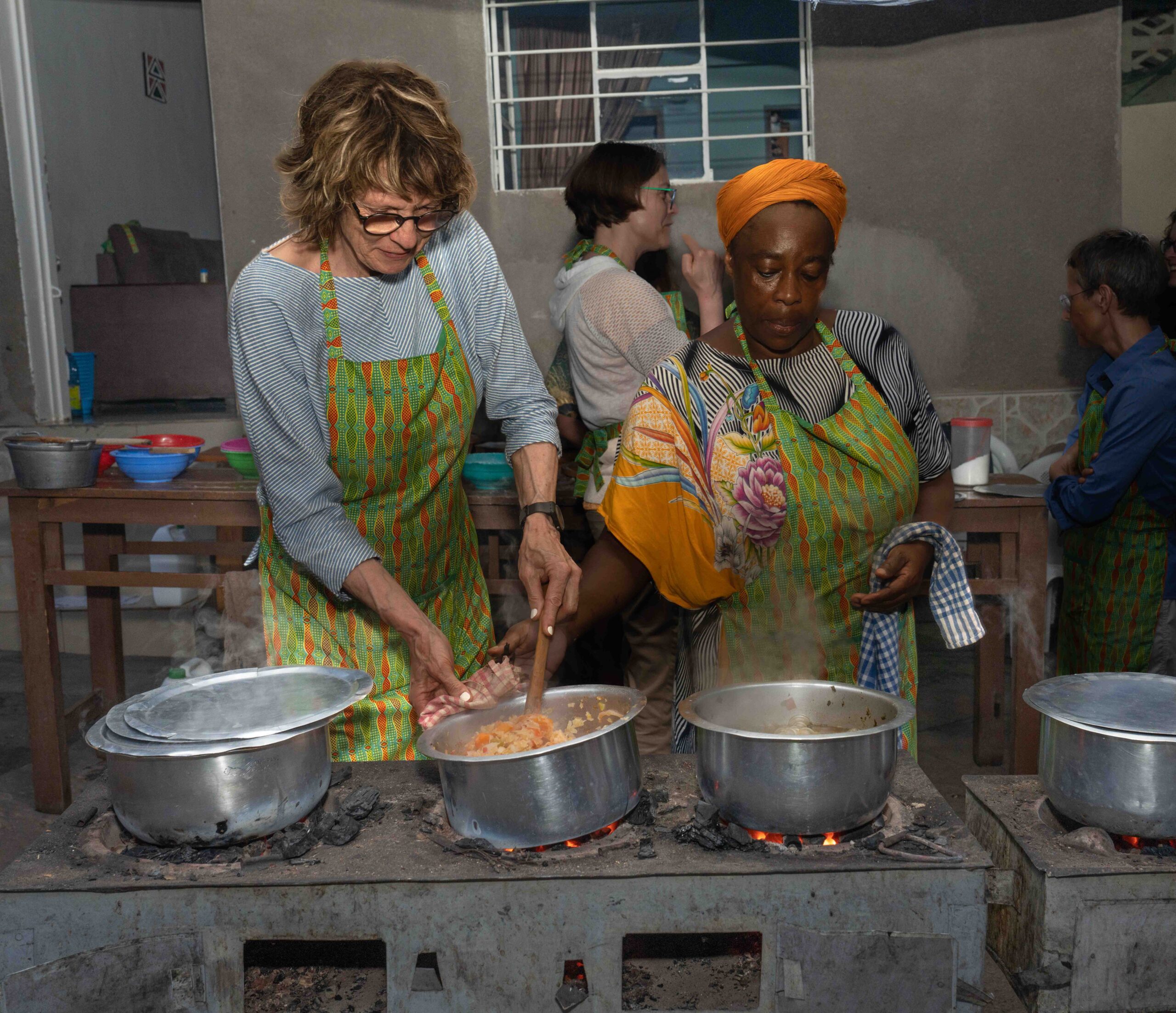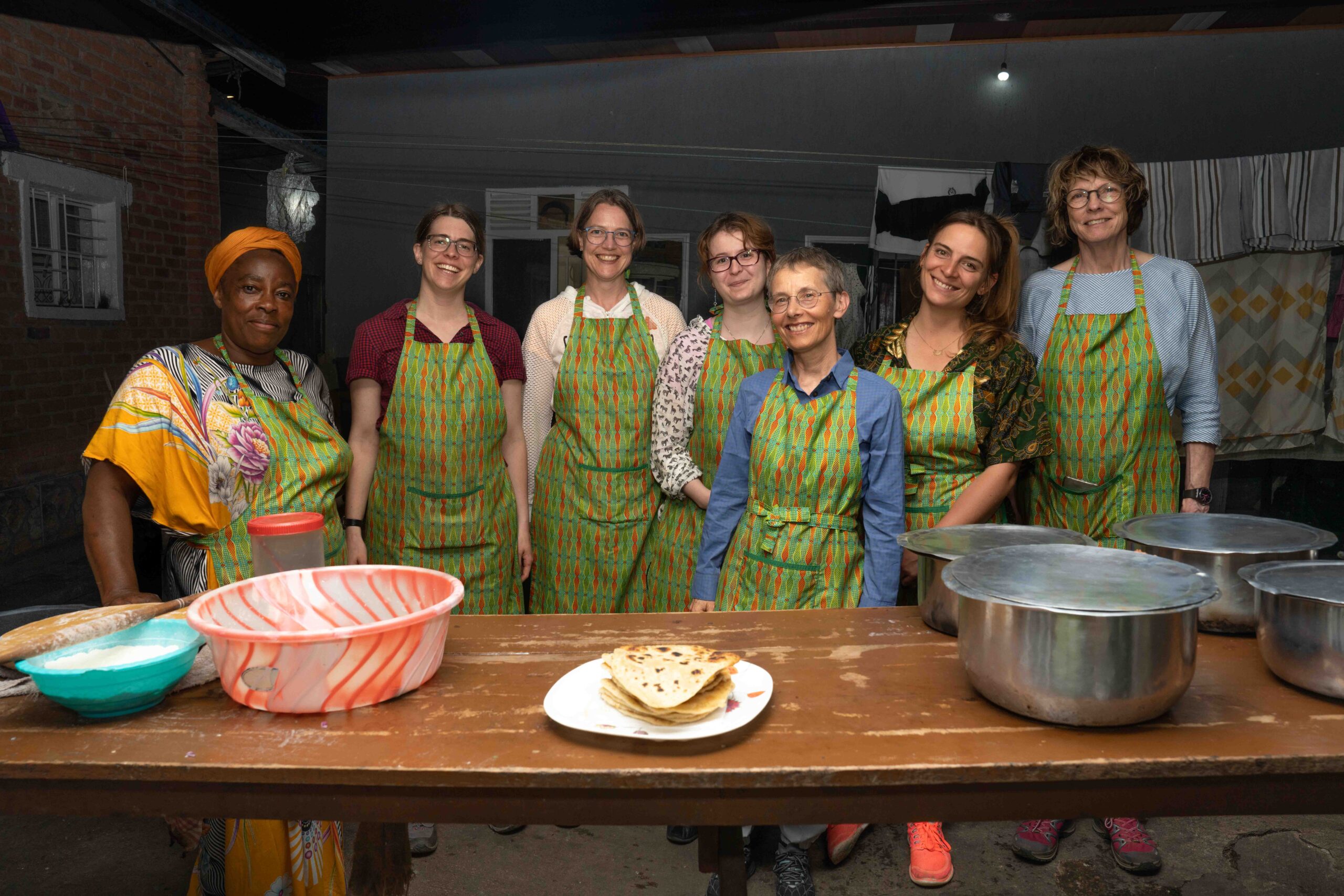
Teachers meet Teachers
From April 22nd to May 6th, 2023
The Protagonists
- Victoria Graf
- Anja Keller
- Barbara Roos-Jäggi
- Jeannine Huser
- Valérie Pittet
- Claudia Secchi
May
1-2
Respectful, recognizing encounters
TEXT: Claudia Secchi
Now the time had come! With anticipation and excitement, but also with a certain tension, we made our way to the school, where we met the Rwandan teachers for the first time.
Our bus was loaded with six suitcases filled with various school materials that we had collected over the past months. We had given a lot of thought to the project beforehand. It was very important to us that it should be an exchange on an equal footing and that we should not be perceived as teachers who show the Rwandan teachers what ‚real‘ teaching should look like.

Photos: Eric Dieth
Upon arrival, we were already awaited by the teachers and the children. Joyfully, but still a little reserved, we were warmly welcomed by them. Gradually, the teachers from the other two schools, who were also participating in our exchange, arrived.
To welcome us, the children of the three kindergarten levels and the first grade gathered in the schoolyard and sang various songs for us.
After that, we all went to a classroom. The first morning was arranged so that teachers from the school and we took turns teaching. The other teachers watched, observed the lessons and thought about the different ways of teaching. In the first lesson, the children from the third year of kindergarten were taught by their own teacher. The topic of ‚light‘, in which the students had to learn the vocabulary of different light sources in English, was a particularly good fit. Because of a violent and prolonged thunderstorm, the room was plunged into semi-darkness and the light sources helped to brighten the classroom a bit. Jeannine, Barbara and I were already thinking about how we were going to teach under these conditions afterwards. There was no electricity in the school. We had chosen the song ‚If you are happy‘ as the lesson topic in Switzerland, in order to use it to introduce the different feeling adjectives and to practice the adjectives in different sequences. In addition to the lighting conditions, another challenge was the fact that the children understood only very rudimentary English, although they are mainly taught in this language. We tried to make ourselves understood with a lot of showing, miming and pantomime. The children did their best to follow us new teachers and the partly for them unfamiliar forms of teaching. After the break, another teacher from the school taught a 1st grade class and in the last lesson Victoria, Valérie and Anja introduced counting exercises with dice, mutual massage forms with hands and hedgehog balls as well as a song with enumerations. The children participated with joy and were attentive, although this was already their fifth lesson. We were very surprised that children of this age are taught for five lessons in the morning, and we were impressed how the teachers managed to keep the children’s attention for so long. The only teaching materials available to them are a blackboard, paper and pencils. The teachers taught with a lot of verve and patience. Almost exclusively, frontal teaching was used as a methodological form. The children learned new contents and the consolidation of what they had learned mainly by speaking and repeating. Despite the use of this method, the lessons are dynamic and the teachers have a caring approach to the children. I liked the fact that the teachers put great emphasis on promoting the community and that they and the children especially appreciate the achievements of the individual students.
Photos: Eric Dieth
After a joint lunch, we exchanged our observations of the individual lessons from the morning. The majority of us expressed ourselves cautiously and with restraint. We first had to get to know each other and wanted to choose the individual words carefully so as not to hurt anyone. It seemed to me that during this first exchange there were a wide variety of expectations, fears and uncertainties. It was very valuable and helpful that Eric moderated the conversation. He has known the teachers for several years and enjoys their trust. With all new encounters, it takes time to establish relationships and build trust. We then showed the teachers what school materials we had brought and explained what could be done with them and how they could be used in the classroom. Last but not least, we prepared the lessons for the following day in mixed groups. The group that taught the 1st grade was composed of the class teacher, a teacher from another school, Barbara and me. We thought that they would be reluctant to try out the new ideas and would stick to what they knew, but we were proven wrong in the days to come.
Photos: Eric Dieth
The joy among the children and teachers was great to see us when we got off the bus in the schoolyard on the second morning. The children ran up to us and greeted us with a handshake or hugged us.
After a few songs, which all the children sing together every morning in the schoolyard, we went to the classrooms.
In my group the subjects English, mathematics and animal science were on the schedule this morning. Partly the Rwandan teachers taught together and Barbara and I taught together. In some sequences, however, there was already cooperation in mixed groups. The local teachers observed attentively the sequences in which Barbara and I used the materials we had brought with us, such as ropes or colored bätzle.
During the big break, we took various ropes, tennis balls and a rubber mitzvist with us and showed the children all the games and possible uses for these things. With enthusiasm and joy, the children tried out the new play materials with us during the entire break.
Photos: Eric Dieth
After lunch together, we prepared lessons in the same group for our next meeting on Thursday. This time we worked in mixed groups right from the beginning. Only already from the day before and today a lot had happened. There was already a certain trust in each other and on this basis it was possible to prepare the lessons together, exchange ideas and there was a willingness to try new things. It was impressive to see how much becomes possible in equal, appreciative relationships.
Looking forward to the joint lessons on Thursday, we said goodbye to each other and drove back to the guesthouse in Kigali with ‚our‘ bus.
April
22-23
Muraho Rwanda! (Hello Rwanda!)
TEXT: Victoria Graf
On 22.04.2023 we started our journey at Zurich airport at 08:00 to Rwanda. After a stopover in Istanbul, two bumpy landings and a bit of delay, we arrived at Iris Guest House in Kigali at about 03:00. We had a long journey and accordingly a short night.
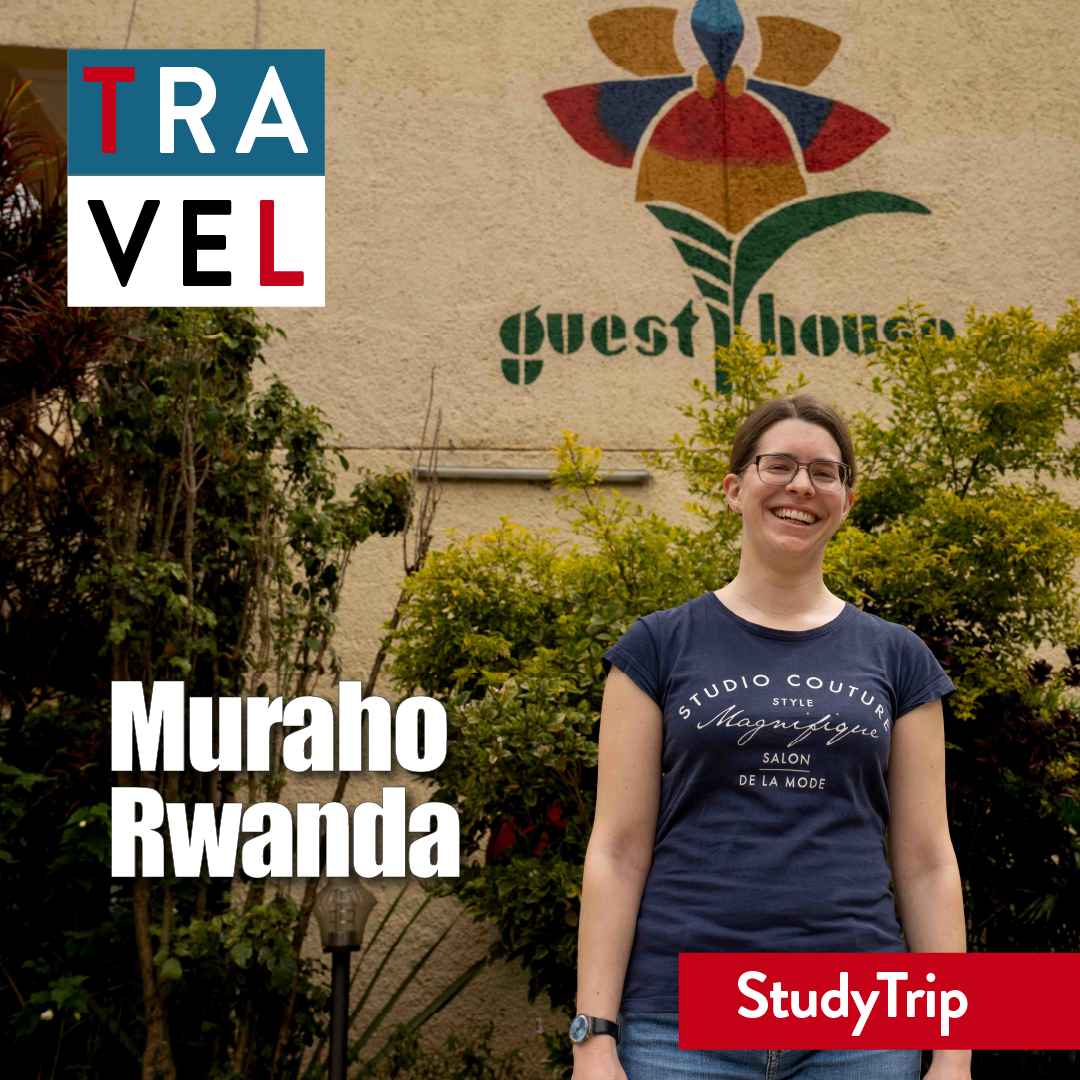
Photos: Eric Dieth
Gusura Kigali (Kigali sightseeing)
On the program for Sunday was a walk through Kigali, a visit to a museum and a language course. First of all we had to get used to the new climate (18 – 25° C). Our „city guide“ Eric kept telling us interesting facts about people, the history and buildings. In the Kandt House Museum we got more information about the history of Rwanda and Kigali. Afterwards, we continued by motorcycle cab to lunch. Some of us sat on a motorcycle for the first time ever on this occasion. In the late afternoon we received a language course in Kinyarwanda from Sandrine. Our brain cells were vigorously activated. Now we know how it feels to learn a completely new language. Muraho! Nishimiye kubabona. Turi abasuwisikazi. Turi abarimukazi. (Hello! Nice to meet you. We are Swiss. We are teachers).
X
X
X
April
24-25
Between tradition and modernity
TEXT: Jeannine Huser
Today we have to get up early, because we have a lot of exciting plans. By bus we leave Kigali and head south. Through the window we catch a glimpse of the everyday life of the people who live outside the city. Children in different uniforms are on their way to school, adults are driving to work or working in the fields by mototaxi or by a full bus. Everywhere along the roadside goats are eating tufts of grass, occasionally cows can be seen. Impressive are the people who transport all kinds of things with their bicycles: Bags full of vegetables, several water canisters, bundles of wood and even chairs. And mostly uphill, because the country is very hilly.
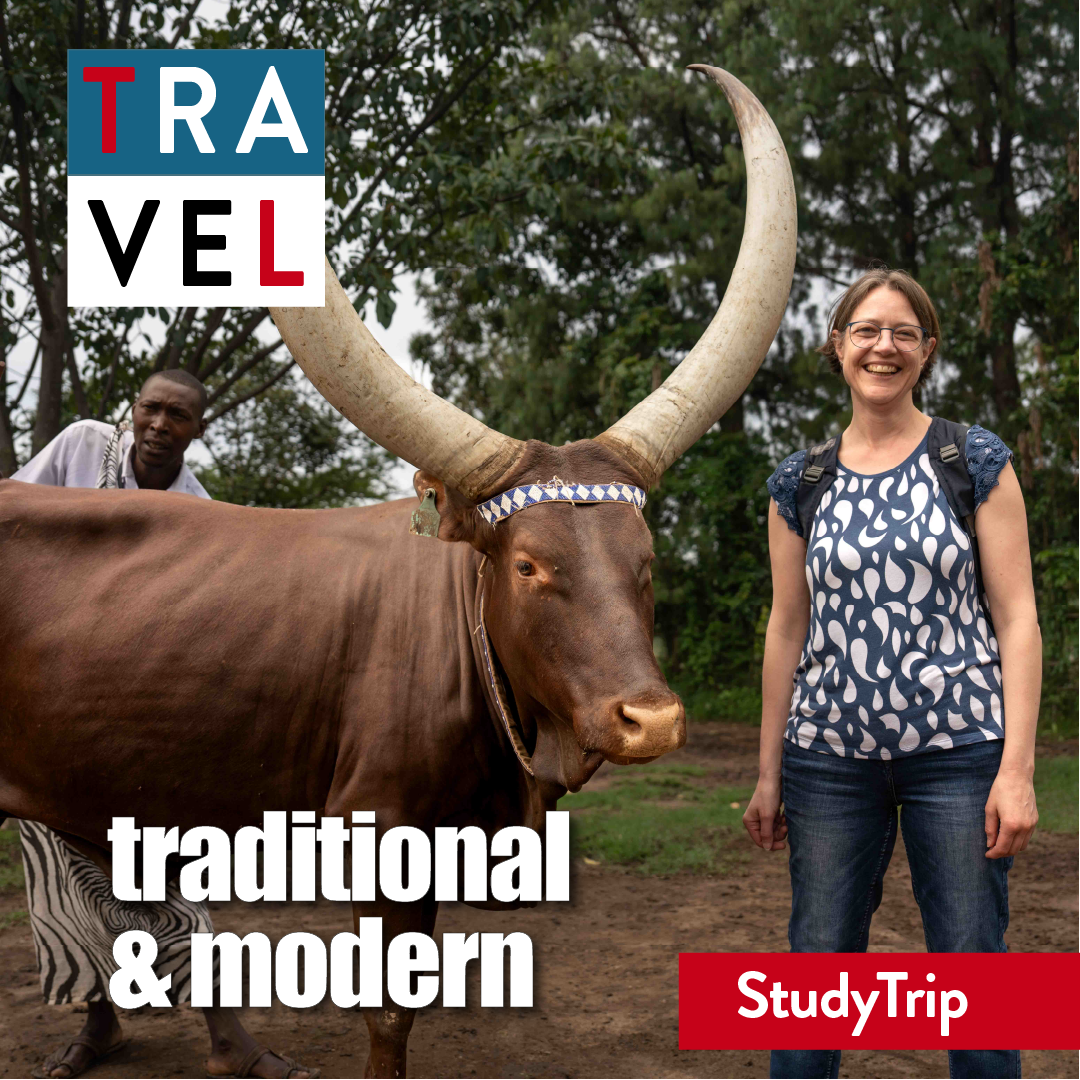
Our first destination is the Kings Palace. During an exciting guided tour we get an insight into the life of former kings. Especially interesting are the original huts, where the king held audience, but also lived. In the new palace from the 20th century we learn interesting facts about the last kings of Rwanda and the colonial period. After we have also made the acquaintance of cows with huge horns, it is time for lunch, which consists of regional vegetables, rice, potatoes and goat kebabs. Freshly fortified, we continue overland to Kitabi, where we are already greeted by a cheerful crowd of tourism students. Immediately a lively exchange develops while we take a walk around the college. Over a meal together, we have the opportunity for even more exciting conversations. What the young people manage with great motivation and skill, the older management of the hotel manages far less well. Late at night we change our hotel rooms, as there is no running water. But this does not diminish the successful day and we are looking forward to the next day with the students!
Photos: Eric Dieth
Today the students take over. We make a small hike through the tea plantation. In between we learn again and again interesting facts about tea cultivation. For example, we did not know that the tea bushes can be used for years. We are impressed by a tea picker, who harvests the uppermost tea leaves by hand and thus manages about 20kg per day! Definitely not a dream job. After we could also look at the seedlings, we visit the tea factory. Two very dedicated employees proudly show us how the tea leaves are processed. It is an amazingly elaborate process where the tea is cut, dried, sieved and fermented in various machines before it is finally packaged. According to the employee, the world’s best tea is naturally produced here. After a midday snack, we walk to the beekeepers‘ cooperation. Here, too, an employee reports with great enthusiasm and acting skills how the honey is processed. As soon as we have put on chic white coats and a cap, we are even allowed to carry out certain steps ourselves under guidance and at the end, of course, the tasting of the forest honey is on the agenda. Finally we do a rapid test in the health center, which is necessary for the access to the Nyungwe National Park for the protection of the primates, and are astonished a little how simple the facilities are here. At the same time, however, we can see how blood reserves are delivered by drone in a very modern way!
Photos: Victoria Graf
x
x
x
April
26-27
Fighting Poverty
TEXT: Barbara Roos-Jäggi
At 8:30 this morning we left together with our Rwandan students towards Nyungwe Forest National Park. The oldest of the four national parks located in Rwanda, founded in 2004, covers 1020 km2. On the winding drive there, we saw our first monkeys, which we captured on photos. Besides Olive Baboons and Mountain Monkeys we also tried to get Duickers (a kind of antelope) on our lenses, but we did not succeed. The animals were too shy. After an hour we reached the Reception Center (about 2300 m.a.s.l.), where the students did all the formalities for us and where we also had to pay the entrance fee.

Now the adventure could start. Equipped with rain gear in the backpack, good shoes and water bottles, we started the Igishigishigi (fern tree) trail. From our guides we also received hiking sticks, which were a good help on the slippery trail. It was mostly downhill until we came to the three suspension bridges (Canopy Trail). Some of us crossed the bridges, which were up to 70 meters high, with great joy, while others were happy to get over the path as quickly as possible in the airy heights. Different plants were explained to us on the way and sometimes we could see the surrounding hills between the trees that were up to 80 meters high. Three trees remained in my memory because of their special nicknames: the „drum tree“, from which various objects and drums were made in former times, the „toilet paper tree“, whose leaves were used for certain needs in former times because of their fineness and the „love tree“, from whose crushed leaves a fine fragrance emanates, which lovers appreciated.
On our almost two-hour walk, we went back up to the starting point, where we enjoyed a good picnic together on the terrace at the Reception Center.
We were spared rain during our beautiful, unique, species-rich and lush green hike through the rainforest, which we all enjoyed very much and which brought us even closer to our Rwandan friends.
On the way back we made a stop at the Eco Lodge, where we rounded off our day with a drink on the terrace.
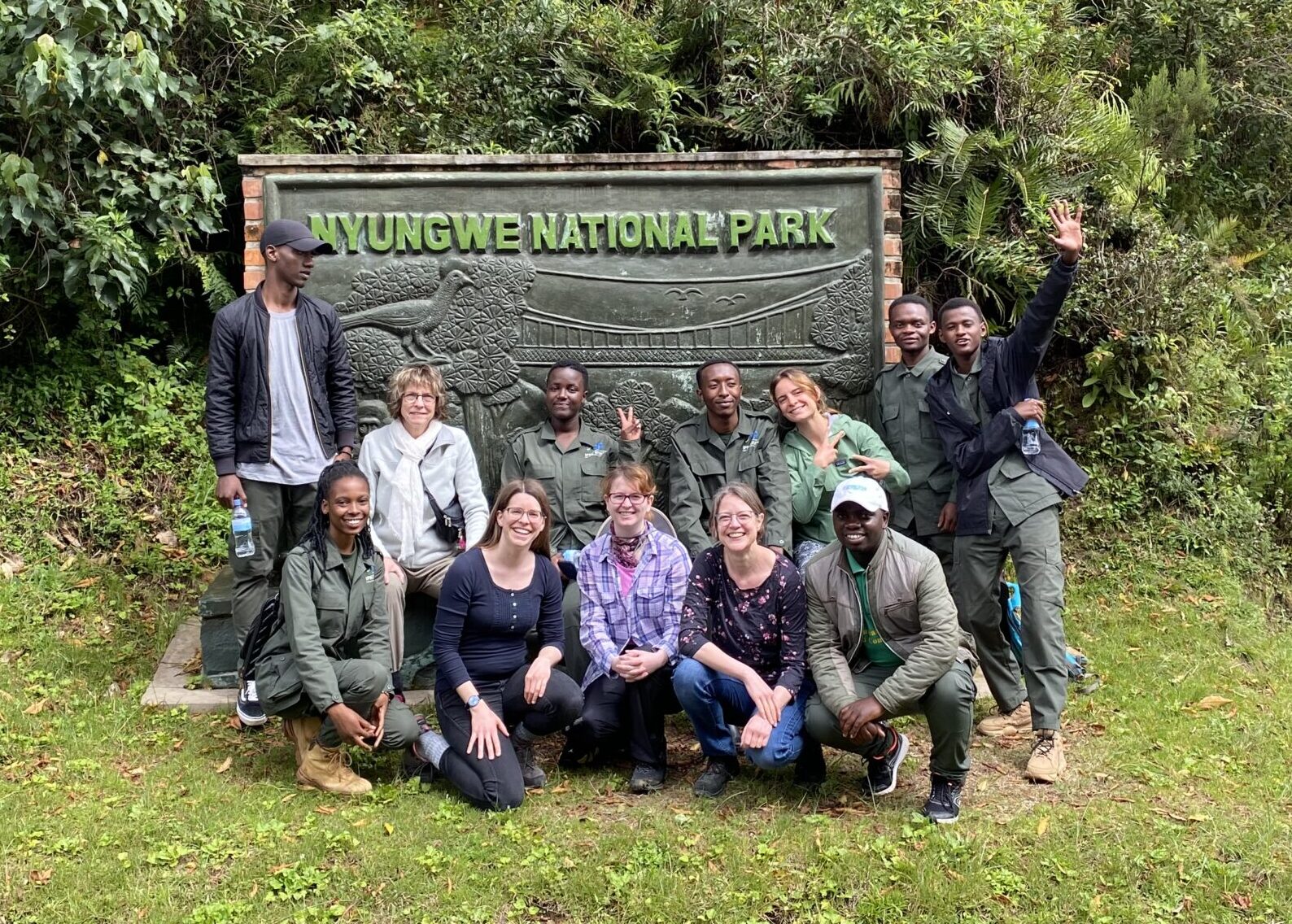
Photo: Jeannine Huser
Photos: Victoria Graf
With heavy hearts we said goodbye to our Rwandan students at 8 am. Now we started the long drive back towards Kigali through the very green hilly landscape. The longer we were on the road, the flatter the hills became and more densely populated. After almost four hours we turned off the main road and bought something to eat in a village-like settlement: samosas, bananas and mandazis. In front of the astonished eyes of the locals we ate our meal on the main square. Thanks to our capable chauffeur, we continued safely on a potholed natural road to Kagina, home to a population of disadvantaged people that COERESO supports. Through this help, the „Best Pottery of Rwanda“ was founded, which in the meantime gives ten young people a professional perspective through a vocational apprenticeship. Another success can be seen in the fact that, for example, with the cultivation of mushrooms, the children are getting better nutrition and malnutrition is decreasing. Further projects are in planning.
We were greeted with music and dance and the children could not get enough of the whites (muzungus). We were given a detailed explanation of the production process. At the end we could also buy pottery. As a farewell we danced again and were kindly invited to join the dance. This visit was very impressive and the friendly people with their simple, sometimes unfortunately shabby clothes will leave a lasting impression on us.
After another hour of driving we reached our hotel in Kigali and enjoyed a shower with warm water. At the end of the day we had a fine dinner.
Photos: Eric Dieth
April
28-29
Past and Present
TEXT: Anja Keller
Unfortunately, some travelers did not feel so fit despite the opportunity to sleep in. Fortunately, a rich breakfast including various fruits, waffles, cheese, vegetables and coffee/tea was offered at the Iris Guest House for refreshment.
At nine o’clock we left with our bus to Masaka. There we were greeted by Albertine and led into a large event tent. We were joined by about 20 workers from the Twambikane community, the Abiyungurubumenyi and former workers from the ARISE TVET School to present their craft.
First there was a general welcome and communal singing. Thanks to Dani’s translation we were able to follow all the kinyarwandan explanations well.
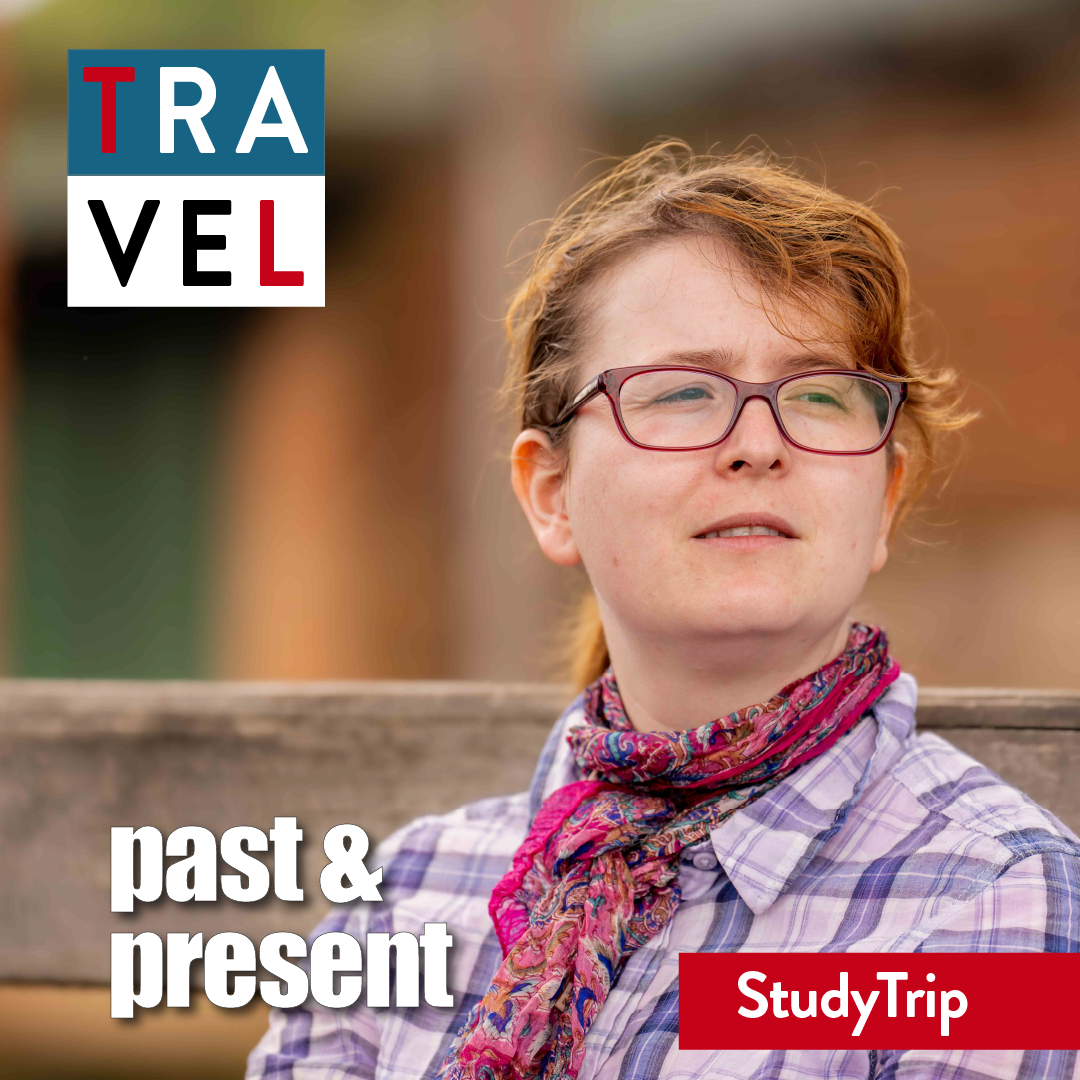
Photos: Eric Dieth
With much pride and enthusiasm, representatives of four crafts (soap production, fabric dyeing, sewing, hairdressing) showed us their products and told us how, also thanks to the training and support of Coereso, their lives have changed for the better and what great visions they have for the future.
We used the time we had free to stock up on soap, have our measurements taken for (traditional) clothing and have our hair and nails styled in the beauty salon.
After a very tasty lunch (buffet with local delicacies) and small technical difficulties we told about our life in Switzerland. A small PowerPoint presentation accompanied our stories.
After that, we formed four groups to exchange ideas. Despite translators, the start in the groups was quite bumpy and restrained. The locals introduced themselves and told a bit about their lives. Based on questions, an exchange took place and we learned interesting things about the current difficulties (lack of equipment in the profession, administrative hurdles such as permits, financial bottlenecks) but also about their visions for the future (vehicles for product transport, business spin-offs, teaching new people, etc.).
With many new impressions and anecdotes for home we returned to the Iris Guest House.
Today was Umuganda. Always on the last Saturday of the month, the population is encouraged to do something for the common good, e.g. collect garbage together or repair work. For us this meant a free Saturday morning. We took the opportunity to go through the material we had brought for the schools again and to divide it up. The joy of the games was obvious among us teachers and for outsiders it may have looked more like playing than working 😛
After a snack, we took a moto cab to the Genocide Memorial Museum. Eric skillfully used an unplanned waiting time to give us a relatively short and understandable overview of the very complex prehistory and the contexts that led to the genocide. The museum itself was clear and well laid out. Eric oriented us about a piece of history for which it is difficult to find words.
„Stop at the Memorial Cafe to take in what you have seen. Reflect over a coffee or meal, alone or with friends“ it says in the museum brochure, which we did. After a short visit of the garden we drove back to the Iris Guest House,
where a cozy end of the day awaited us.
April 30 –
May 2
Modern Kigali
TEXT: Claudia Secchi
Today we got new insights into the contrasting capital of Rwanda.
First we visited the Inema Art Gallery. Two well-known artists from Congo founded a gallery here, which exhibits and sells abstract art. They are also involved in art education for children and young people. Regularly, interested people receive painting lessons and their paintings are also exhibited in the gallery. When a painting is sold, the children and their families receive half of the proceeds.
The present gallerist regretted that in school the subject of design, painting and art is not included in the curriculum. He attributed it to this fact that mainly tourists and only very few Rwandans visit the gallery. Art has very little importance from the state and therefore they do not receive any financial support.

Photos: Eric Dieth
Our next stop took us to Nyandungu Eco-Park.
The former wetland came under pressure with the rapid growth of Kigali. It silted up and became visibly polluted. In 2016, the government launched a project to restore biodiversity to the wetland and improve the city’s air quality. This initiative resulted in the Nyandungu Eco-Park, which gives visitors an insight into the diversity of plants and birds and provides them with an extensive recreational space.
There is one downer, however. Since the park can only be visited with an entrance fee, it is very difficult for people with low income to also enjoy this spacious and beautifully designed park.
We started our visit with a guided tour through the garden with medicinal plants and through a bamboo forest. At the ponds we discovered some beautiful birds and flowers. At the park restaurant we enjoyed a delicious lunch.
Photos: Eric Dieth
Our next destination was the Kimironko market, where food, but also fabrics, clothes, shoes and other household items are offered. Traders and farmers from Kigali and the surrounding area offer their fresh goods here. It is a very impressive and colorful market. Densely packed, stall follows stall. Frank, our local guide, led us through the market.
We stopped at Questioncoffee, which is known for its high quality and organic coffee, successfully grown by a community of women.
The end of the day was the cooking class. There, Aminatha was already waiting for us, who introduced us to some Rwandan recipes in the courtyard of her home. Afterwards, we ate the excellent food in a cozy atmosphere before heading home.
Photos: Eric Dieth

